SI Vault: Reggie Miller recalls 25-point quarter against Knicks shot-by-shot

Editor's note: SI Vault takes a look back at Reggie Miller's most memorable quarter, his 25-point fourth-quarter explosion against the Knicks. This story originally ran in SPORTS ILLUSTRATED on Nov. 7 ,1994. To subscribe, click here.
Reggie Miller slid the cassette into the VCR and sighed heavily. "You gotta understand, this is a little tough for me," he said, sitting back and folding his fingers behind his head in the Indiana Pacers' executive offices in Market Square Arena. "Not this particular game, of course, but memories of the whole series. I don't like to think about it."
"This particular game" was Game 5 of last season's Eastern Conference final, played on Wednesday, June 1, in Madison Square Garden. On that night, in the fourth period, the Pacer guard changed the weather pattern in New York City by raining jump shot after jump shot upon the heads of the dazed Knicks. When Miller finished one of the most remarkable quarters in NBA history—scoring 25 points on five three-point baskets (a playoff record for one quarter), three field goals from mortal range and four free throws—he had led the Pacers to a 93-86 victory and a 3-2 lead in the blood-and-guts series. New York, however, went on to win Games 6 and 7 and thus captured the Eastern title.
Game 5 confirmed Miller's status as the league's premier practitioner of the ancient art of jump shooting. (During his rampage he also strengthened his reputation as the game's premier lip-flapper by going one-on-one with film director-Knick superfan Spike Lee, who was sitting at courtside.) Except for the free throws and one 15-foot field goal, none of Miller's shots came from closer to the basket than 19 feet. He made jumpers from both sides of the court, off the dribble and from behind screens, in heavy congestion and far from the madding crowd. One of his three-pointers was a what-the-hell heave from about 27 feet, but it was still a classic Miller jumper, arms extended above the head, elbow on the shooting arm (the right) slightly askew, eyes following the ball. (For the record, he did miss two of the 10 field goals he attempted in the period.)
• MORE NBA: Reggie recounts talking trash to Michael Jordan
What sets Miller, an eight-year veteran and a member of last summer's Dream Team II, apart? Is it something in the Pacer offense that gets him more long-distance opportunities than other guards? And what will happen to his 19.3-point career scoring average (21.8 over the last five seasons) now that the three-point line has been moved in from as far as 23' 9" to 22 feet, a chip shot for a man who in practice routinely makes 5 of 10 from 30 feet?
GALLERY: Classic SI photos of Reggie Miller
Classic SI Photos of Reggie Miller
Reggie Miller
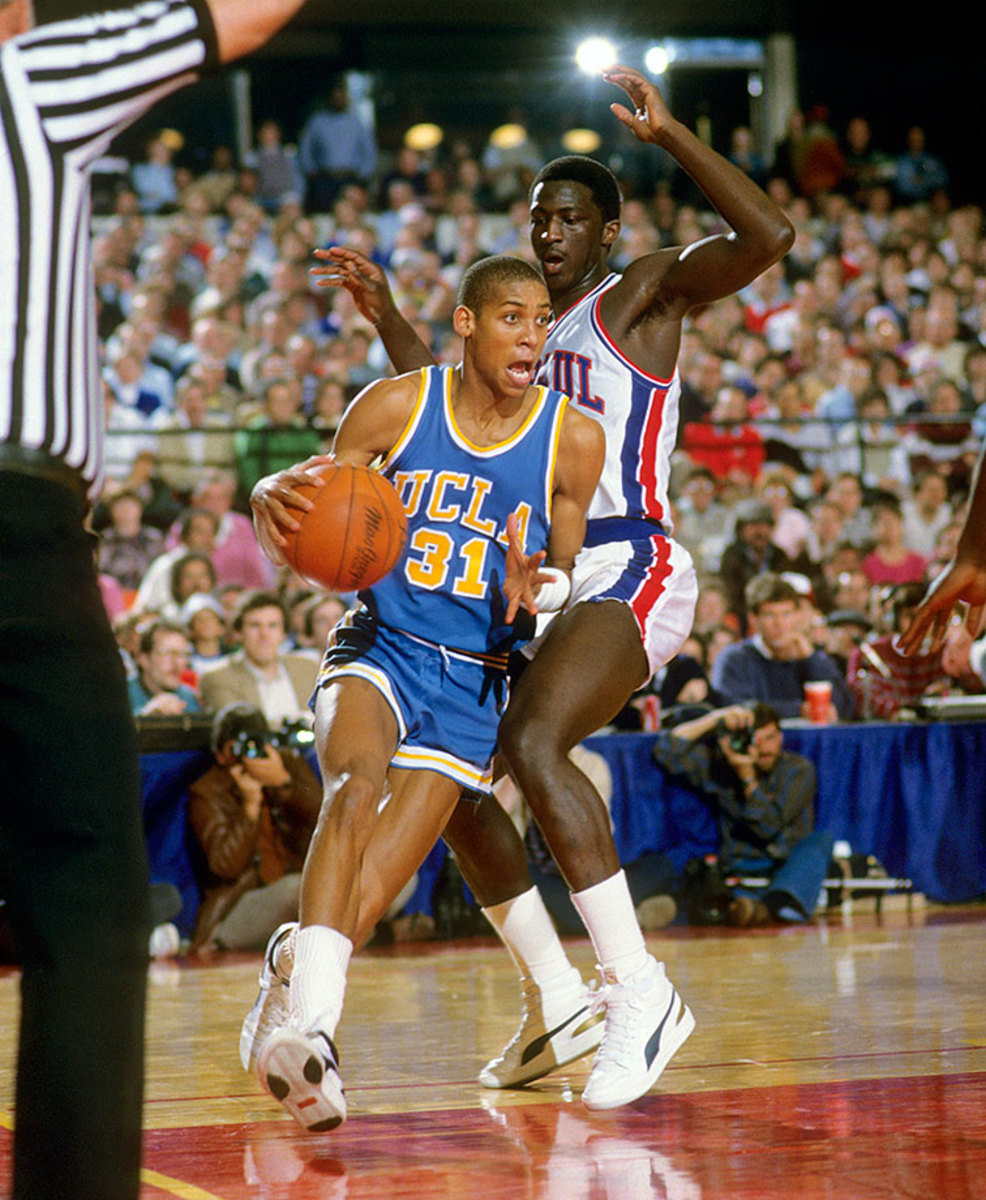
1984
Reggie Miller
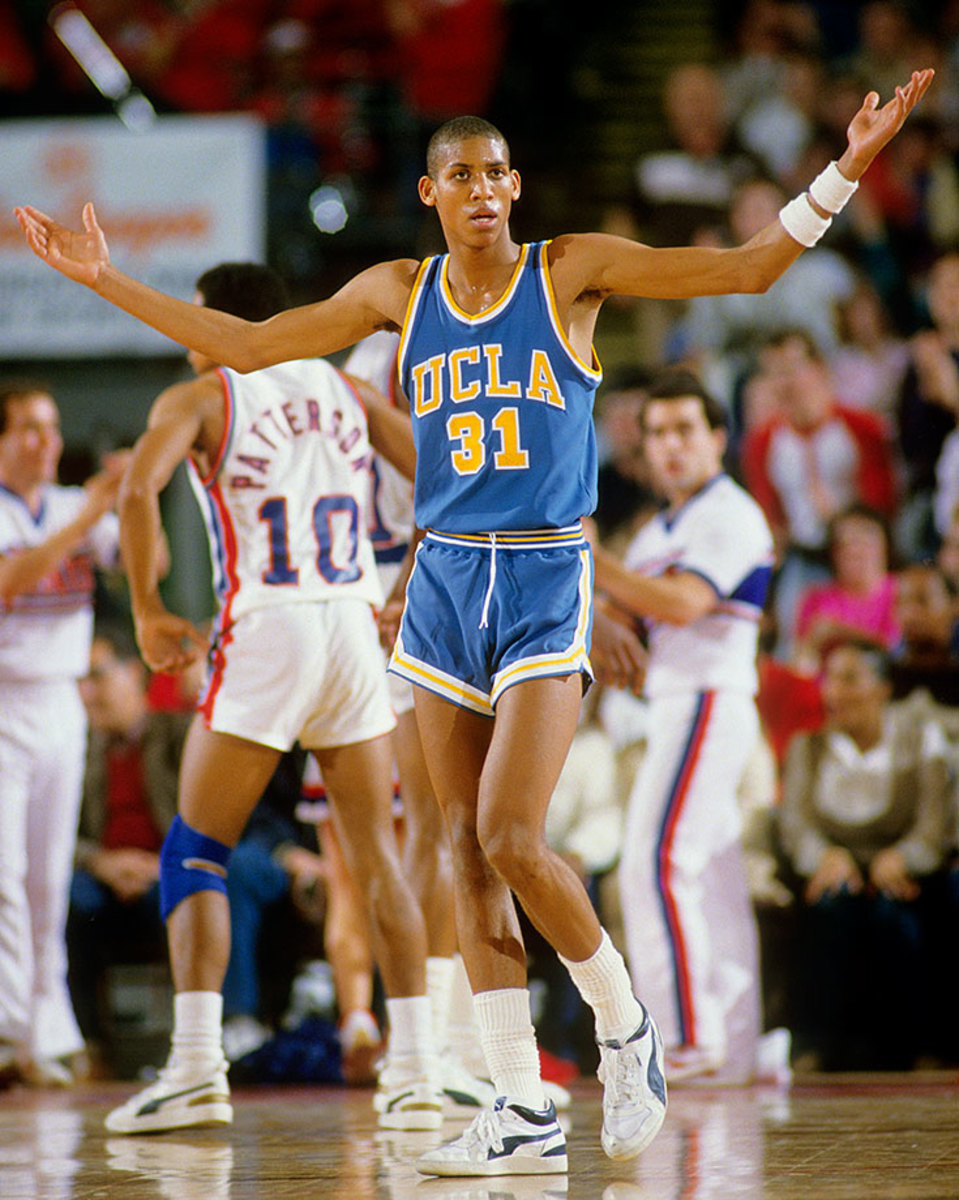
1984
Reggie Miller
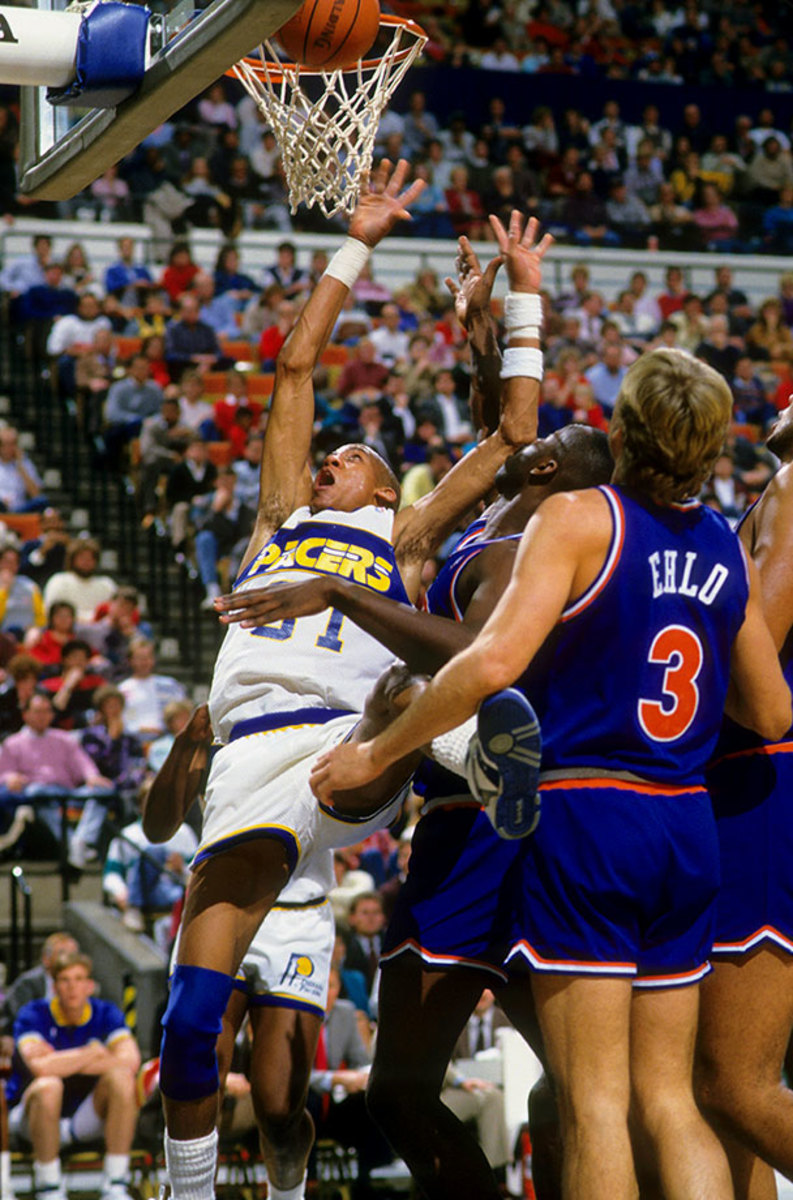
1987
Reggie Miller
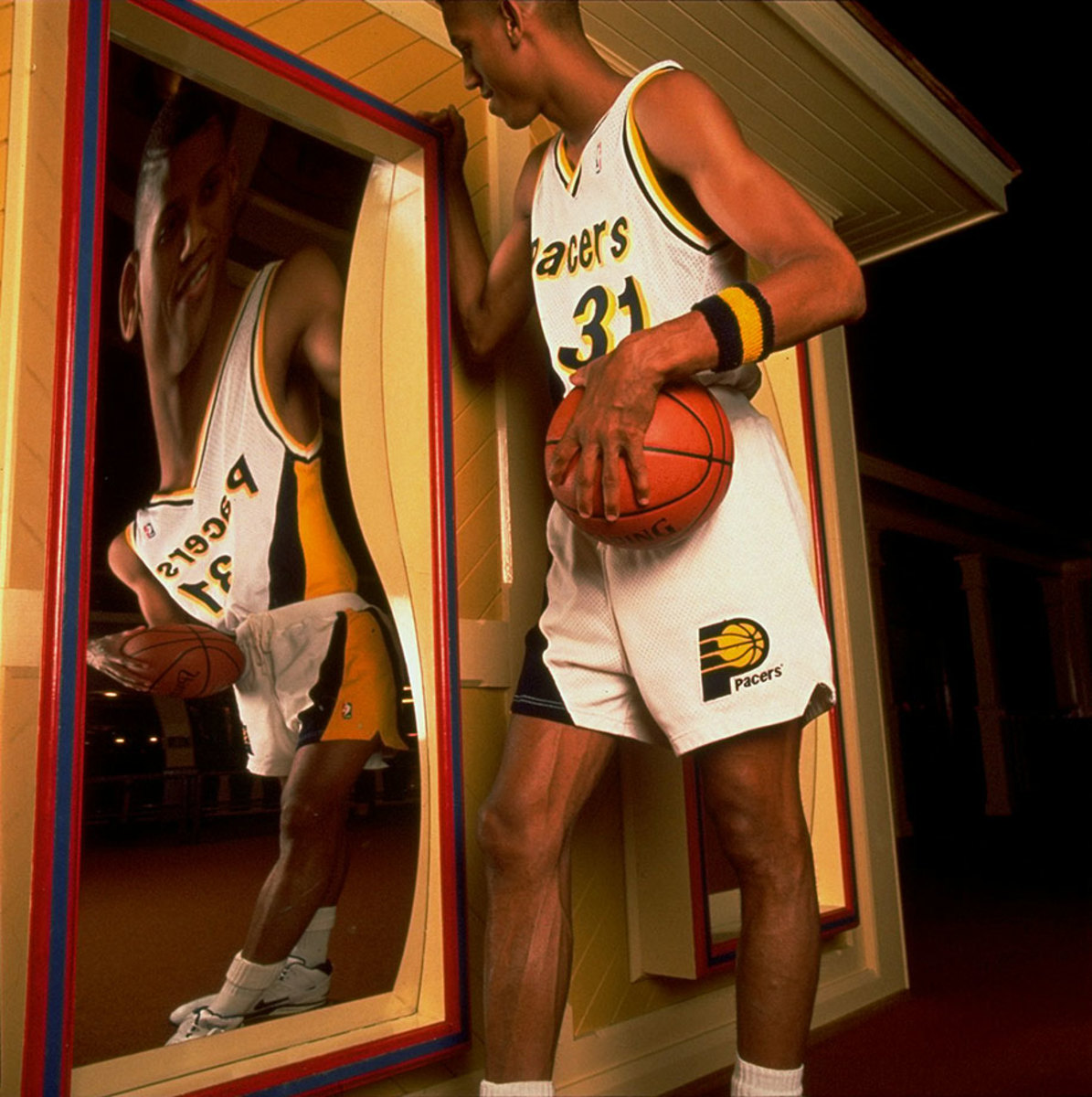
1991
Reggie Miller
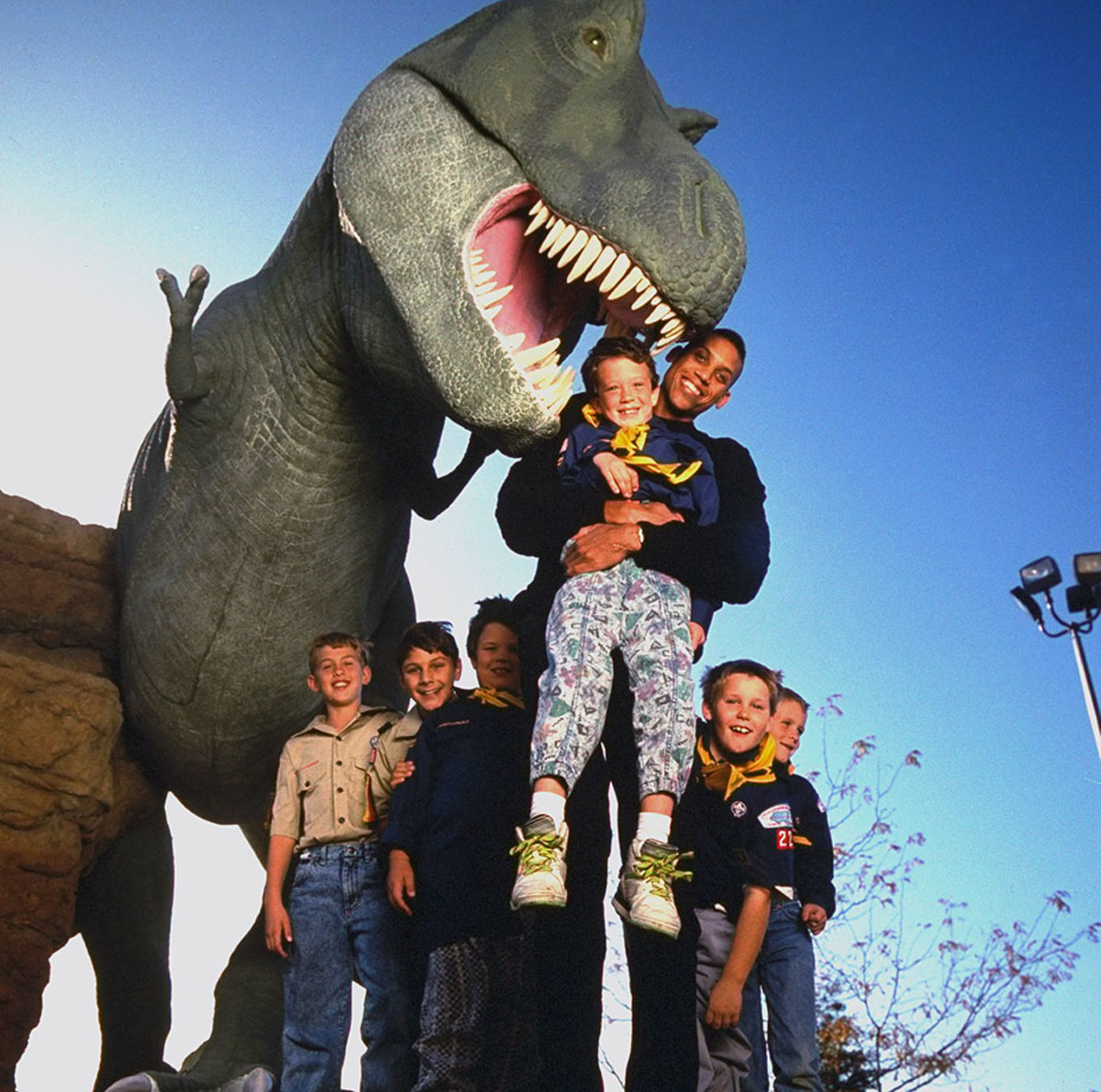
1991
Reggie Miller
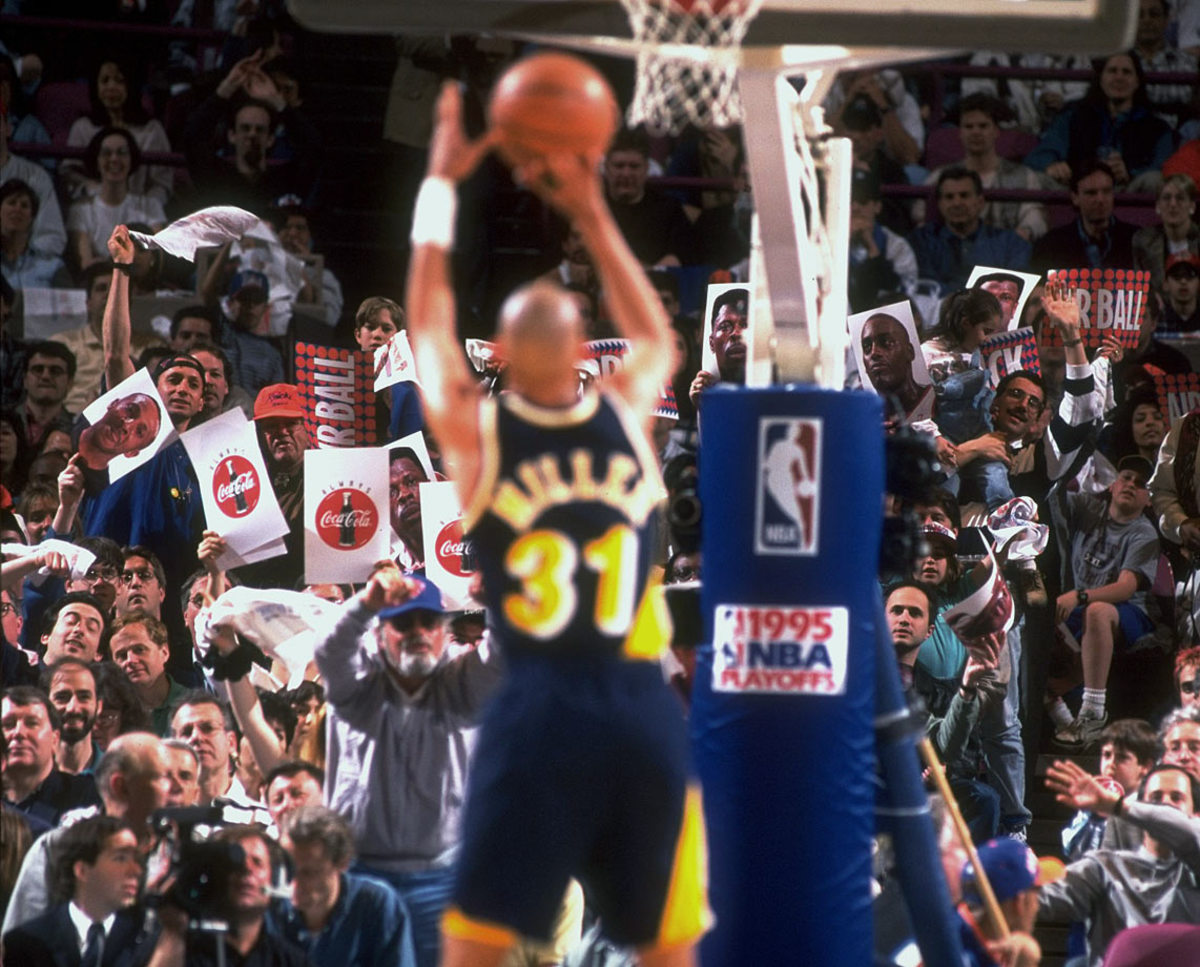
1995 Eastern Conference Semifinals, Game 1
Charles Barkley, Grant Hill, Anfernee Hardaway, David Robinson, Scottie Pippen, Mitch Richmond, Reggie Miller, Karl Malone, John Stockton, Shaquille O'Neal, Gary Payton and Hakeem Olajuwon
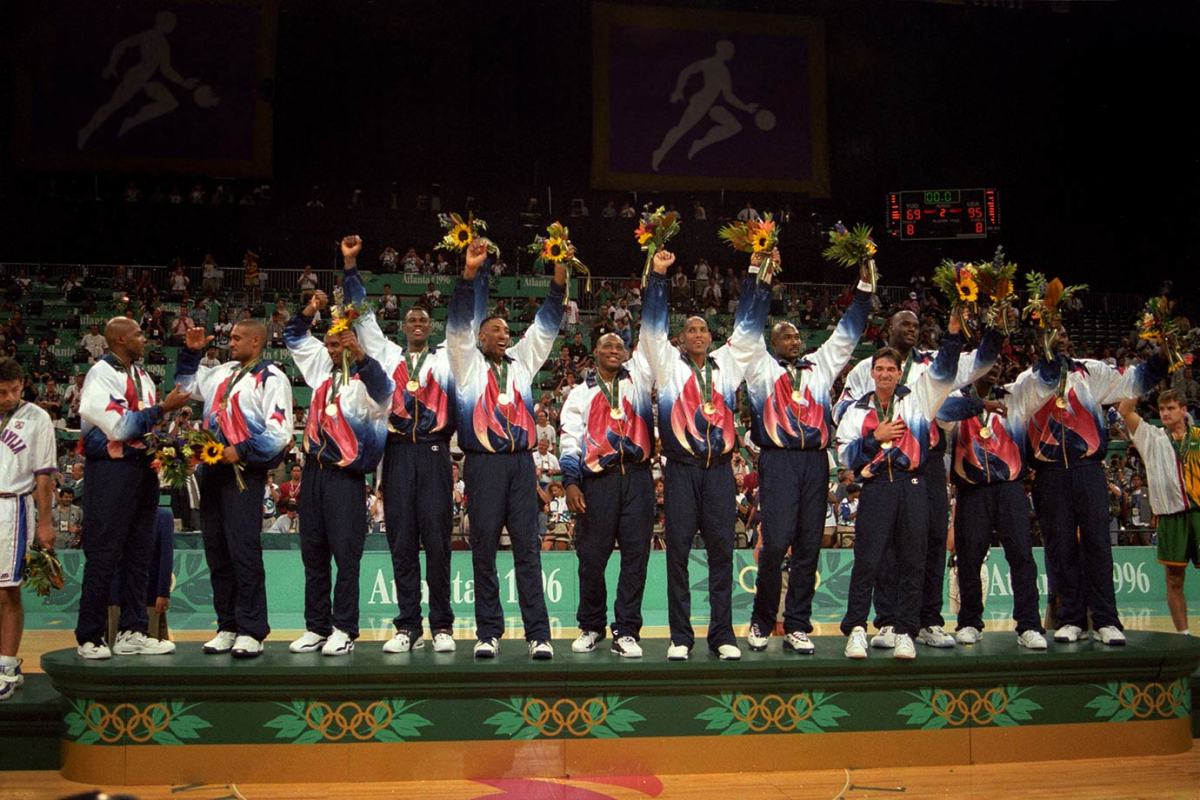
1996 Summer Olympics
Reggie Miller and Michael Jordan
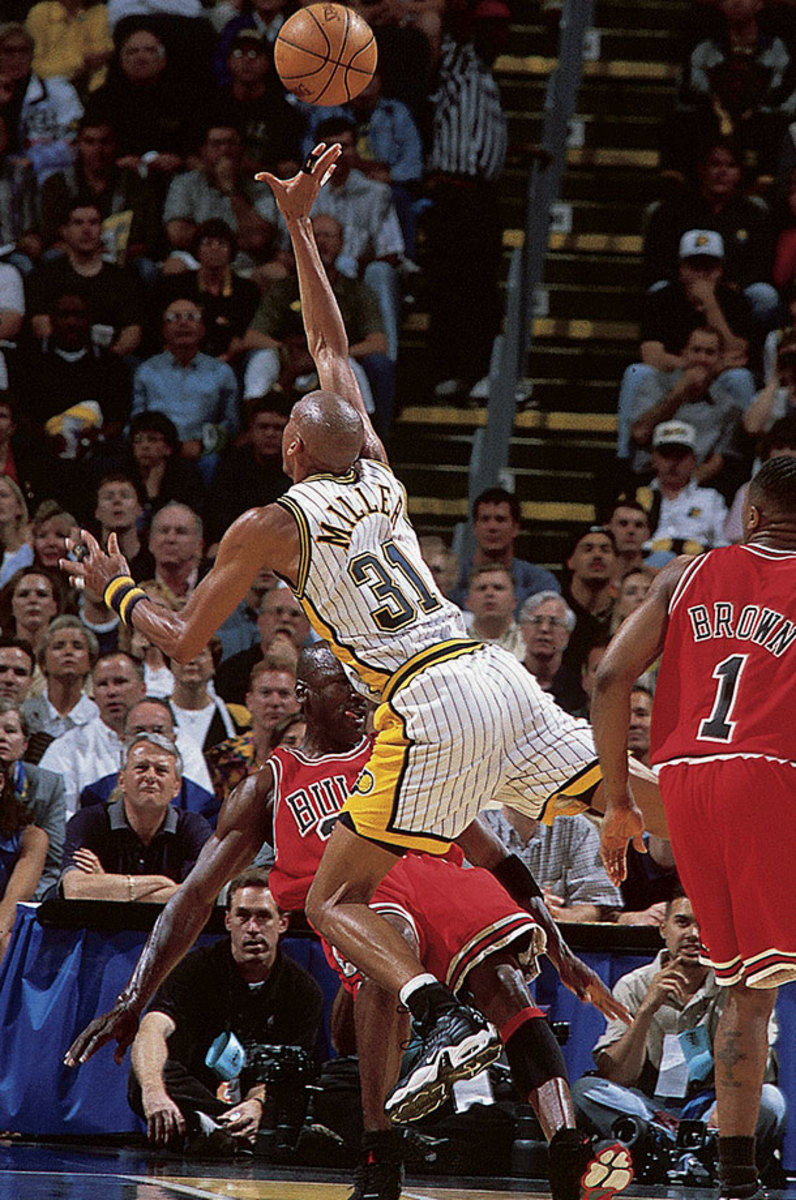
1998 Eastern Conference Finals, Game 3
Reggie Miller, Allan Houston, Kurt Thomas and Patrick Ewing
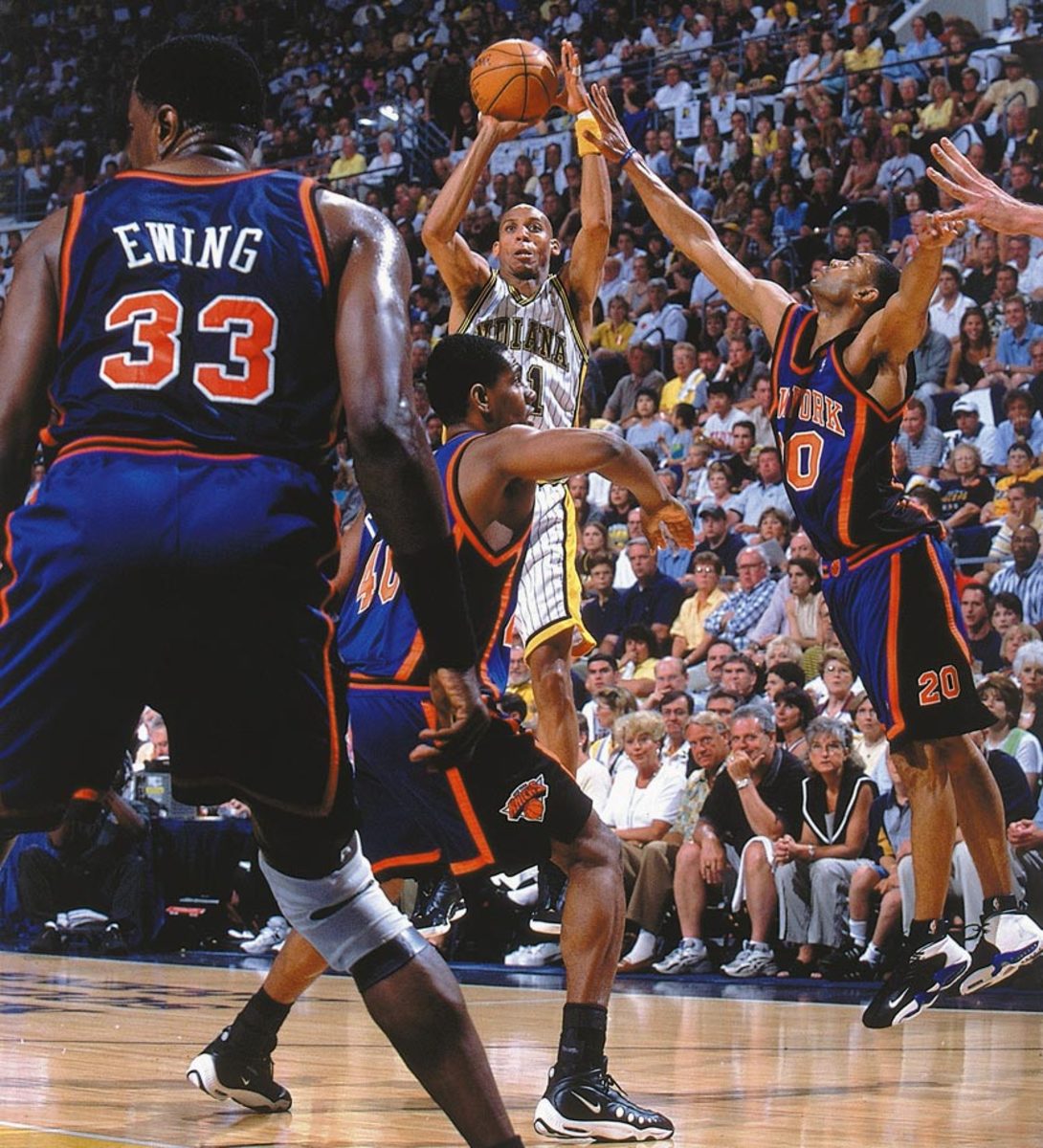
1999 Eastern Conference Finals, Game 1
Reggie Miller
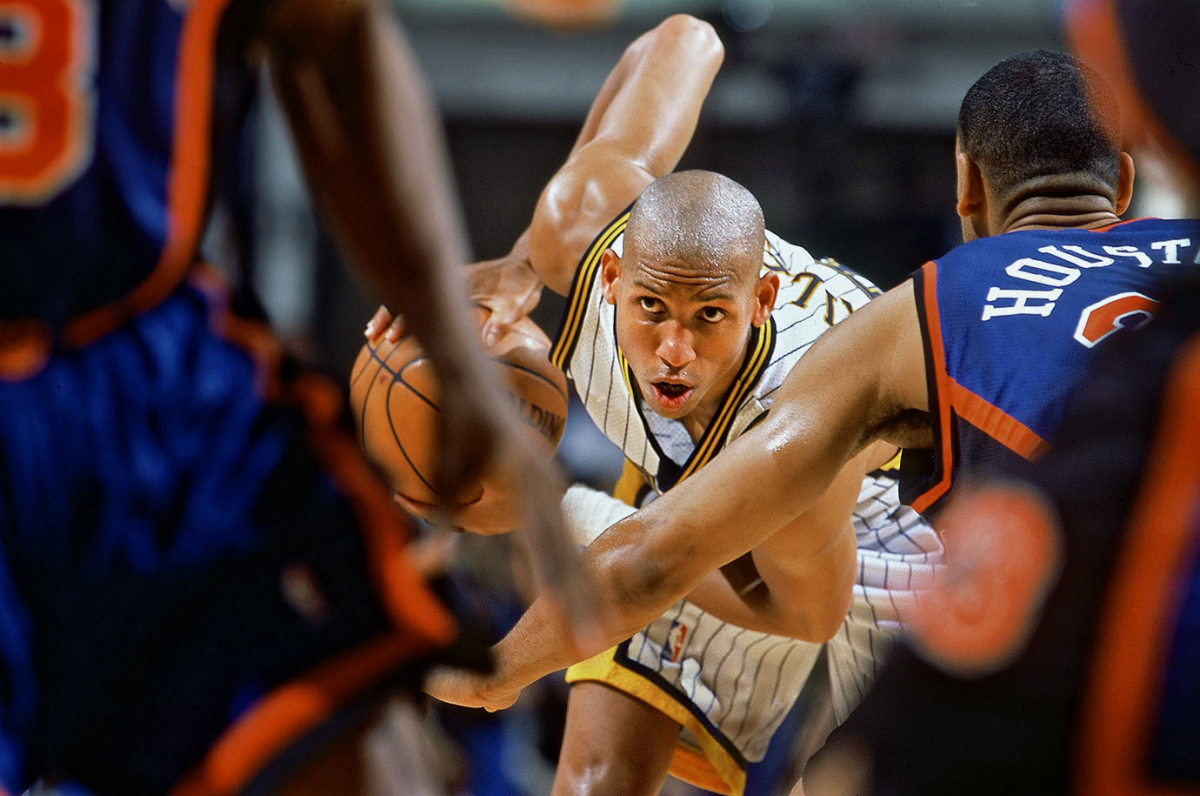
1999 Eastern Conference Finals, Game 2
Reggie Miller
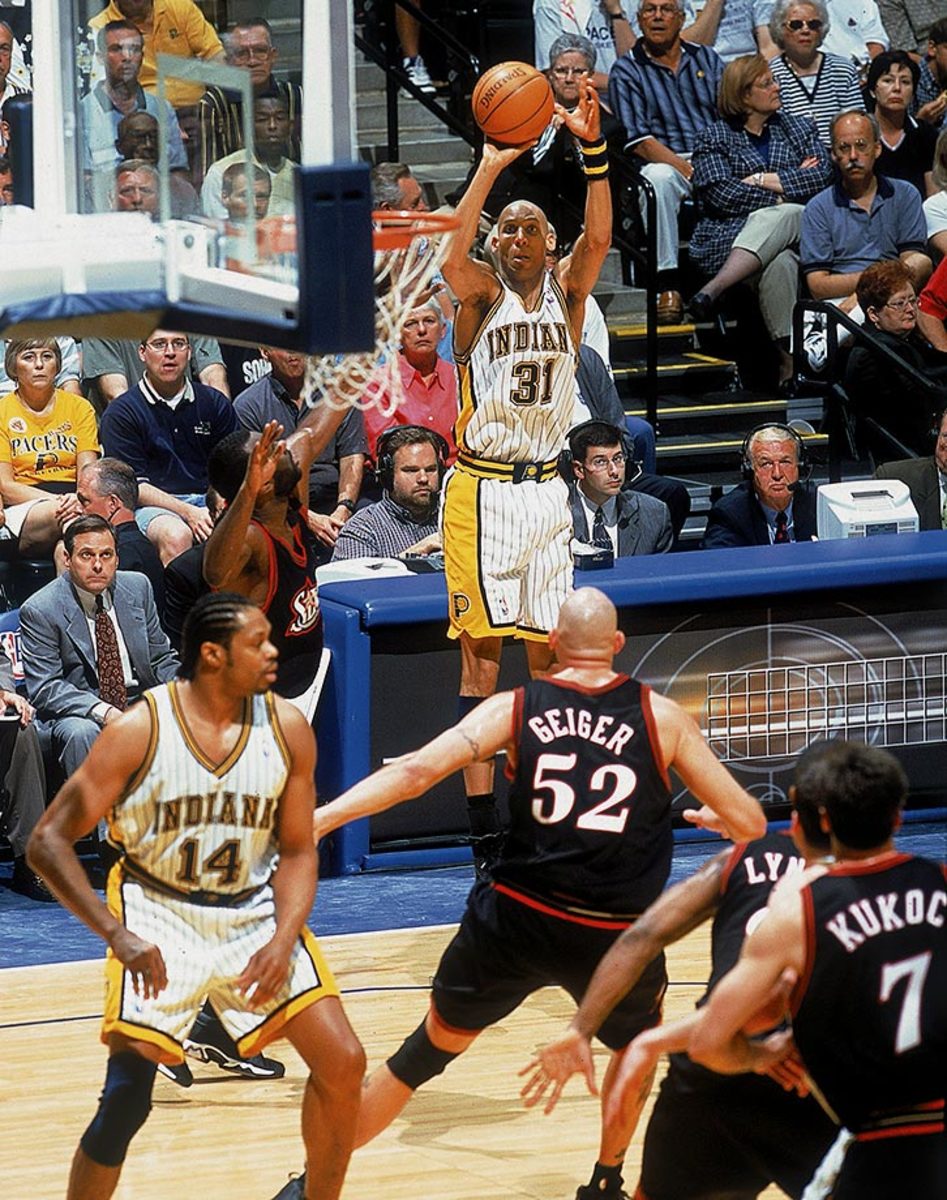
2000 Eastern Conference Semifinals, Game 1
Reggie Miller
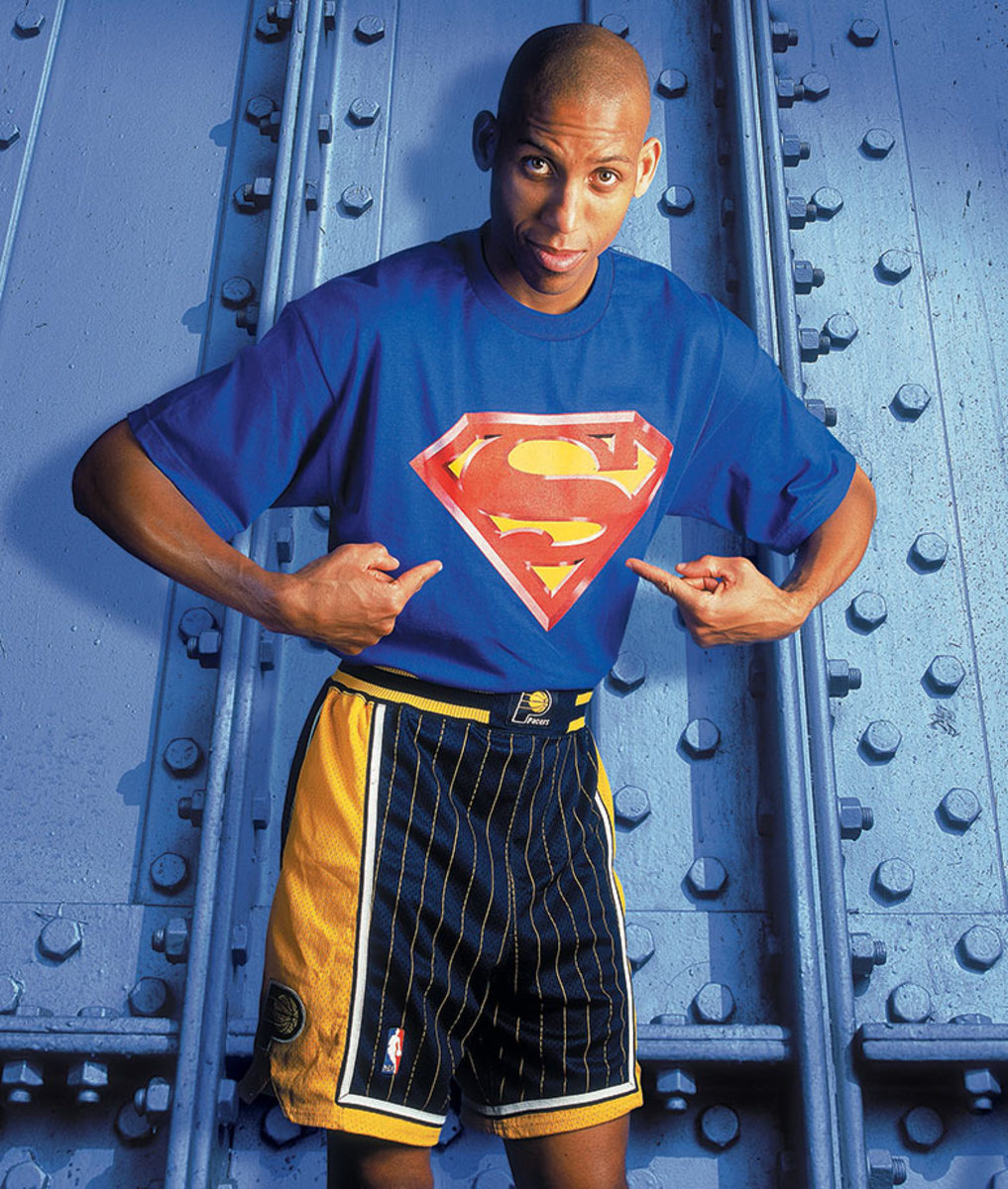
2000
Reggie Miller and Kobe Bryant
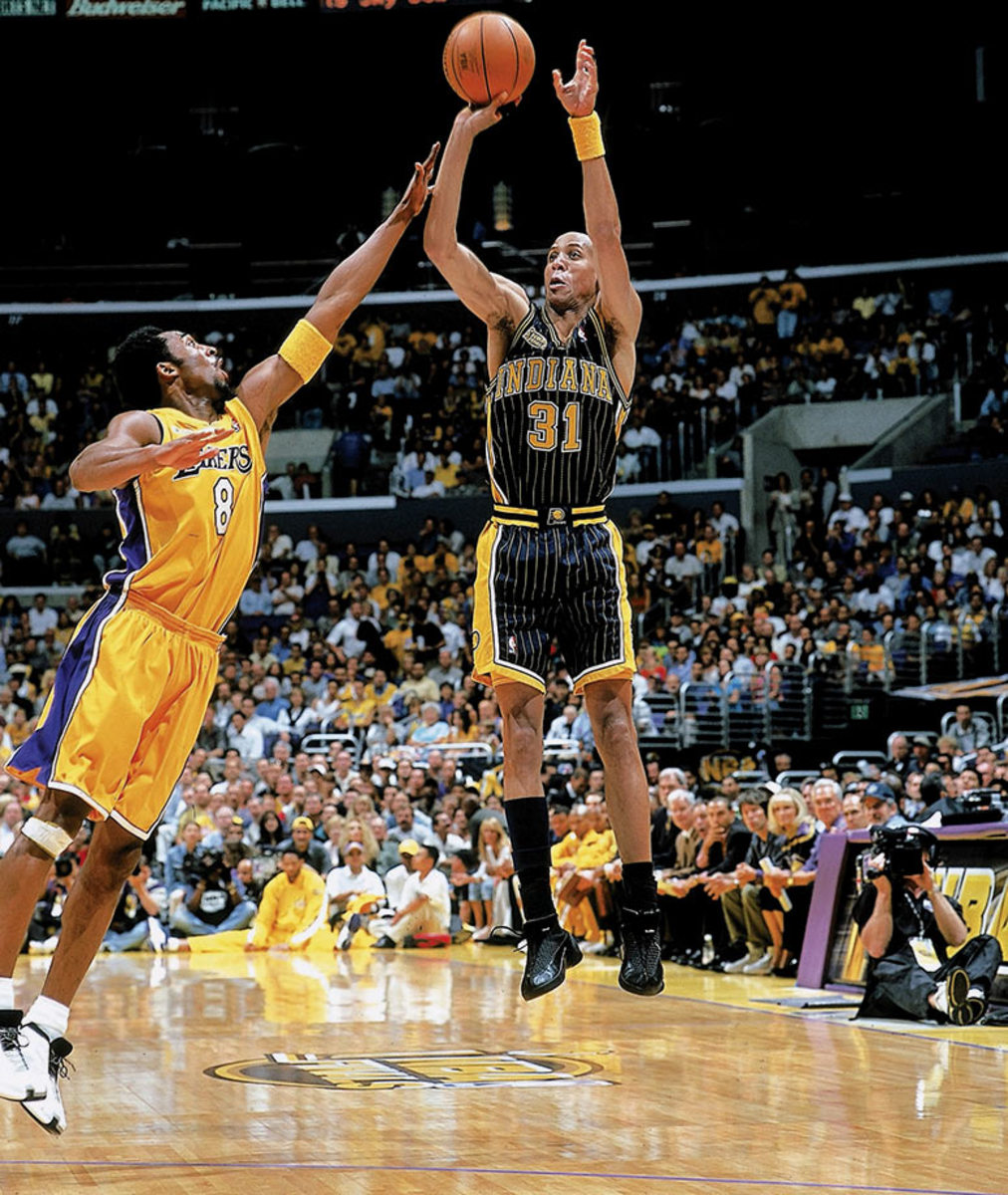
2000 NBA Finals, Game 1
Reggie Miller and Allen Iverson
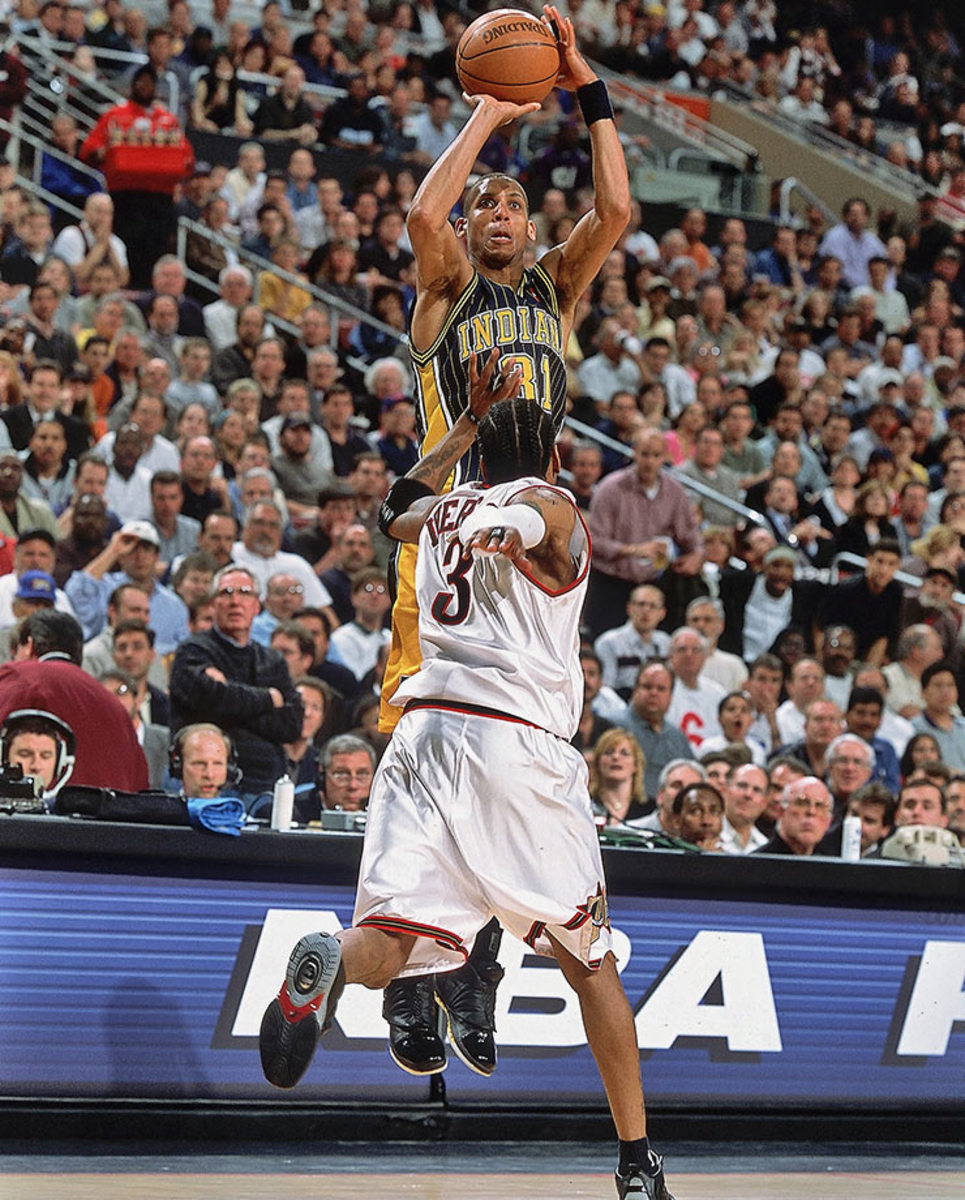
2001 Eastern Conference First Round, Game 2
Reggie Miller
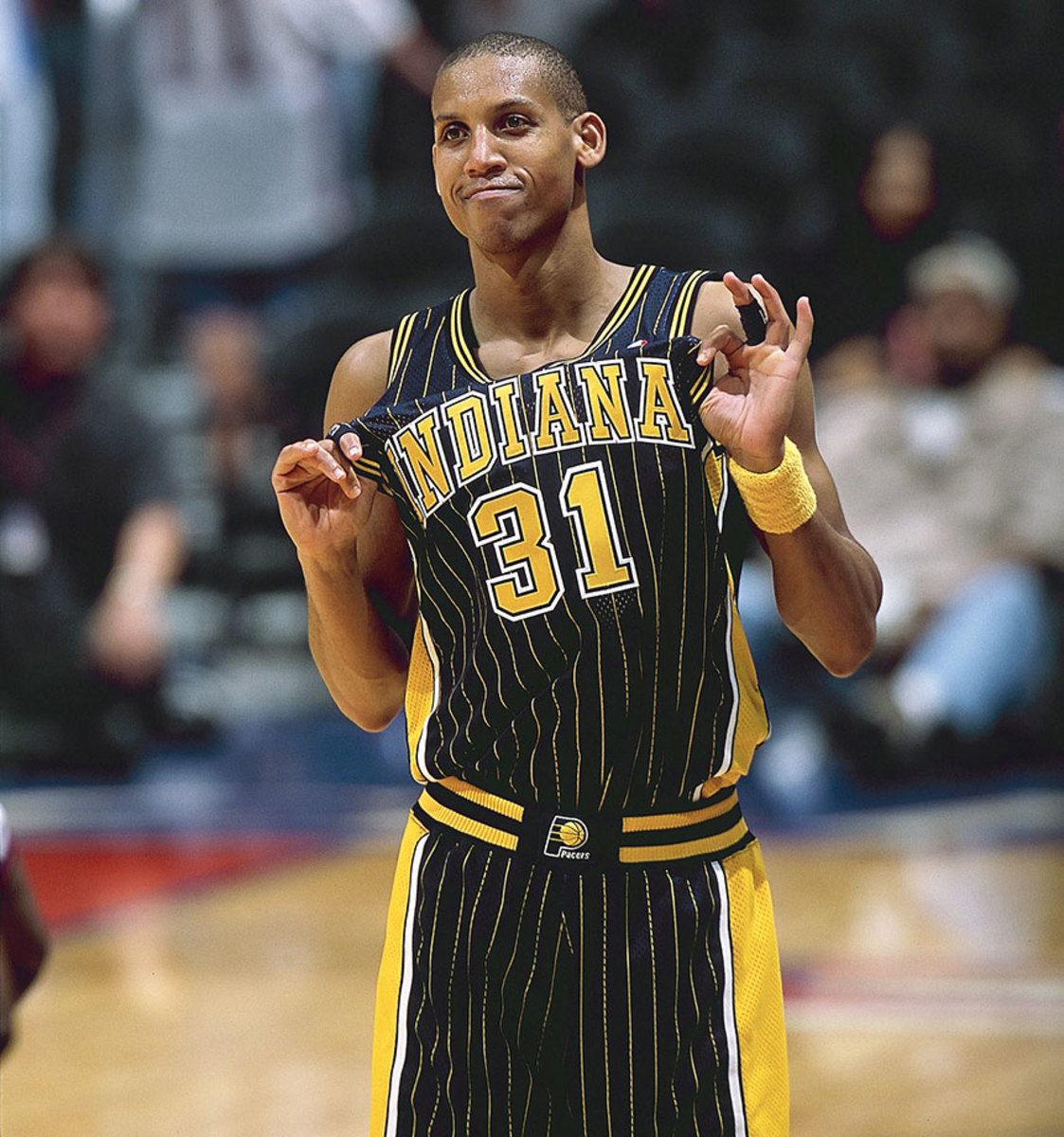
2002
Reggie Miller, Jeff Foster and Jermaine O'Neal
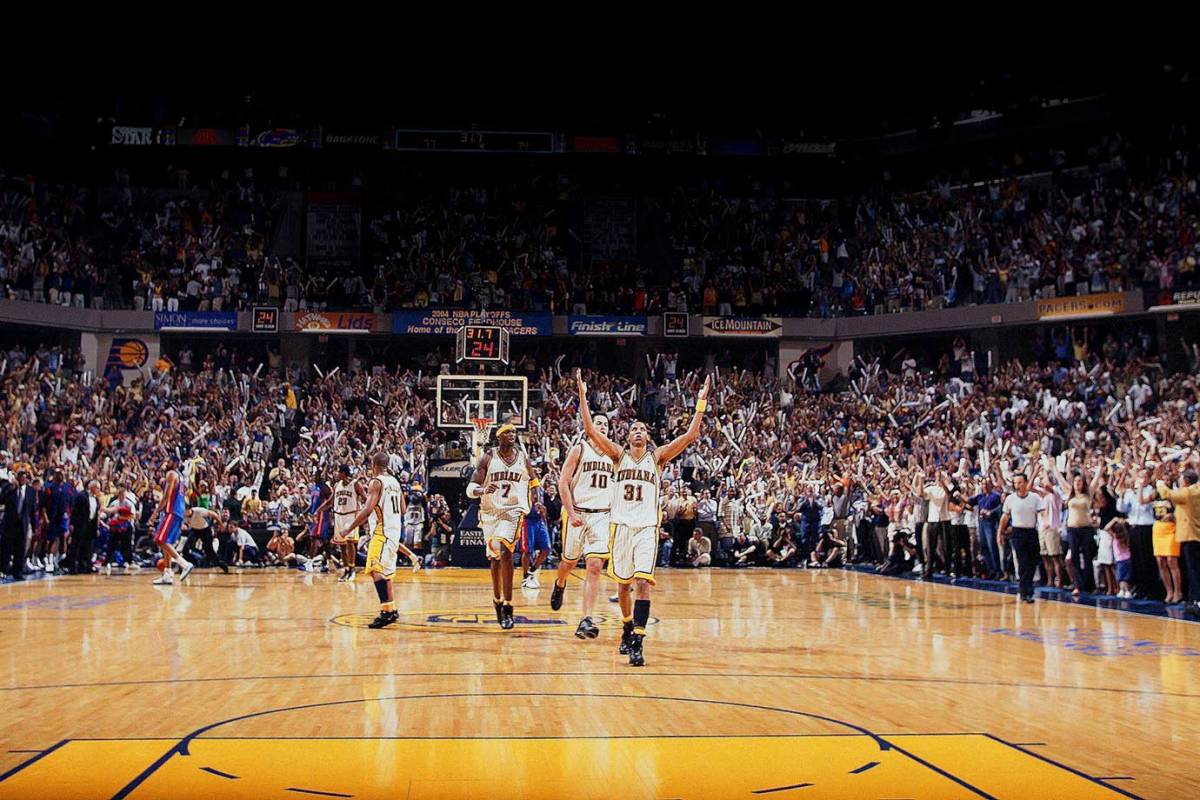
2004 Eastern Conference Finals, Game 1
Reggie Miller
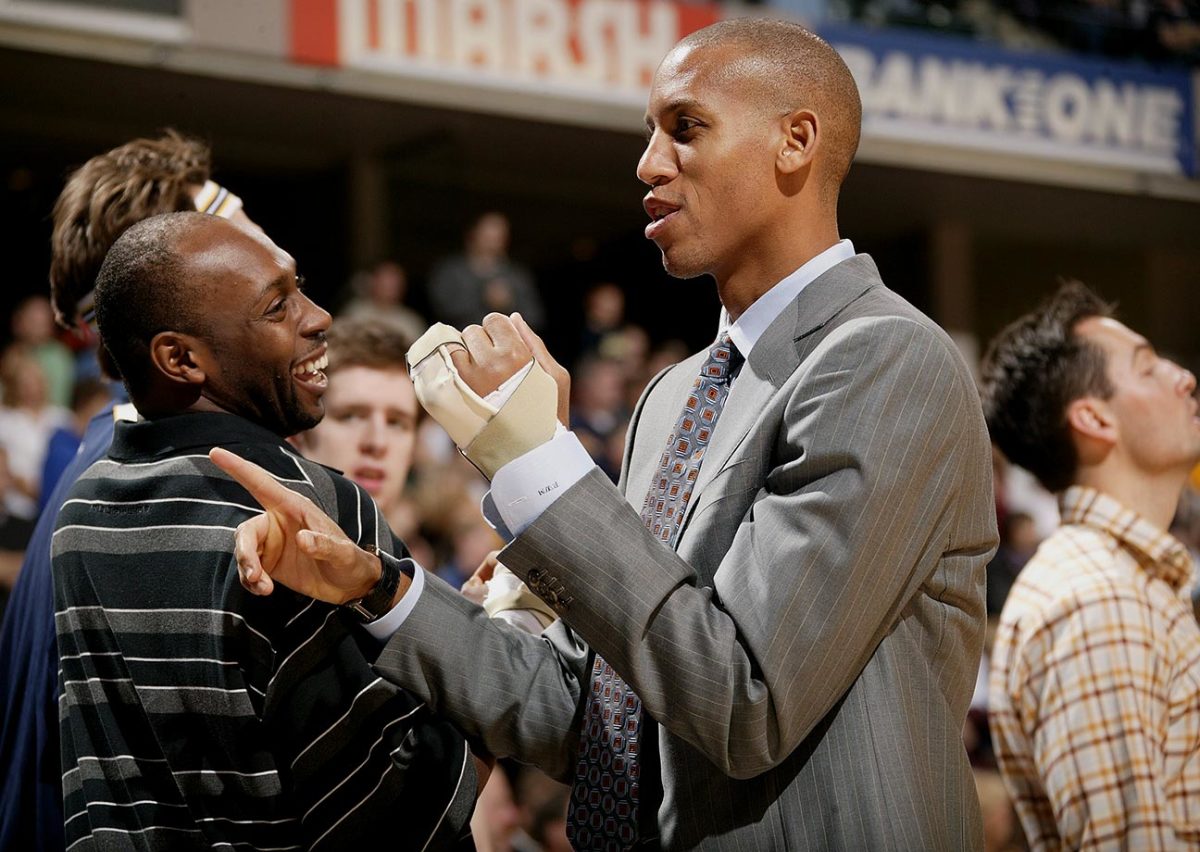
2004
Reggie Miller
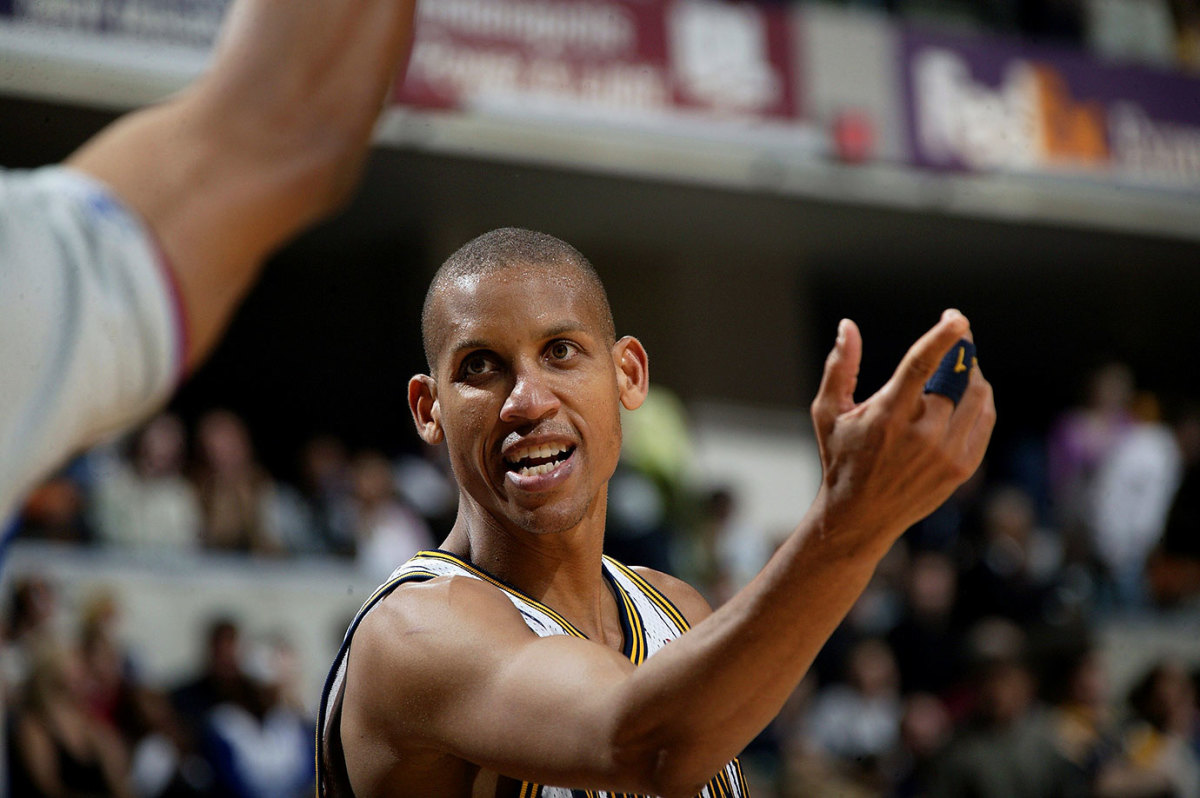
2005
Reggie Miller and Paul Pierce
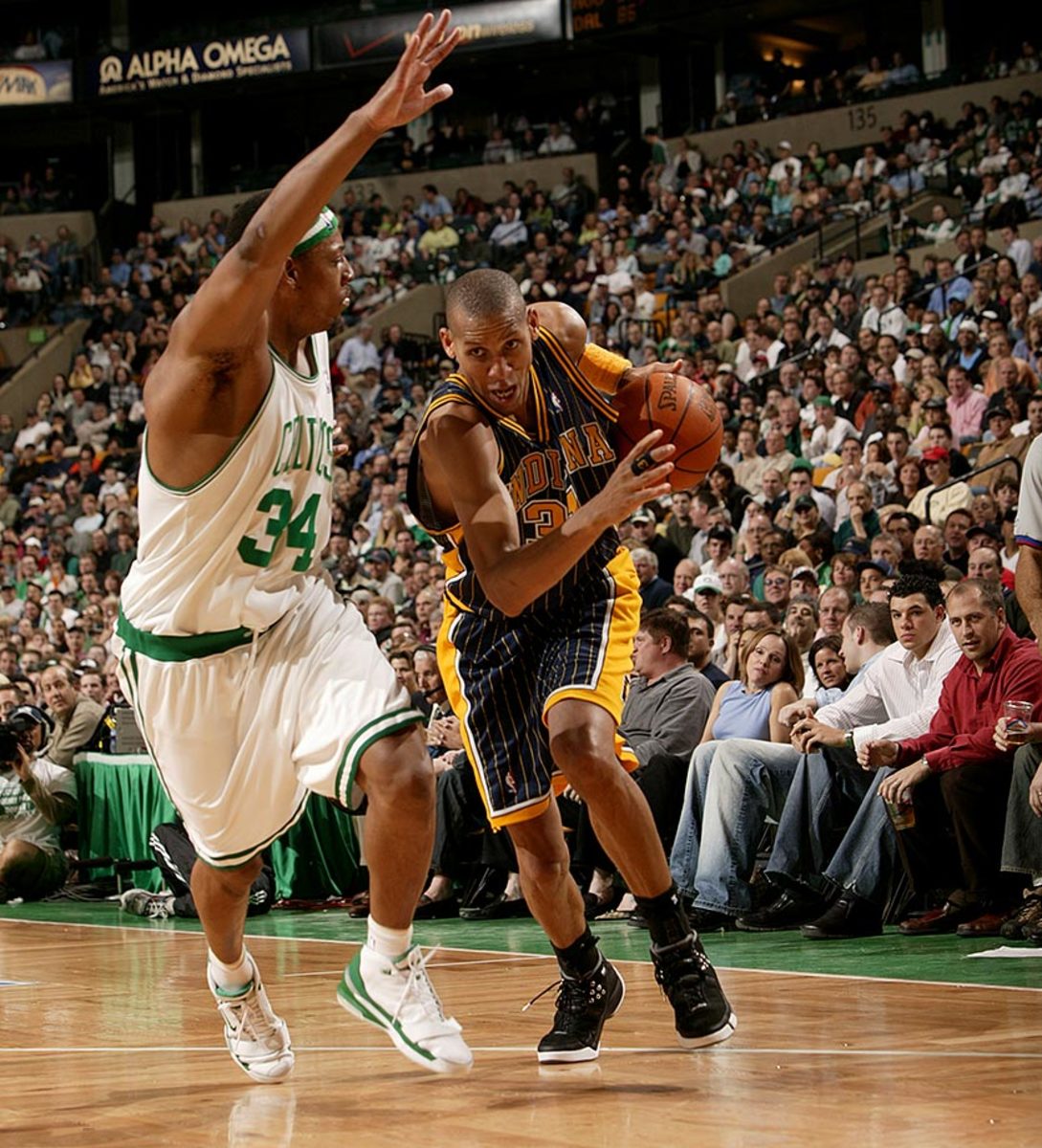
2005 Eastern Conference First Round, Game 1
Reggie Miller and Richard Hamilton
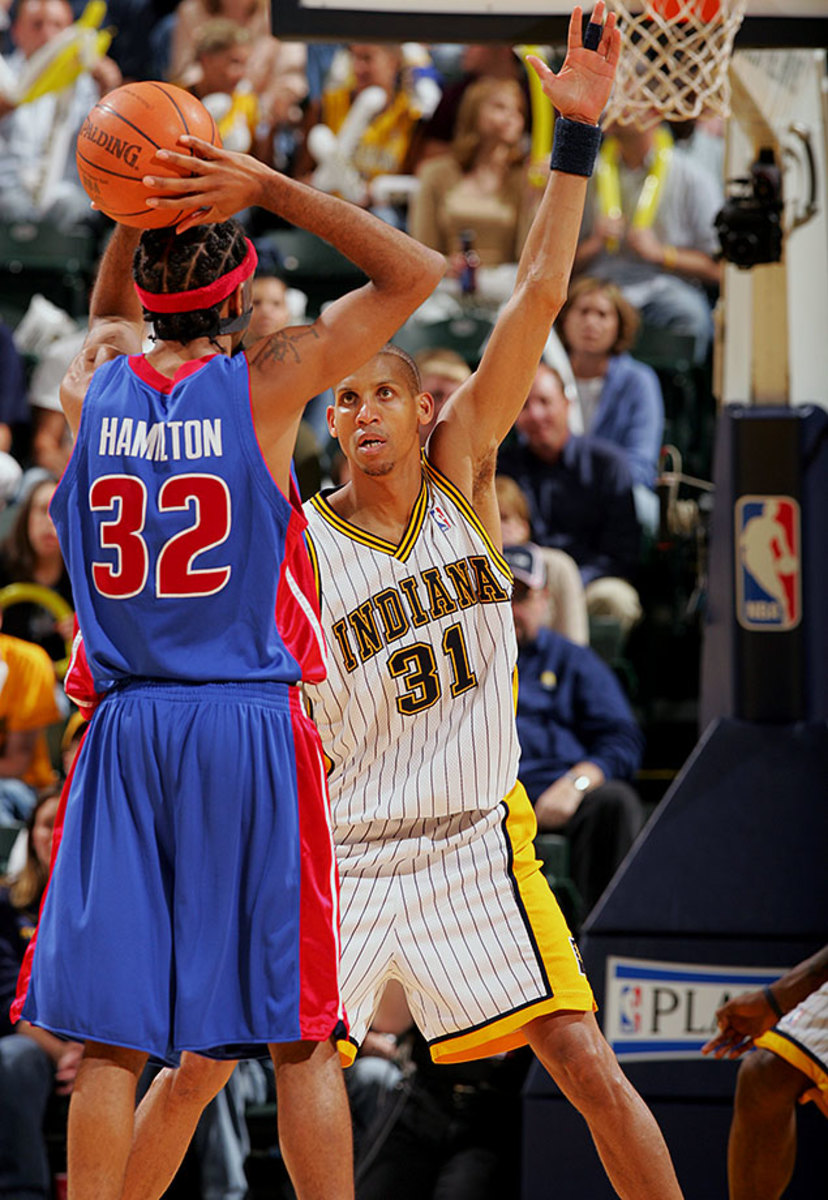
2005 Eastern Conference Semifinals, Game 4
Reggie Miller
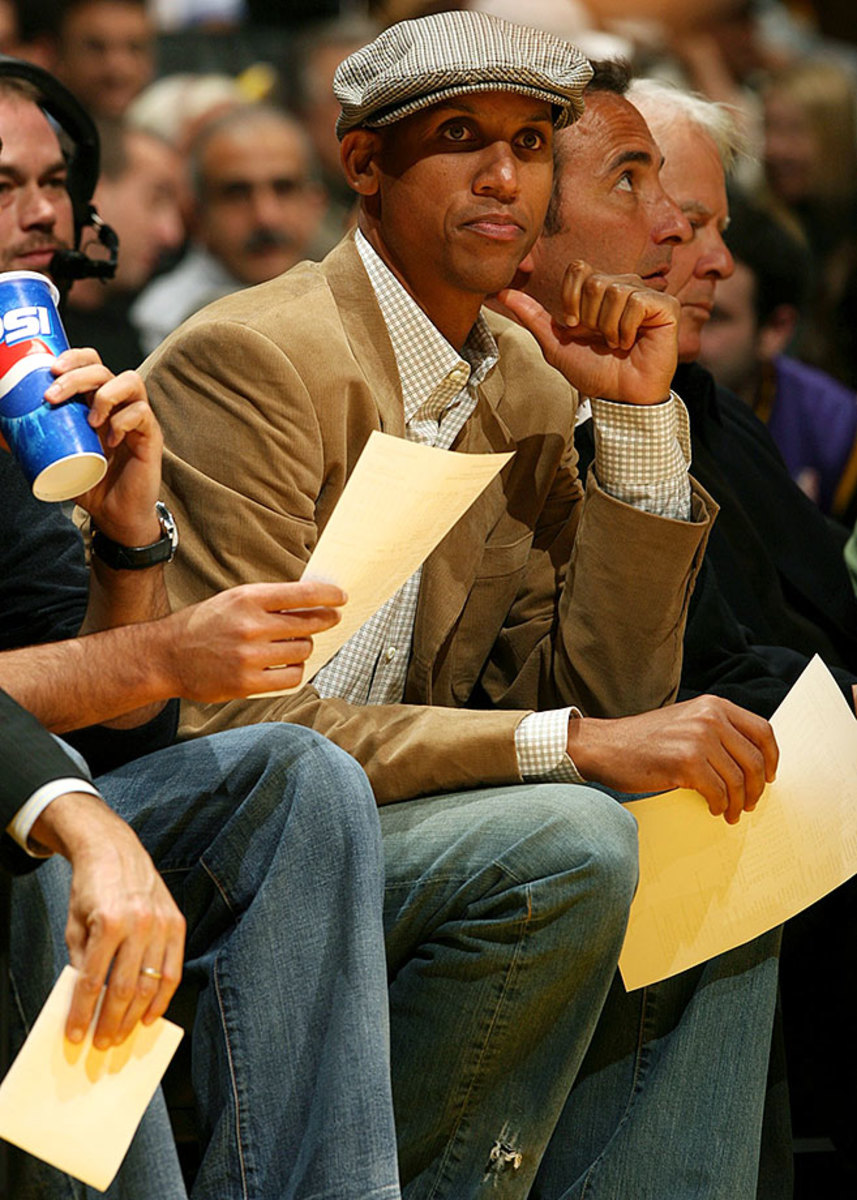
2006
Reggie Miller and Kevin Harlan
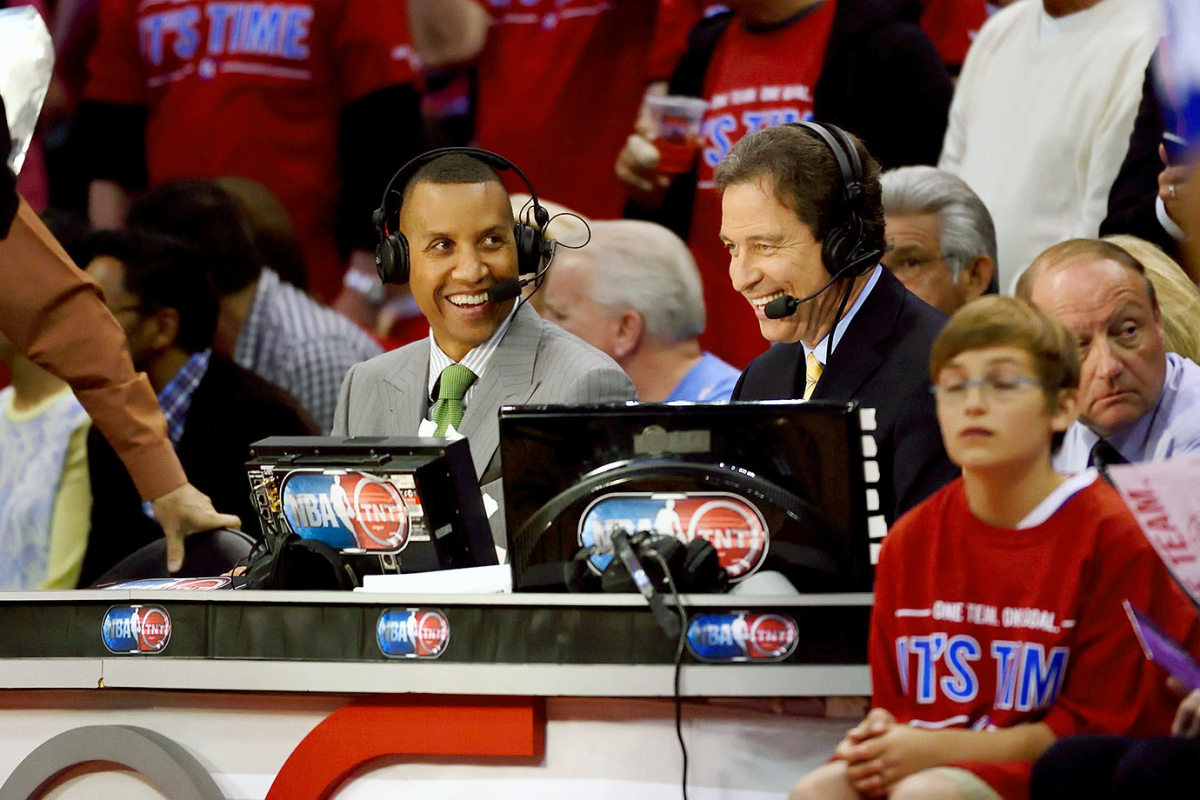
2014 Western Conference First Round
Reggie Miller
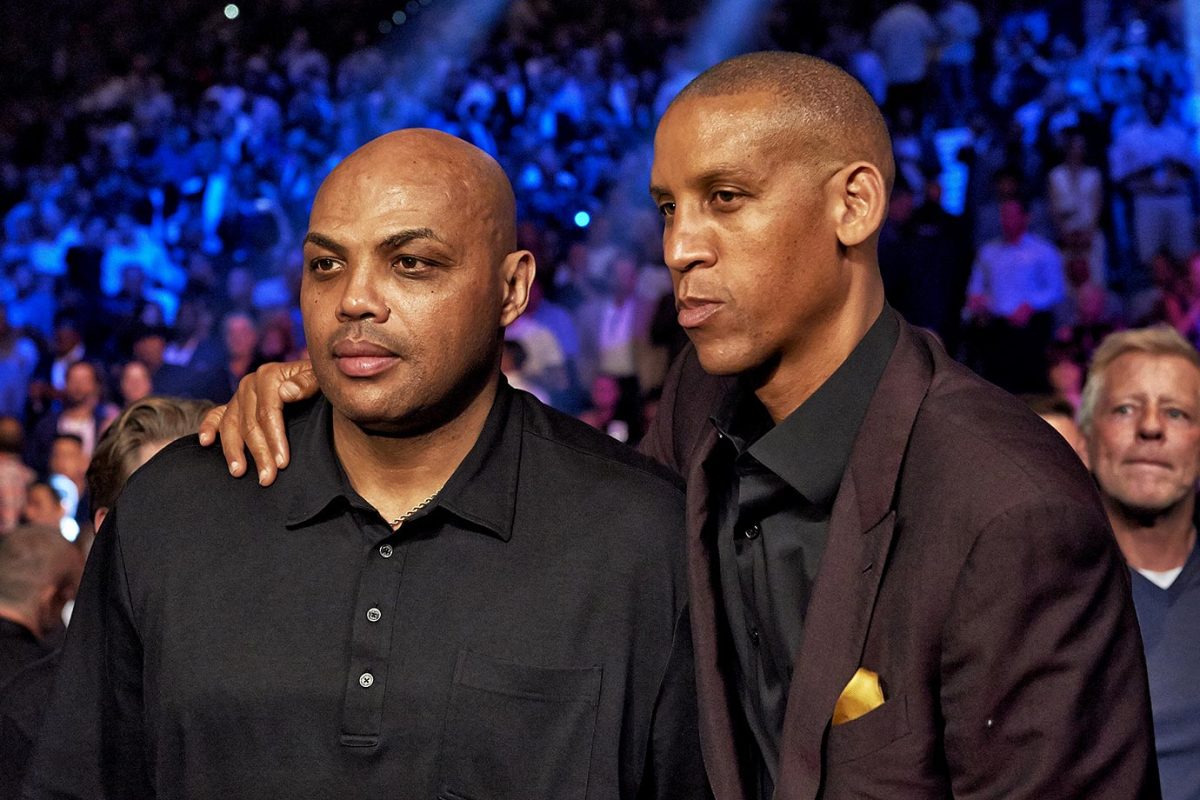
2015 — Floyd Mayweather vs. Manny Pacquiao fight
Reggie Miller
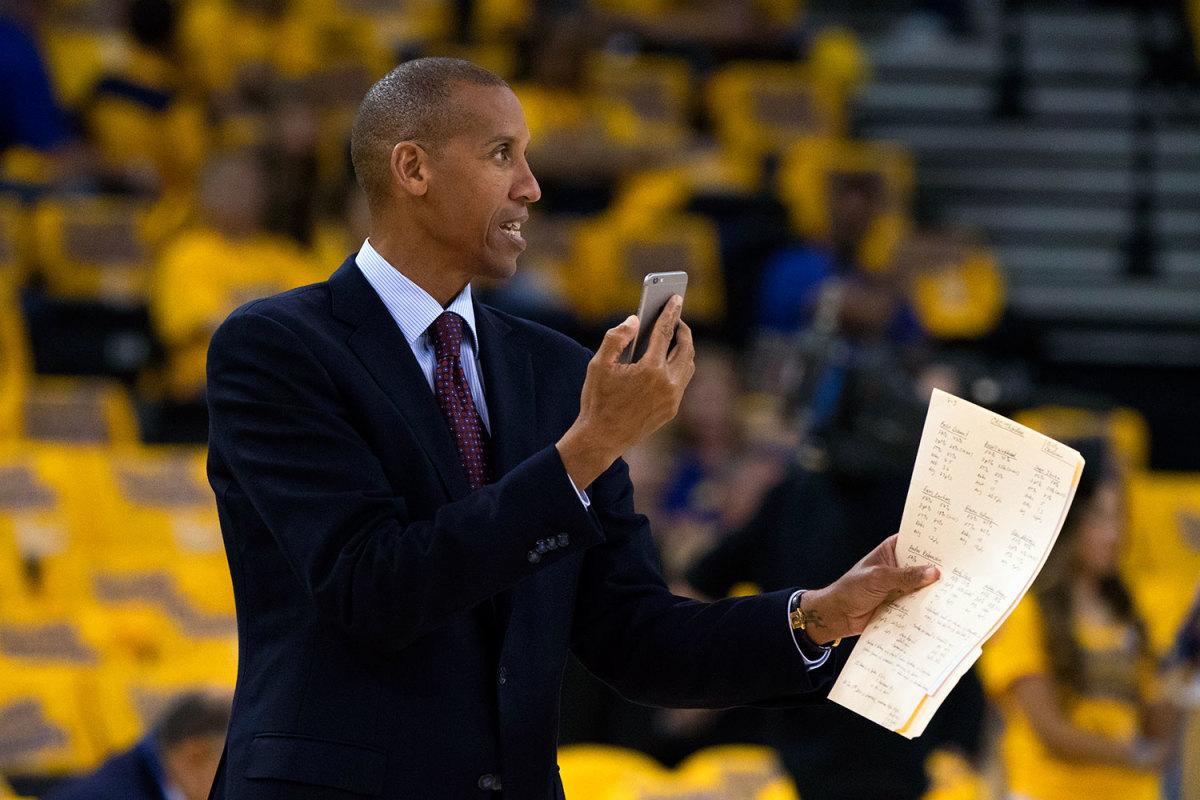
2016 Western Conference Finals
To a large degree the art of jump shooting remains a mystery. Miller admires several shooters—he names the Cleveland Cavaliers' Mark Price, the Phoenix Suns' Dan Majerle and Danny Ainge, the Denver Nuggets' Dale Ellis and the Detroit Pistons' Joe Dumars—but doesn't see much stylistic resemblance among them. If he wanted to be a textbook shooter, Miller knows that he would have to keep his right elbow in, tucked close to his body. But his elbow flies out to the side. Like many great shooters, he is somewhat superstitious and subscribes to a pregame routine that does not change: He always puts on his compression shorts first, then his game shorts, then his jersey, then a T-shirt over the jersey. Then he takes a variety vitamin pack as well as an Advil because—endorsement alert!—"I know I'm going to be talking a lot, and I don't want to get a headache."
It is then 90 minutes before game time, and he spends exactly 30 minutes shooting around, with Pacer assistant coach Billy King as ball retriever. Miller starts with the right wing and moves around the perimeter with no particular number or type of shots in the ritual, "just whatever I feel."
Yet he does not always treat his shooting like high church. One recent Pacer practice ended with Miller engaging his teammates in bank-the-free-throw and shoot-the-free-throw-lefthanded games for $200 and $100, respectively. He easily won the first and hit seven of 10 to earn a tie with John Williams in the second.
SI Vault: 23rd anniversary of Reggie Miller's 8 points in 9 seconds game
"The common denominator among shooters is that we all worked hard to develop our shot," says Miller. "I don't think kids do that today. These days you don't go to the playground to shoot your J. You go to try to dunk on someone's head. I did that, too, but I always brought my jump shot with me."
But some answers did evolve as the expansive Pacer captain, now clearly relishing the memory, reviewed the Game 5 tape.
Indiana trailed 70-58 entering the fourth period, and Miller to that point had made only six of 16 shots from the field. "But it was a good six for 16," he said without irony. "It seemed like every one of my misses had gone in and out. I made a decision that I was going to shoot us right back in the game or shoot us right out of it."
Miller's first basket of the fourth quarter came 50 seconds into the period, when, as he ran leisurely on the wing of a controlled fast break, he stepped back behind a pick set unconsciously by teammate Kenny Williams and hit a three-pointer. "The key to that was that I had studied the Knick defense," said Miller. "Their strategy on fast breaks is to retreat to the paint and then to spread out. So, I trotted up slowly, saw [Knick defender John] Starks back in the paint playing penetration, used Kenny as a screen and got off the three. Easy."
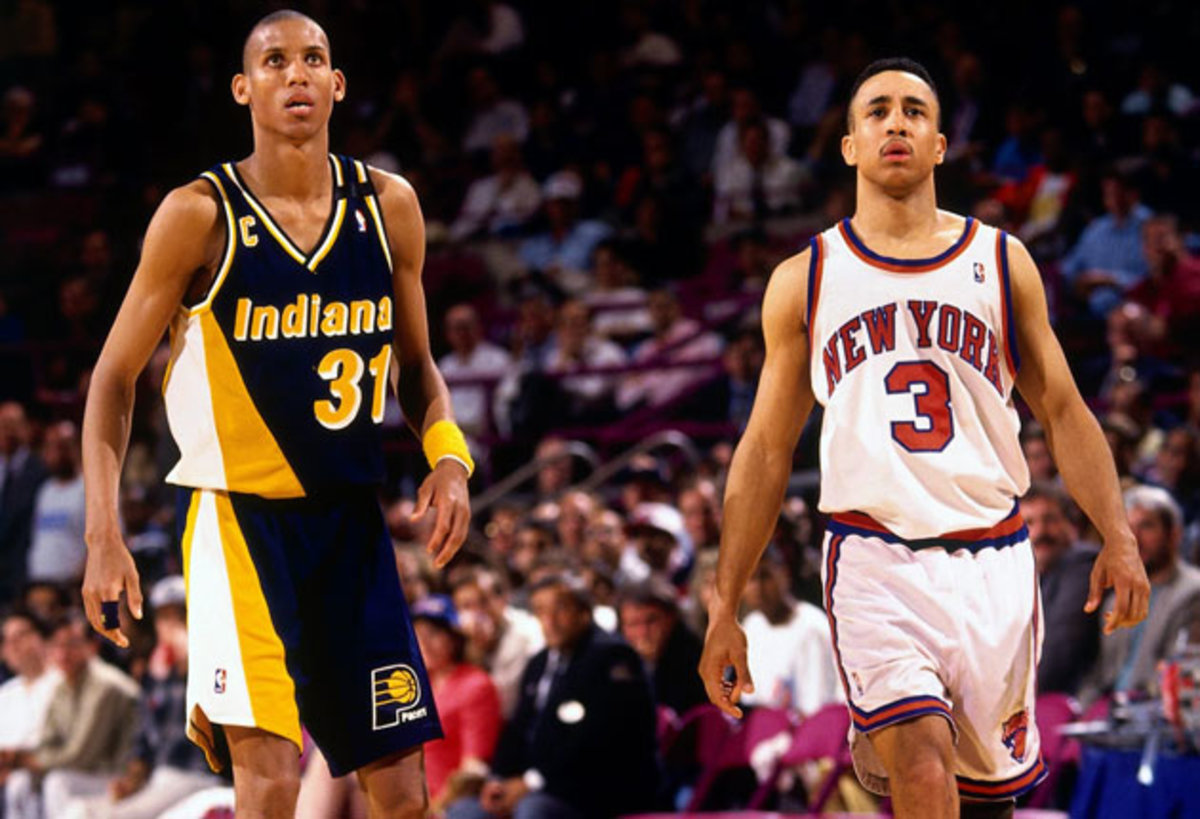
Miller's second basket came on an in-bounds play at 10:23. Starks had been replaced by 6'5" guard Hubert Davis, who was now assigned to cover Miller. "I was aware they had made a lineup change, of course, and I knew I could run circles around Hubert," said Miller. He found himself out on the right side all alone and took a pass from Williams for another three-pointer.
"Our offense has no set plays to get me a three, except if we need one at the end of the game or something like that," said Miller. "But in this case, I could see that Tank"—the Pacers' muscular frontcourtman LaSalle Thompson—"was going to get Davis, pick him off and take him right out of the way. So I floated out and was all alone. My theory on shots when I'm all alone is that I should make 70 percent of them. I don't think other players set standards that high. That's a mistake."
Miller's third field goal came at the 9:14 mark, when he drove right on 6'2" Knick reserve guard Greg Anthony, pulled up, pump-faked and swished a 15-footer. "I feel I have an advantage on most defenders because of my height [6'7"] and long arms, and when I keep the ball up I'm tough to stop," said Miller.
"I can remember my shot in sixth and seventh grade—a one-handed push shot that started way down by my hip. It wasn't until my sophomore year in high school that I got a real jump shot."
Miller's fourth basket was a 20-footer from the left corner with no Knick within six feet of him. Starks, who was now back guarding Miller, got caught in a pile of bodies as Miller, using various picks, crossed from the right side to the left. The play clearly illustrated the fact that half of a shooter's battle is running an obstacle course as he attempts to get open. "Most teams' strategy in stopping Reggie is to beat him up before he gets the ball," says Pacer assistant coach George Irvine. Miller professes not to care. He says he has gotten stronger by working in the weight room (though you can't tell it by his pipestem arms) and enjoys the hand-to-hand combat that goes along with being a jump shooter.
2015-16 NBA schedule: Top 50 games
"There are all sorts of techniques you can use, but they're hard to talk about because you have to see them develop in the game," says Miller. "For example, an aggressive team like the Knicks is always stepping out and giving you a shot, chucking you as you go by. Your own guy chucks you. Then, as you run past a screen, the guy guarding the screener steps out and chucks you. That's O.K. Sometimes if you delay, then suddenly speed up, you can make the defender hit his own guy. That's fun.
"Or, if he's real aggressive, he's going to take himself out of position if you use change of pace. It's all reading the court. It's part of the jump shooter's game."
That fourth field goal also showed Miller's relative disregard for the three-point line; he could have stepped back and taken a trey but did not. "I never want to be conscious of the line," he said. "I never get ticked off, like some guys do, if my foot's on the line and I get a two instead of a three. It's too difficult just to get open. My eyes are looking ahead of me, to the point where I'm going to get the pass and take my shot, so they can't be looking down at the floor.
"Will it be different with the new three-point line? It might be. I don't like it," Miller declared. "There'll be more of a tendency to look down now and see where you are, and I don't think that's a good thing."
The fifth shot was remarkable. Miller found himself directly in front of the basket, 27 feet away. He still had his dribble, and he saw Thompson heading toward him to set a possible screen, but he just squared up and let fly. The ball whistled through the net cleanly, as do most of Miller's field goals, "like somebody drops the ball straight down from the center of the arena," as Pacer president Donnie Walsh puts it. The three-pointer gave Indy a lead, at 75-72, that it never surrendered.
"Shooting is concentration and rhythm," said Miller, "and sometimes it is pure confidence. Sometimes things are going so right you feel you can will the ball into the basket. My least favorite spot on the floor with the old three-point line—there are no hard spots with the new distance—was right in front of the basket, but I never had a doubt about this one.
GALLERY: Best NBA players by jersey number
Best NBA Players by Jersey Number
00 — Robert Parish
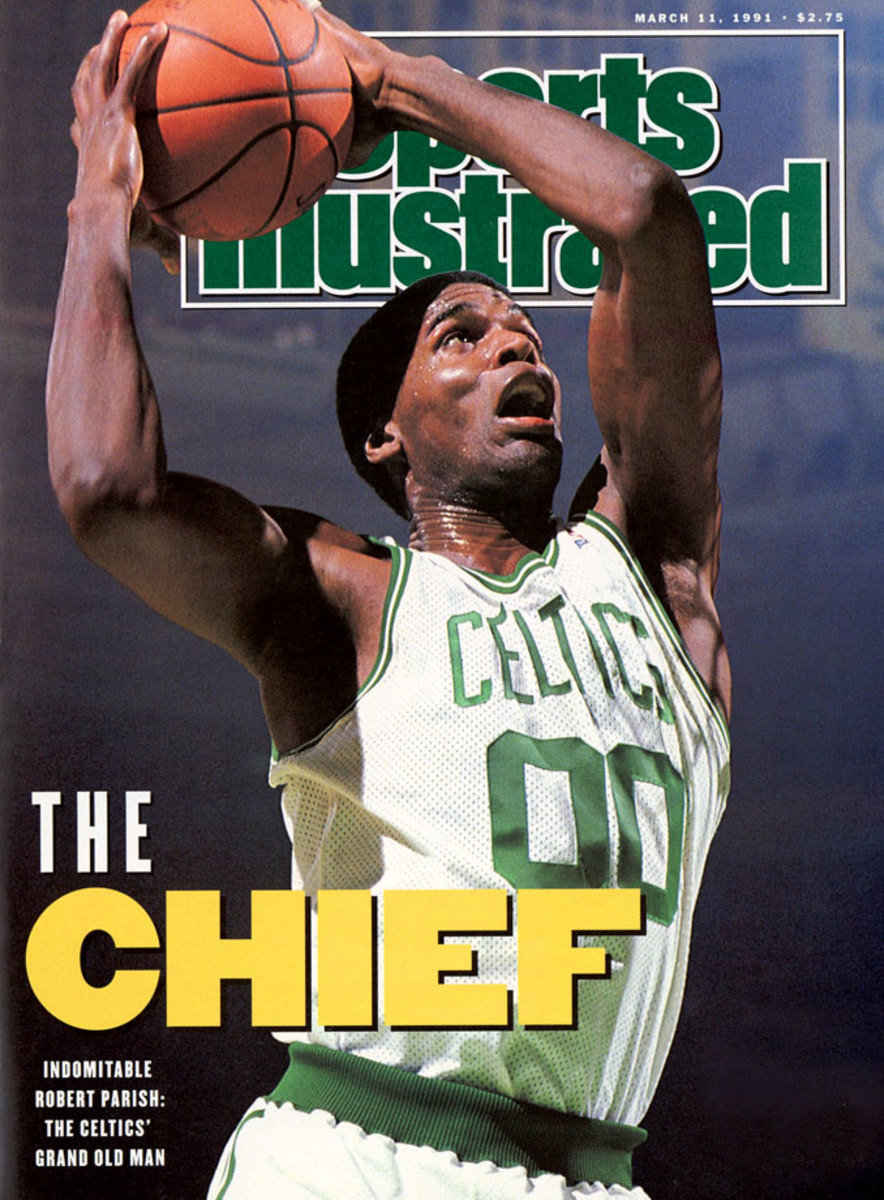
Best known as the defensive anchor of the Larry Bird-led Celtics teams of the 80s, Parish was also outstanding on the offensive side of the ball, a smooth jump shooter who hit at a nearly 54% clip from the floor in his 21-year career and averaged 14.5 points. A four-time NBA champion and nine-time All-Star, Parish’s athletic ability and utility on both ends as a 7-foot center foreshadowed the direction in which his position would head decades later.
0 — Russell Westbrook
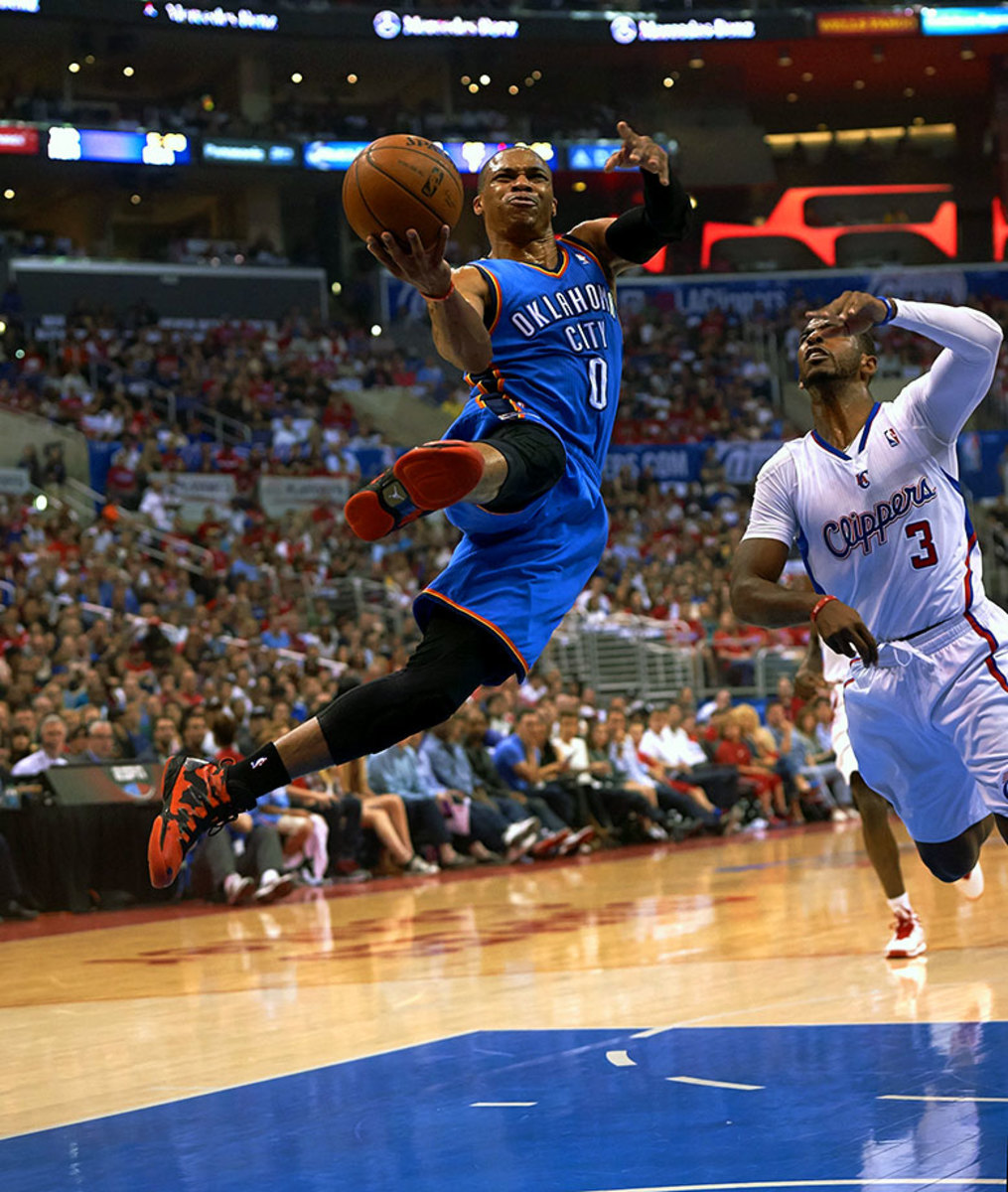
The best may still be to come for Westbrook, Oklahoma City’s dynamic point guard who continues to reshape his position and push the limits after a career season in 2014-15. At 26, Westbrook averaged 28.1 points, 8.6 assists and 7.3 rebounds, single-handedly carrying the Thunder when they needed it most. With Kevin Durant returning to the fold, Westbrook’s numbers may dip, but his efficiency could improve accordingly. His all-around game gives him the nod over Arenas. — Runner-up: Gilbert Arenas
1 — Oscar Robertson
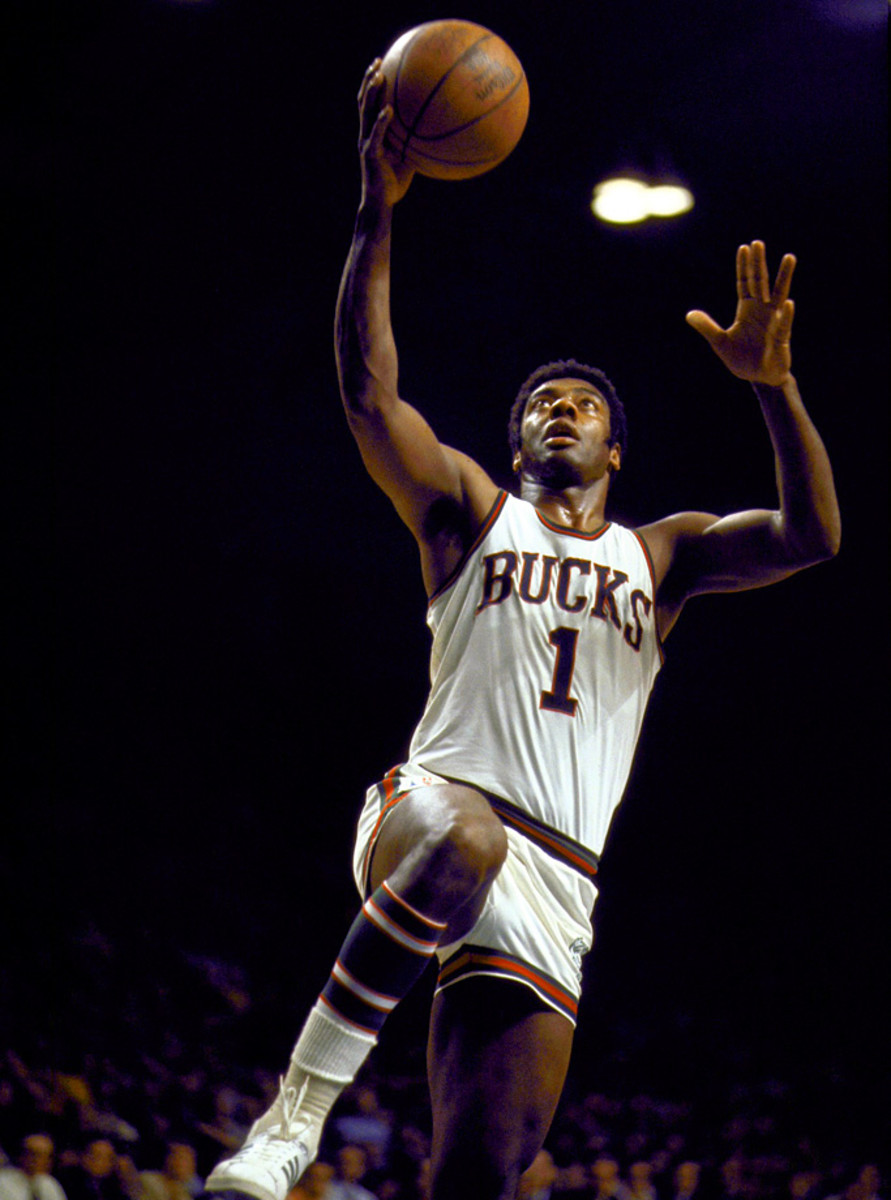
Everyone knows the Big O is the only player in NBA history to average a triple-double for an entire season. What’s lost is the specific stats from Robertson’s most incredible year, in which he posted nightly figures of 30.8 points, 12.5 rebounds and 11.4 assists at age 23, just his second season in the league. — Runner-up: Tracy McGrady
2 — Moses Malone
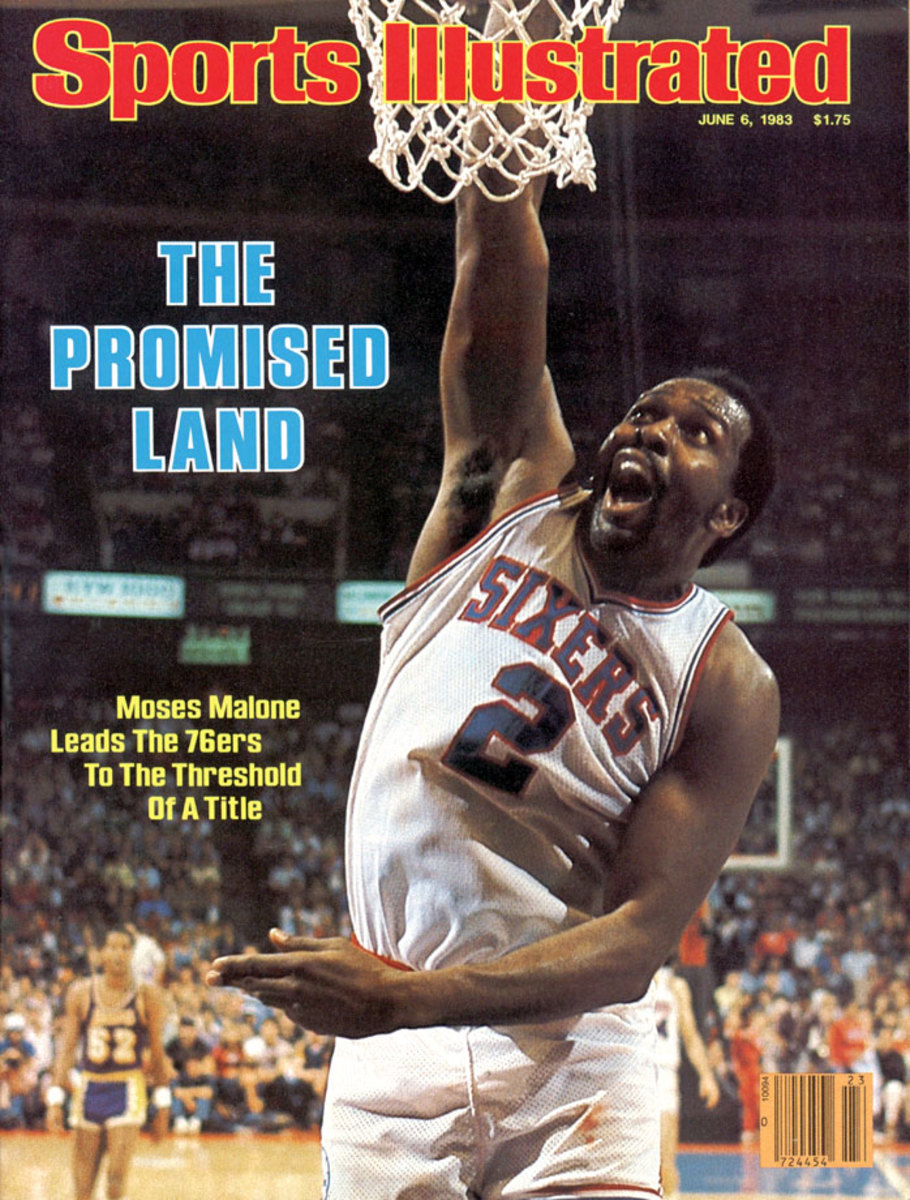
Malone was a statistical behemoth, averaging a double-double as a rookie and never looking back while making several stops around the NBA. A three-time MVP, Malone peaked as a Rocket with a 31.1 point, 14.7 rebound campaign in 1982, the year before signing with the Sixers and subsequently leading them to the ‘83 title as Finals MVP.
3 — Dwyane Wade
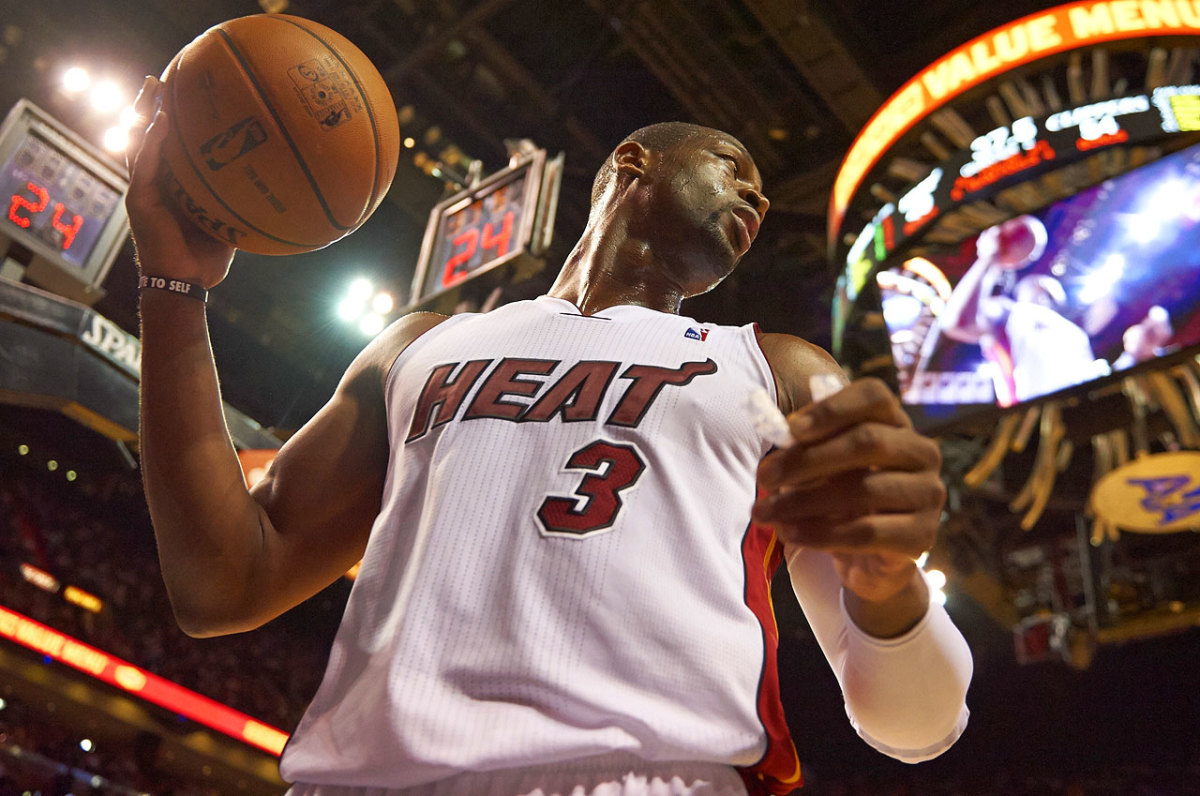
Before Wade annually sat out half of each season to rest and nurse injuries, “Flash” was one of the most electric players in the league. It takes a special player to lead an NBA franchise to its first championship in just his third season. Wade also played at an MVP level over the course of his 2008-09 campaign. — Runner-up: Allen Iverson
4 — Adrian Dantley
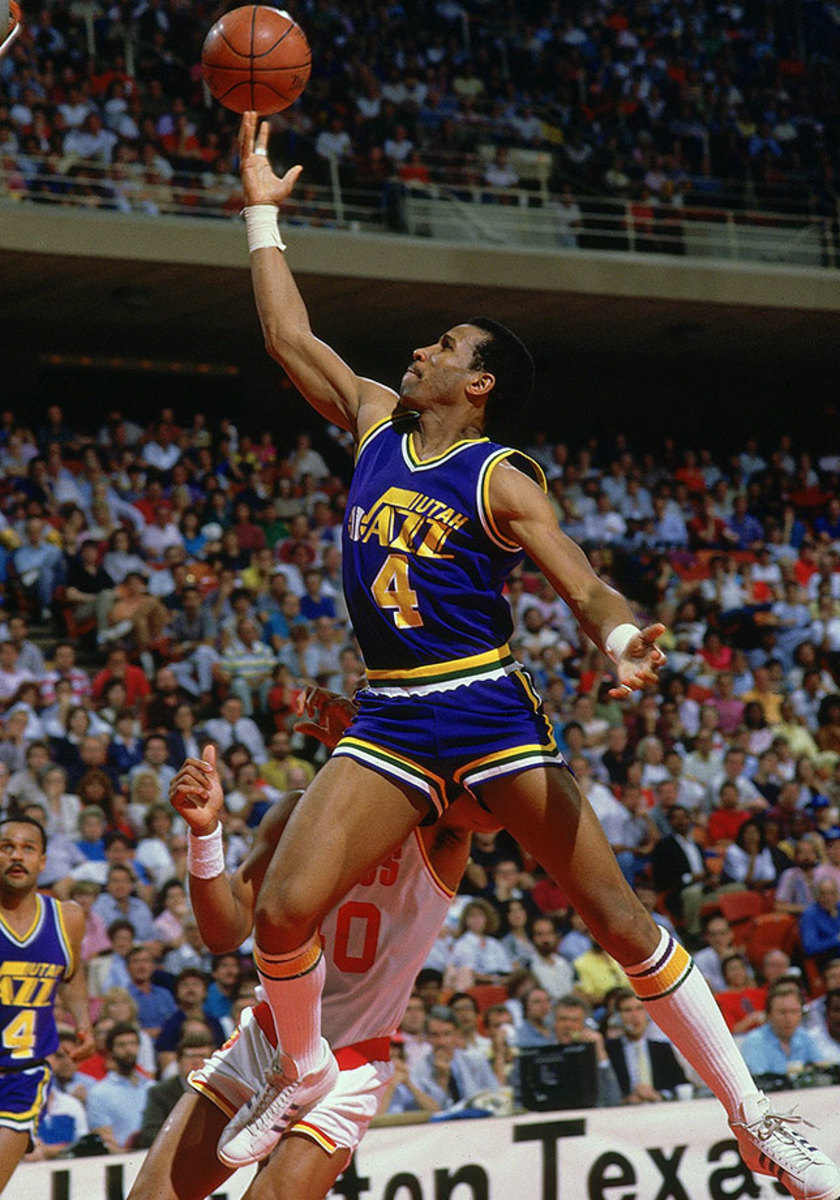
Dantley was one of the league’s most explosive scorers for a long time, making six All-Star games and stringing together four straight 30-plus point-per-game seasons in the early ‘80s, twice leading the league in scoring. Though he almost never shot three-pointers, Dantley finished his career with an average of 24.3 points per game on 54% shooting, working creatively to get buckets from the midrange and around the rim. — Runners-up: Joe Dumars, Dolph Schayes
5 — Kevin Garnett
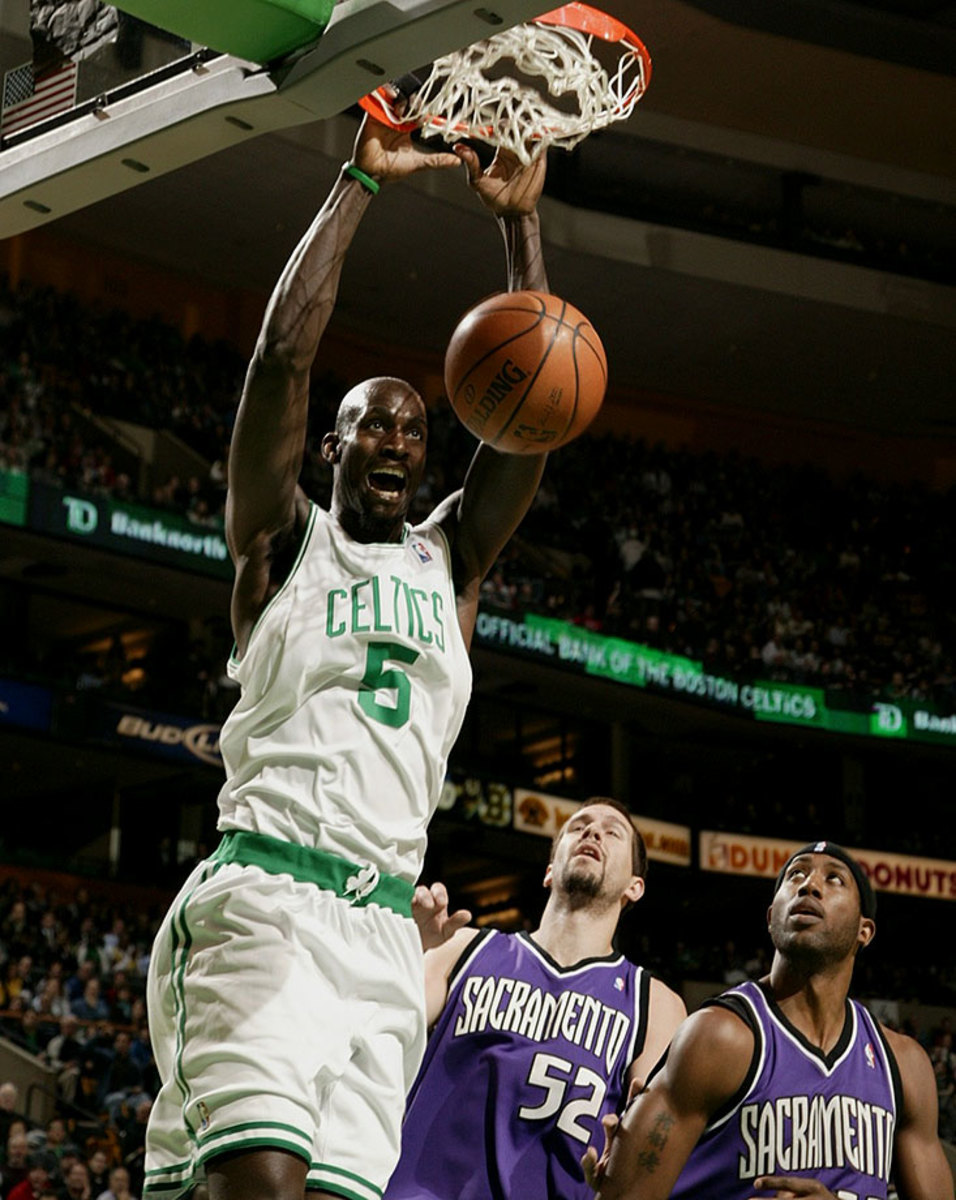
Anything was possible for defenses anchored by Garnett in his prime. One of the greatest prep-to-pro cases of all time and a perennial All-Star and All-NBA selection, Garnett transcended the game with his intensity and antics. Whether getting on all fours to bark like a dog or banging his head against the stanchion, KG always made his presence felt. — Runner-up: Jason Kidd
6 — Bill Russell
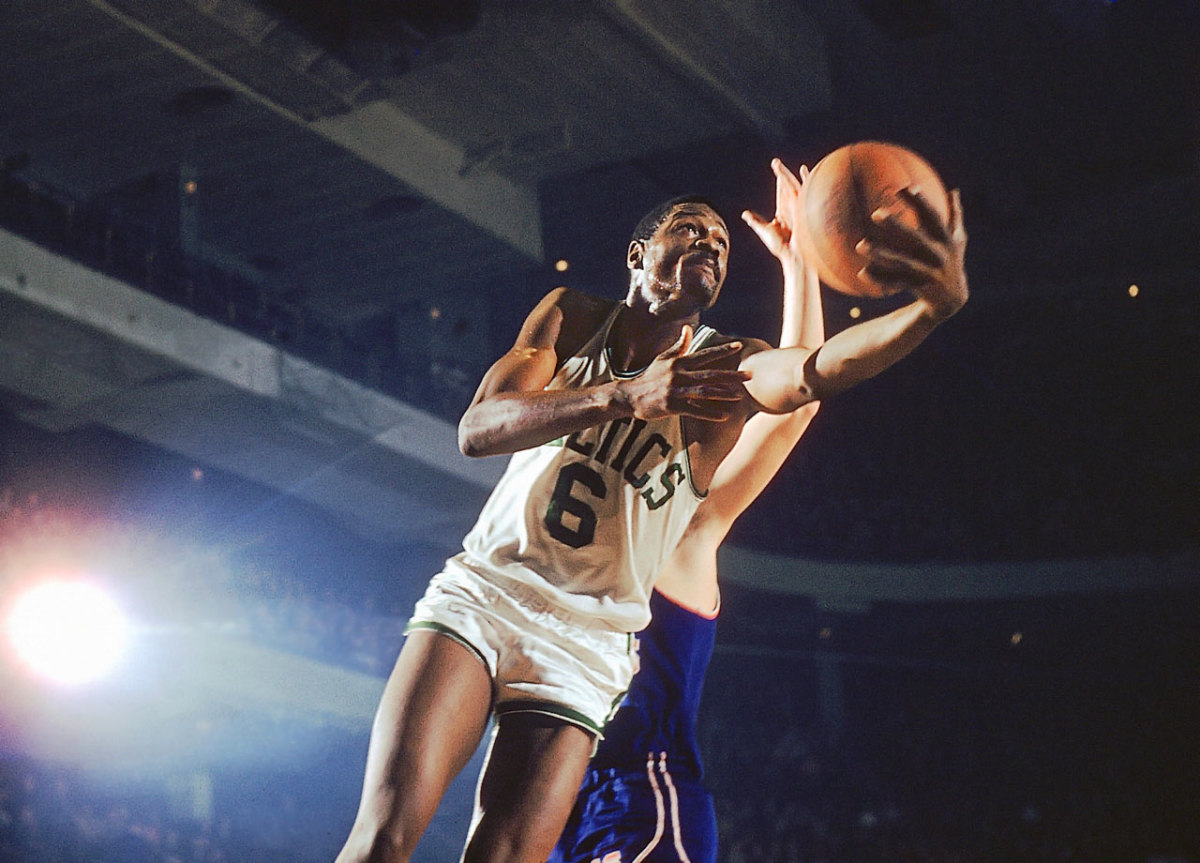
Though another No. 6 continues to make his case in Cleveland, Bill Russell’s 11 championship rings in 13 seasons are impossible for all but the most irrational to argue against. No athlete in the history of major team sports has ever sustained individual dominance and team success quite like Russell, who retired at age 34 before transitioning into coaching and leading Boston to two more titles––like clockwork. — Runner-up: LeBron James
7 — Pete Maravich
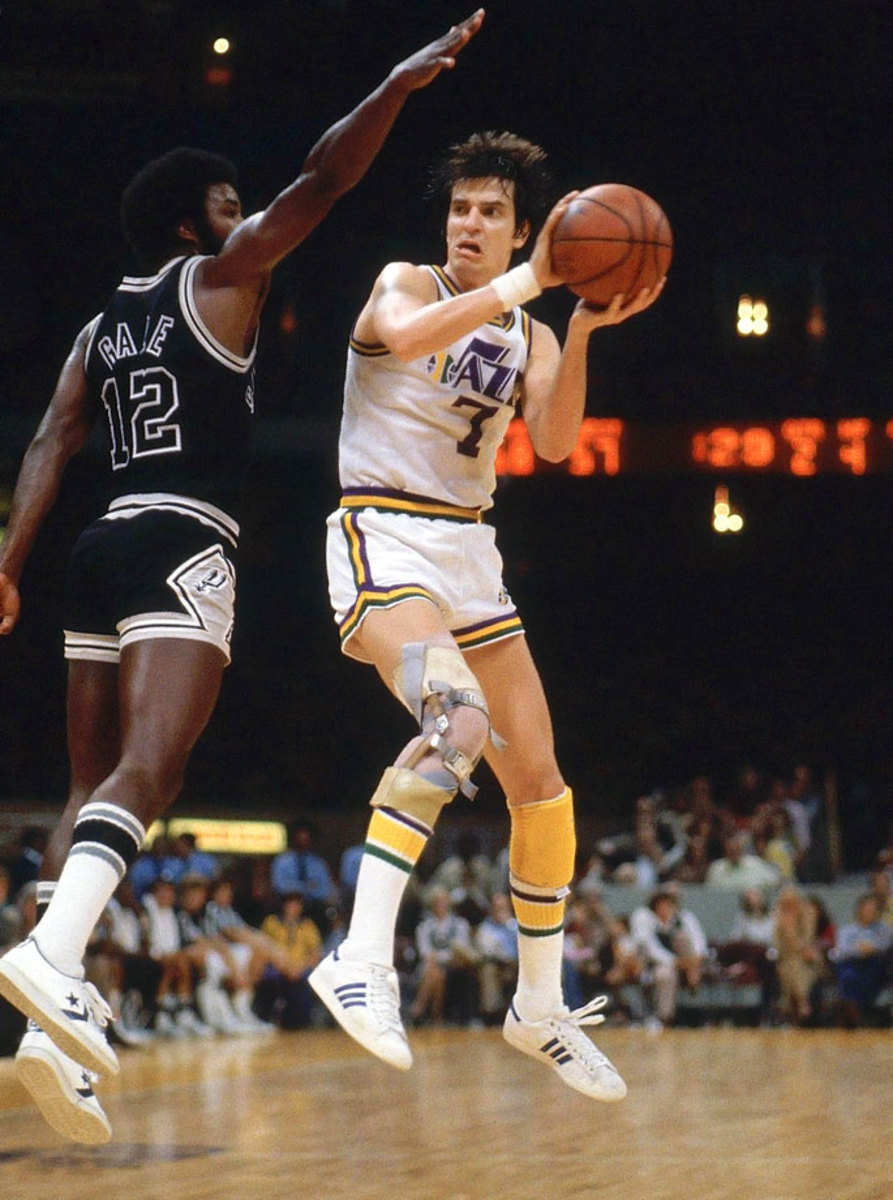
One of the NBA’s greatest scorers and the all-time leading scorer in NCAA history, “Pistol Pete” put up points in style. Ever the showman, Maravich brought a streetball-style game to the NBA. His flashiness helped build basketball’s popularity in the city of New Orleans before the Jazz moved to Utah. — Runners-up: Kevin Johnson, Carmelo Anthony
8 — Kobe Bryant
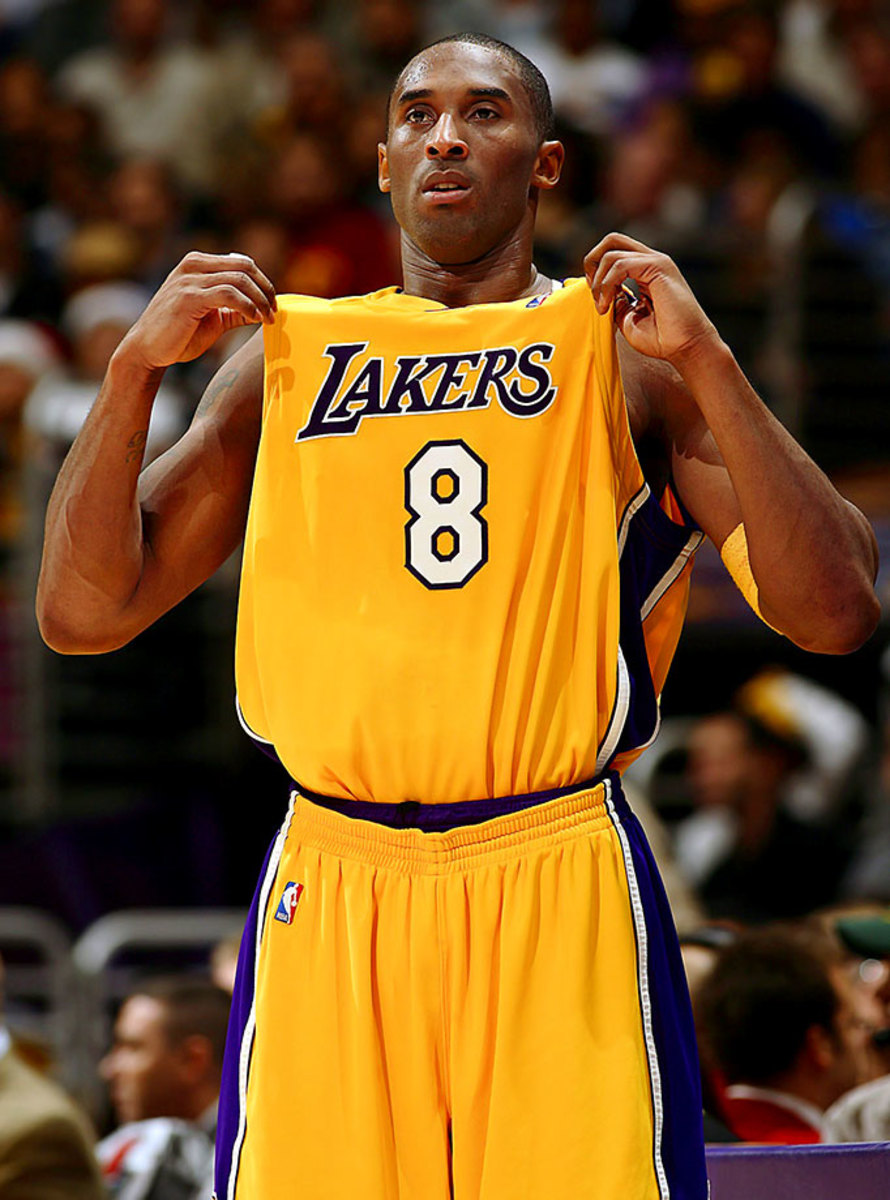
Younger basketball fans may not remember Kobe Bean donning No. 8 early in his career, but the results were prolific, peaking in 2005-06 when he averaged 35.4 points per game. Before there was No. 24 Kobe, the older and wiser Mamba we now know, there was the dynamic slasher who won three titles alongside Shaquille O’Neal, demanded the ball just as much, and demolished defenses in the process.
9 — Bob Pettit
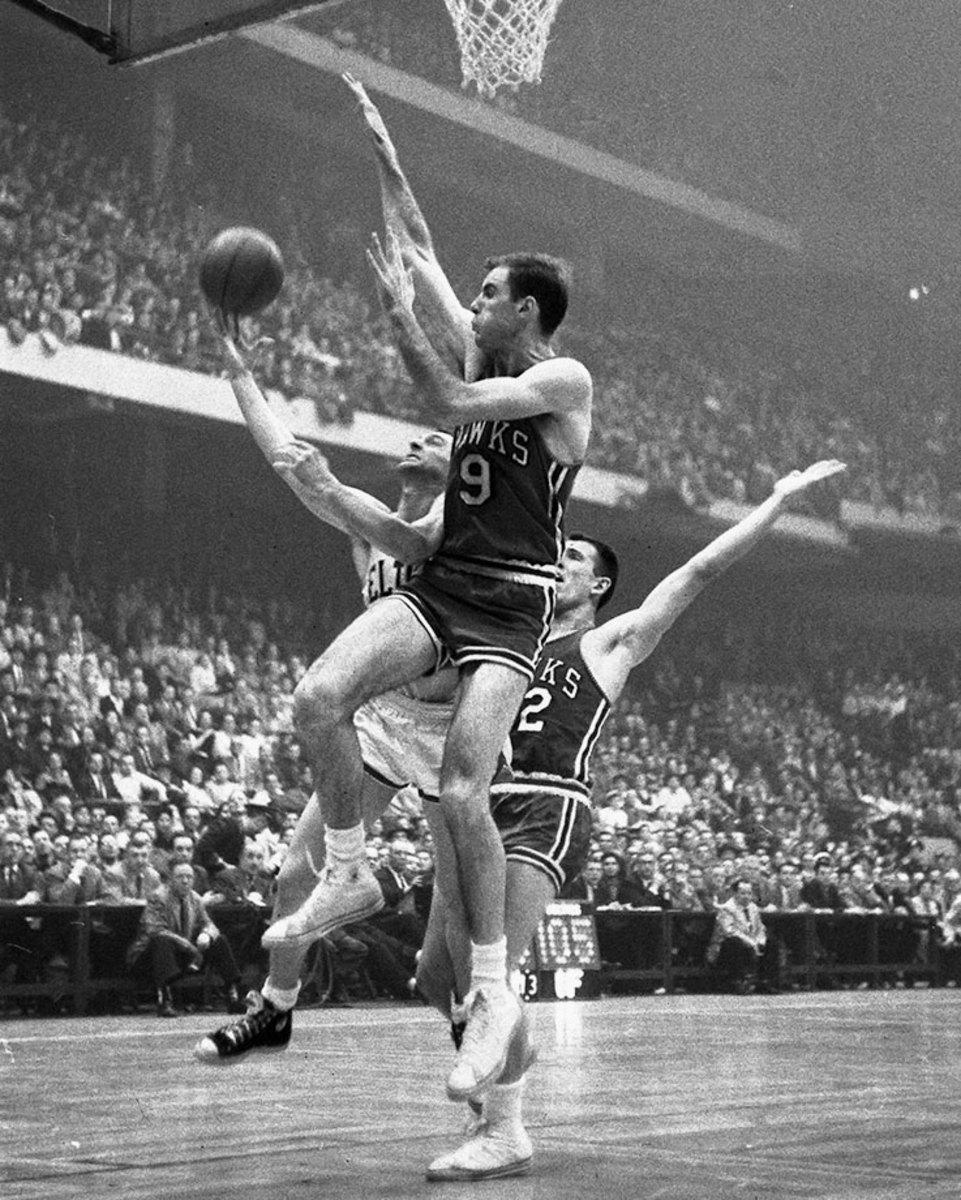
The St. Louis Hawks were the only team to defeat the Bill Russell’s Boston Celtics in an NBA Finals series, with Pettit leading St. Louis to the 1958 title. Pettit took home regular season MVP honors in 1955 and 1959 and led the Hawks to four Finals appearances. He was an All-Star in each of his 11 seasons. — Runner-up: Tony Parker
10 — Walt Frazier
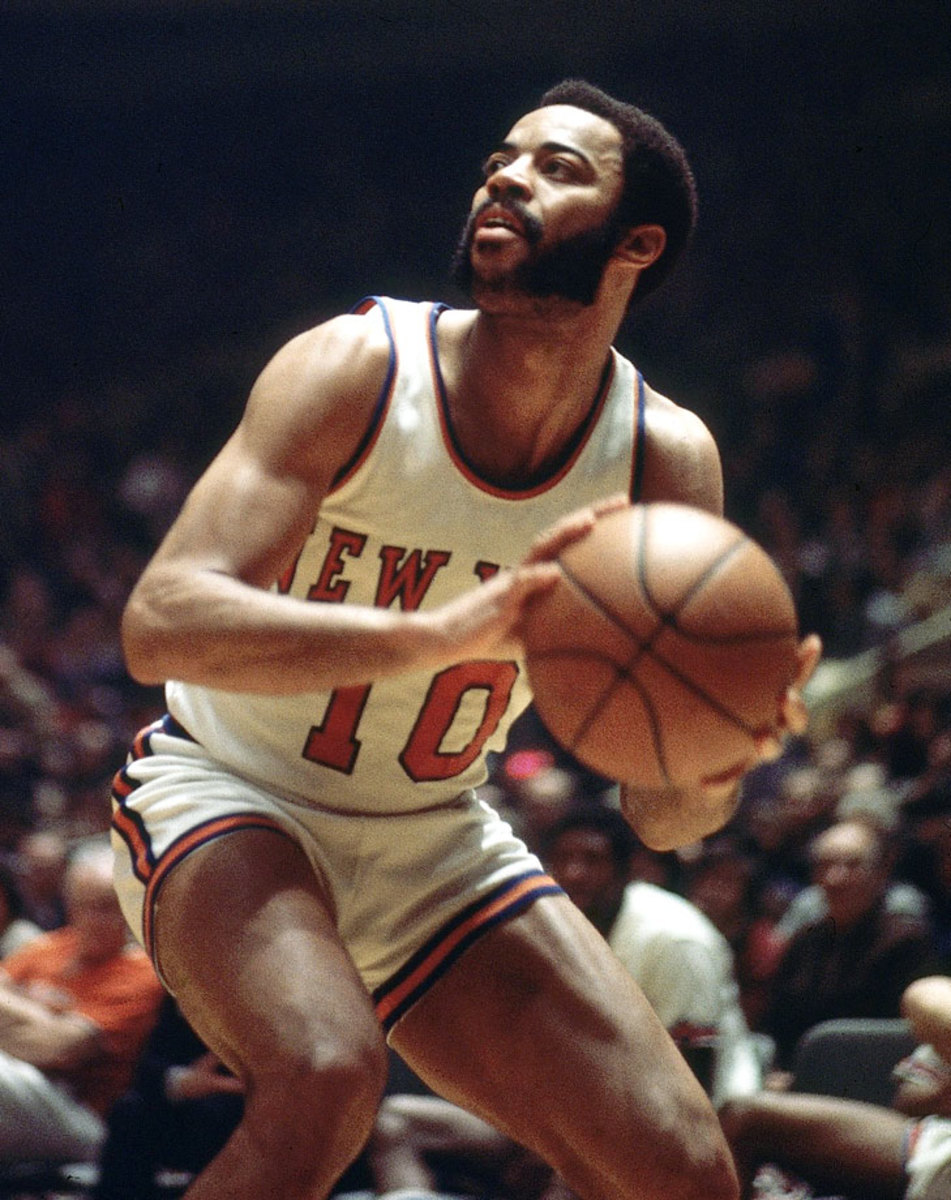
Teaming with Earl “The Pearl” Monroe, “Clyde” helped bring the dazzle and New York style to the Knicks, one of the first truly effective dual-point guard combinations and one of the greatest backcourts ever. A two-time NBA champion, Frazier now sits as one of the greatest Knicks of all-time and one of the league’s most stylish men, even in retirement. — Runner-up: Tim Hardaway
11 — Isiah Thomas
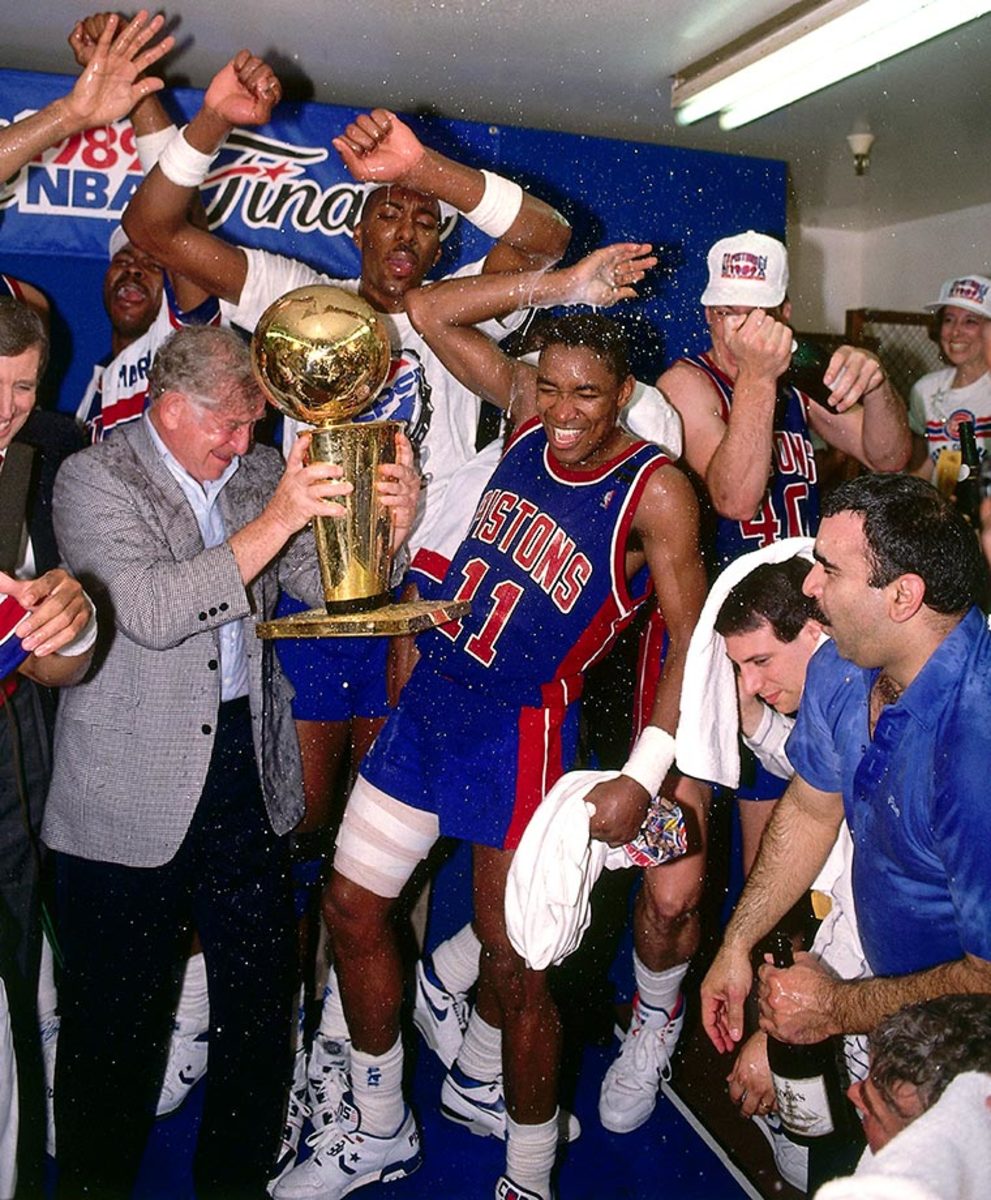
Before Thomas’ front office failures, the feisty Chicago product led the “Bad Boy” Pistons to back-to-back championships in 1989 and 1990. The 12-time All-Star appeared in every mid-season classic during his career save for his final season in 1993-94. He also piloted Detroit to the playoffs in all but two of his seasons. — Runner-up: Elvin Hayes
12 — John Stockton
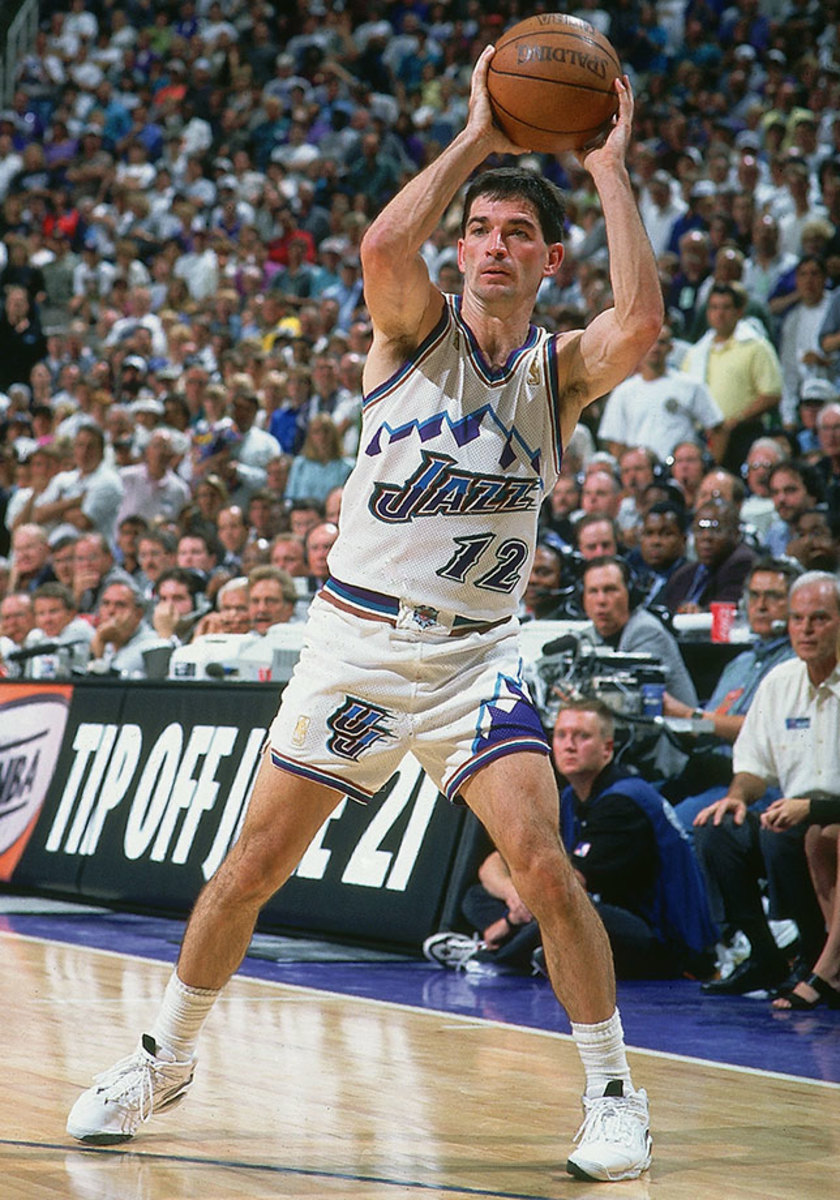
A 10-time All-Star and half of perhaps the most prolific guard-post tandem ever, John Stockton remains the NBA’s all-time leader in assists and steals. He dominated games at a slender 6’1”, with incredible know-how, a hard-nosed approach on both ends and unbelievable consistency all the way until his retirement at age 40. For the definition of a pure point guard, look no further.
13 — Wilt Chamberlain
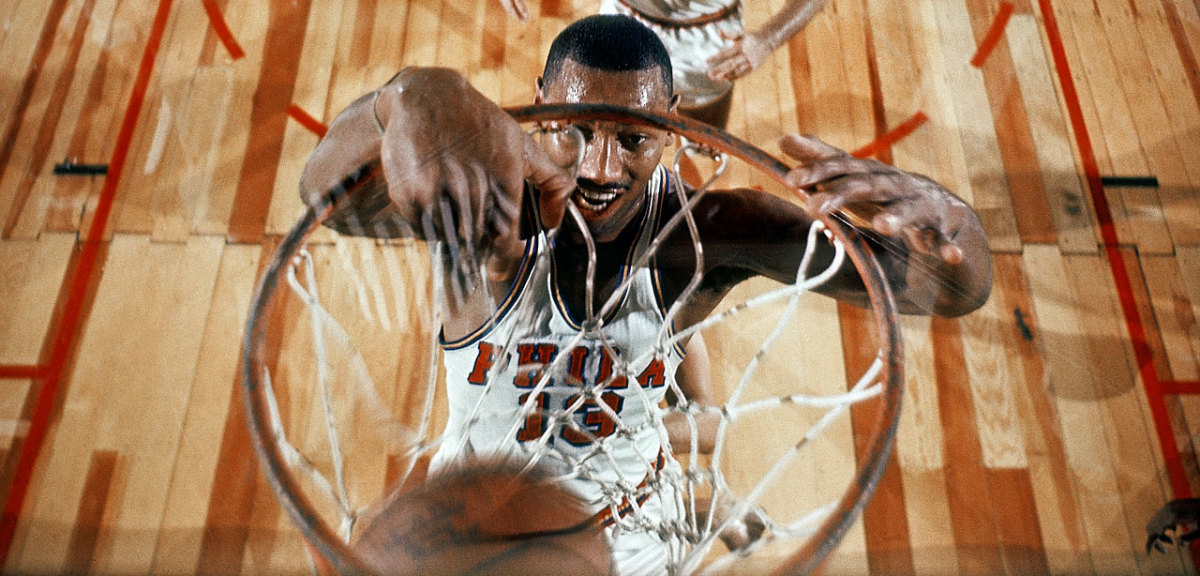
The Big Dipper, of course, is the only player in NBA history to score 100 points in a single game. Few players have forced the league to change the rules in order to make games fairer for opponents. The NBA had to widen the lane, institute offensive goaltending and amend the inbounding and free throw regulations because of Chamberlain. Beast mode. — Runner-up: Steve Nash
14 — Bob Cousy
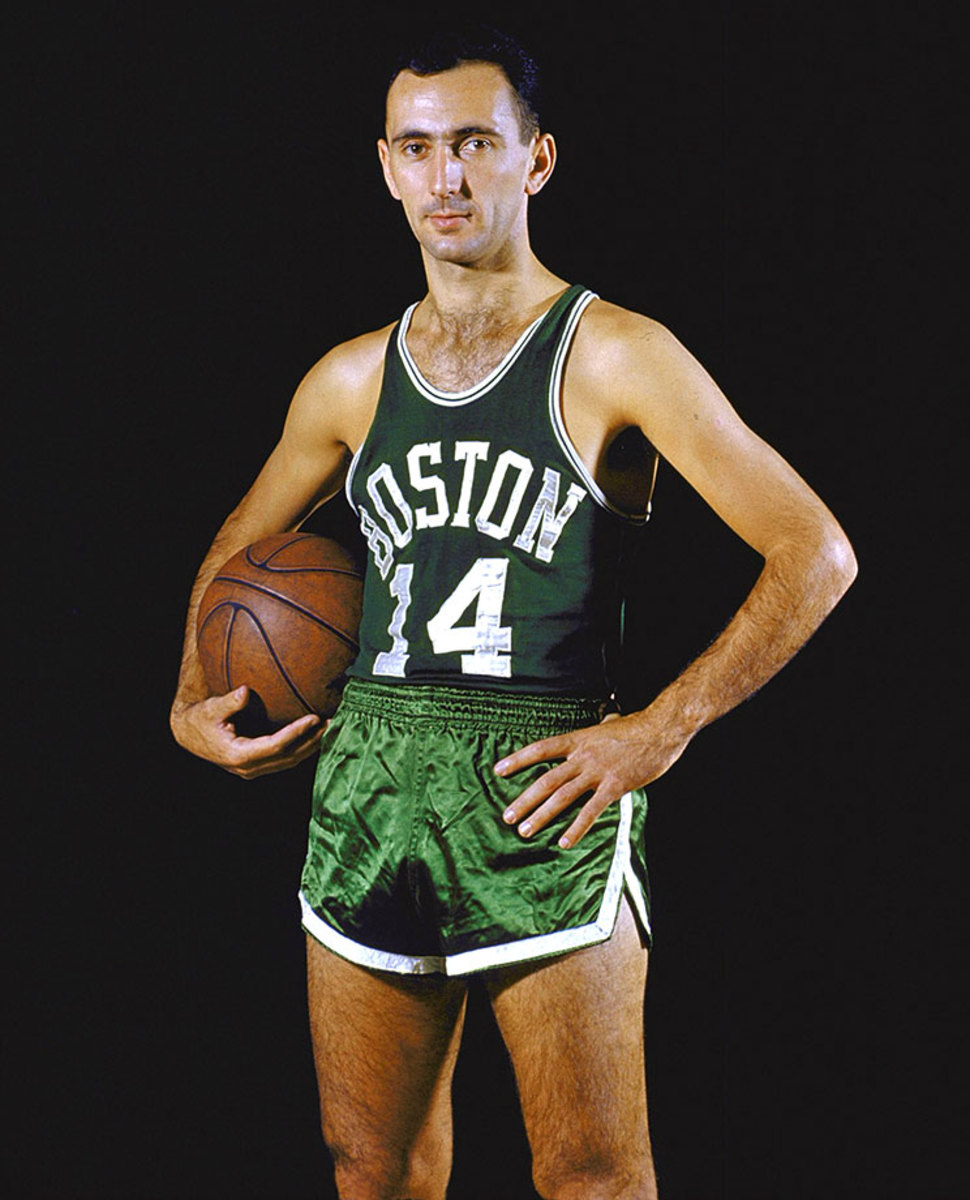
An All-Star in every single one of his seasons (save for a seven-game return to boost ticket sales for the Royals, the team he coached, in 1970), Cousy was a six-time NBA champion and the 1957 MVP. He was the man in Boston until the arrival of Bill Russell, with whom he teamed to build the NBA’s first dynasty.
15 — Vince Carter
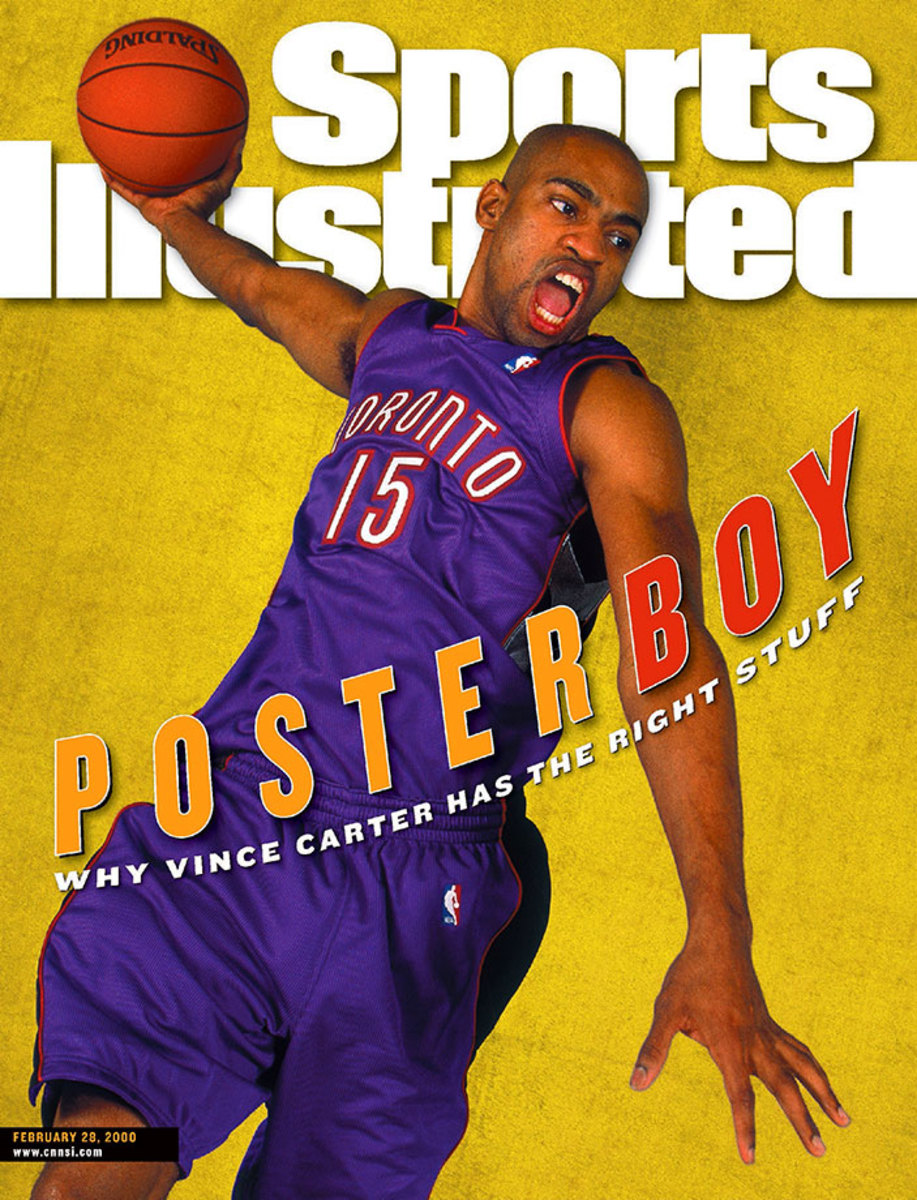
The reputation of “Vinsanity” for acrobatic dunks doesn’t do his overall game enough justice. Carter currently ranks 30th all-time in career scoring and will likely pass Charles Barkley in 2015-16. His incredible play was key for an upstart Toronto Raptors franchise in the early 2000s. — Runner-up: Hal Greer
16 — Bob Lanier
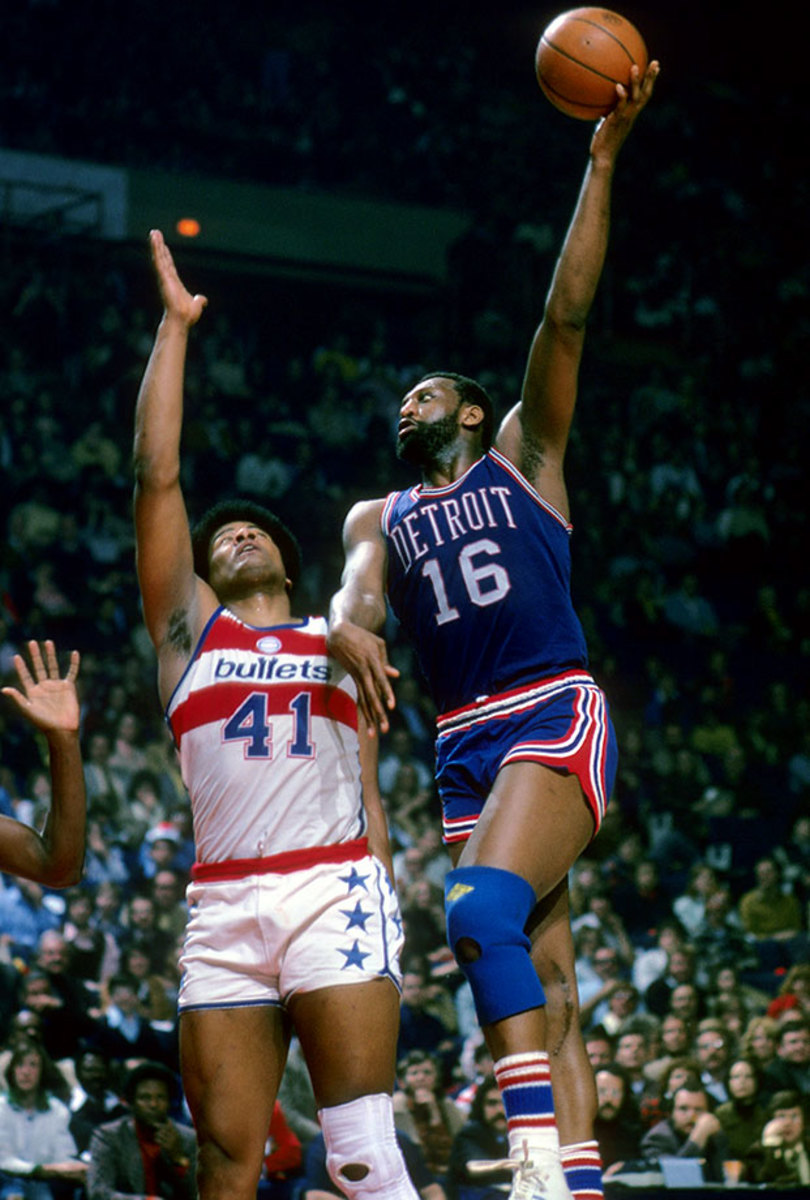
A force in the middle for the Pistons and Bucks, Lanier retired in 1984 with career averages of 20.1 points and 10.1 rebounds. A well-rounded post man who was a strong free-throw shooter (76.7%) and in his prime, a shot-blocker, Lanier lived up to his selection as the No. 1 pick in the 1970 draft, playing for 15 strong years and finishing with five consecutive division titles as a Buck. —Runners-up: Pau Gasol, Jerry Lucas, Cliff Hagan
17 — John Havlicek
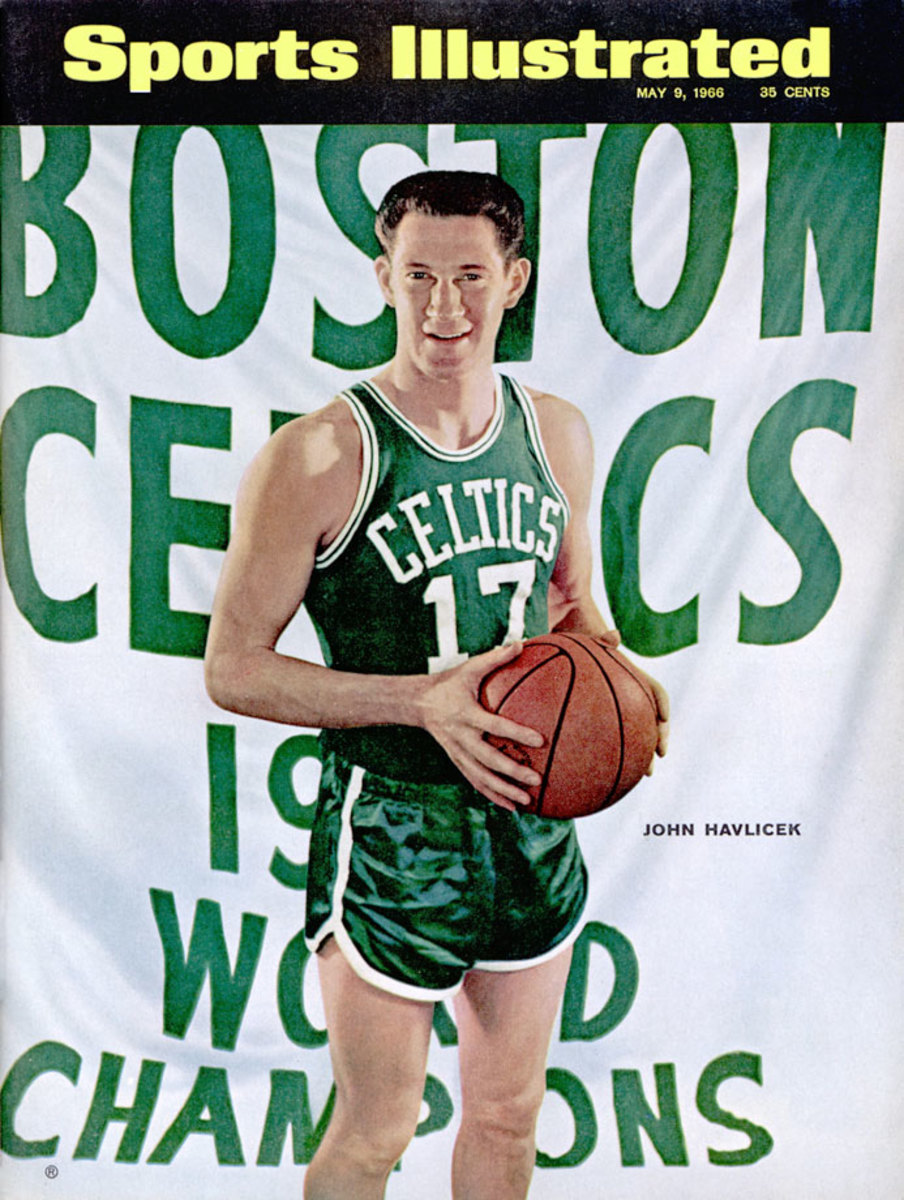
One of the most well-rounded players ever, Havlicek’s Celtics teams won eight championships in his 13 seasons. Hondo bridged the gap between the Bill Russell era and the Celtics’ successful run into the 1970s. In his prime, Havlicek posted numbers strikingly similar to LeBron James, averaging 28.9 points, 9.0 rebounds and 7.5 assists per game in 1970-71. — Runner-up: Chris Mullin
18 — Dave Cowens
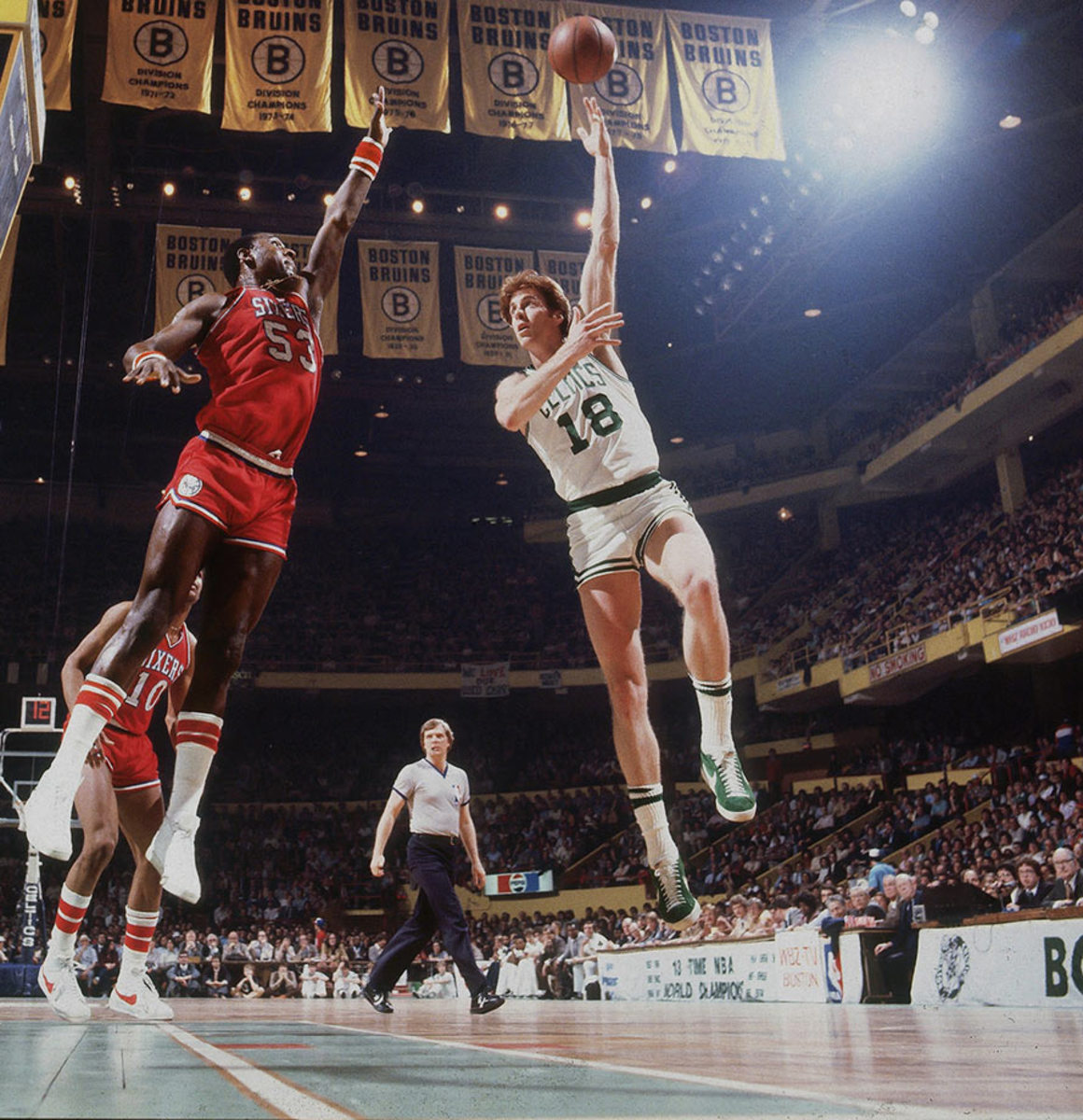
Best known for his all-out approach on every play, Cowens was a stalwart for the Celtics in the ‘70s, winning titles in ‘74 and ‘76 and MVP honors in ‘73, on the back of a 20.5 point, 16.2 rebound campaign. Also a strong passer, Cowens retired averaging 3.8 assists per game to go with 17.6 points and 13.6 boards. An eight-time All-Star, Cowens is one of only four players (including Scottie Pippen, LeBron James and Kevin Garnett) to lead his team in points, rebounds, assists, blocks, and steals for an entire season.
19 — Willis Reed
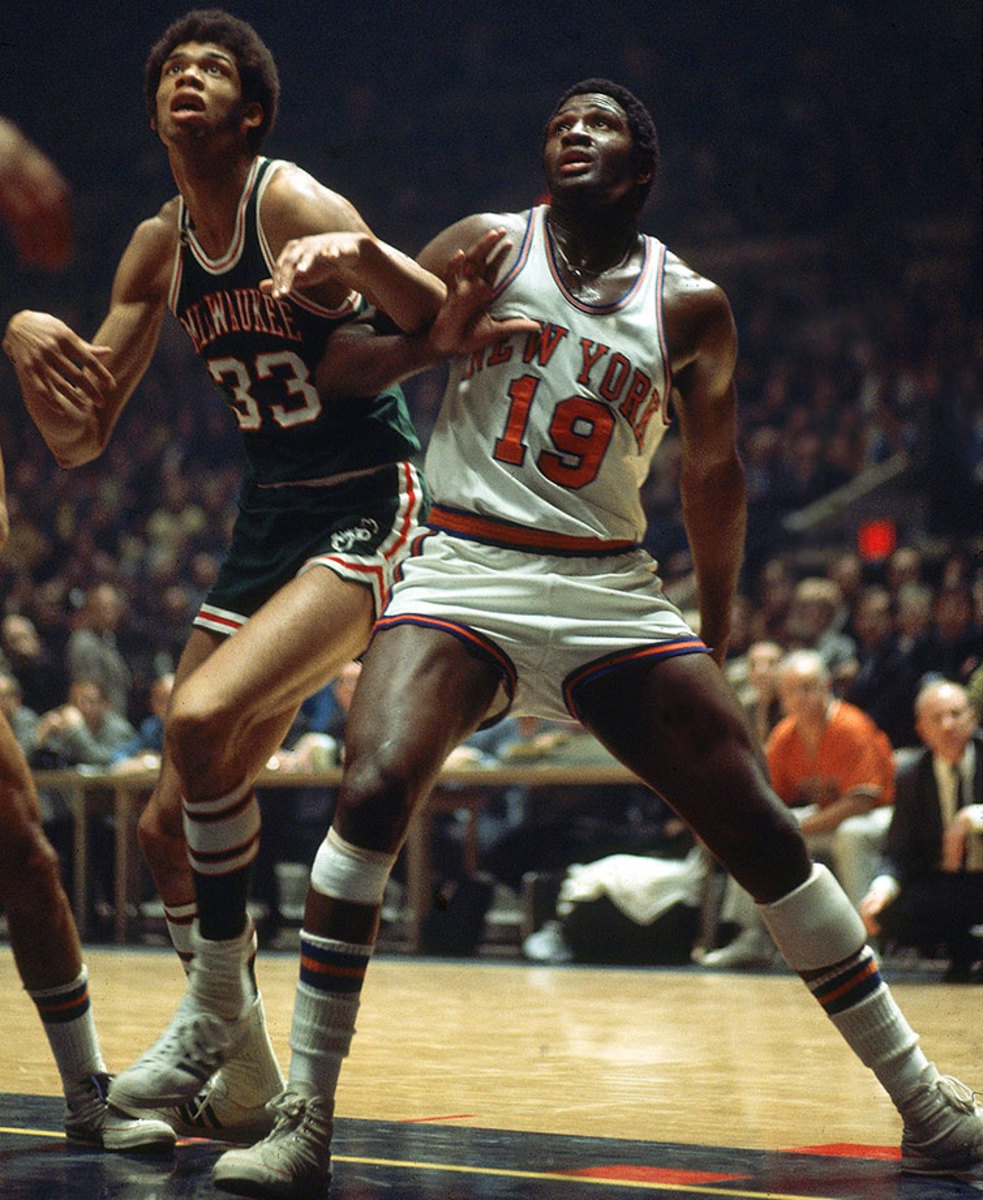
The Knicks haven’t won an NBA title since Reed helped clinch the 1973 championship. Reed will forever be remembered for his magical return to Game 7 of the 1970 Finals against the Los Angeles Lakers, delivering the Knicks’ first title in franchise history. He averaged 23.7 points and 13.8 rebounds per game during the 1970 playoffs. — Runner-up: Don Nelson
20 — Gary Payton
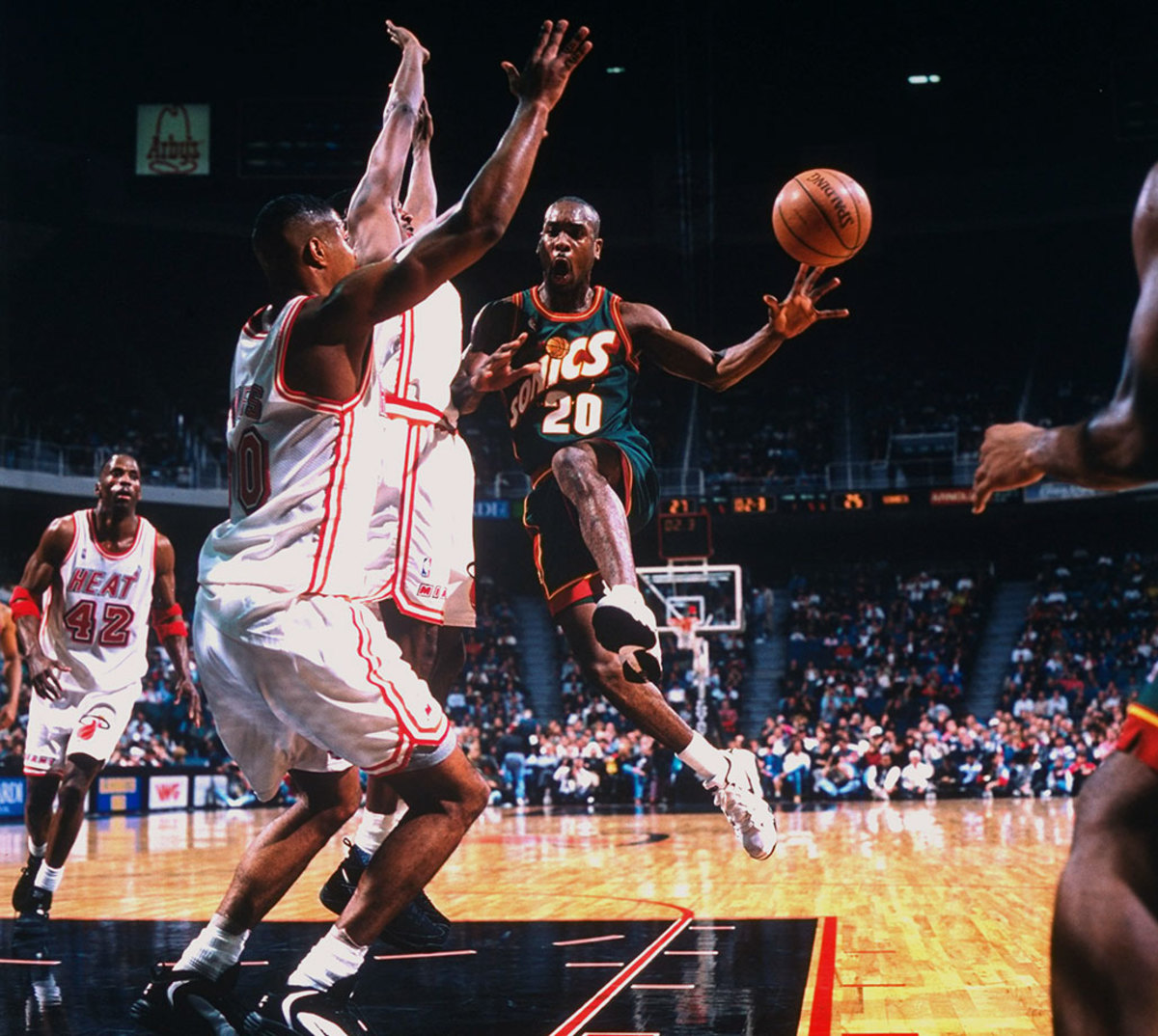
‘The Glove’ earned his nickname thanks to a reputation as the NBA’s toughest defensive point guard, bolstered by nine straight All-Defensive first team selections from 1994-2002. Payton, a nine-time All-Star, was no slouch on the offensive end, either, with a well-rounded game and the ability to create for others and get buckets when needed. One of the iconic players in the history of the Sonics, Payton would hit a huge shot as a member of the Heat in Game 5 of 2006 Finals to help Miami seize the title, his lone championship. —Runner-up: Manu Ginobili
21 — Tim Duncan
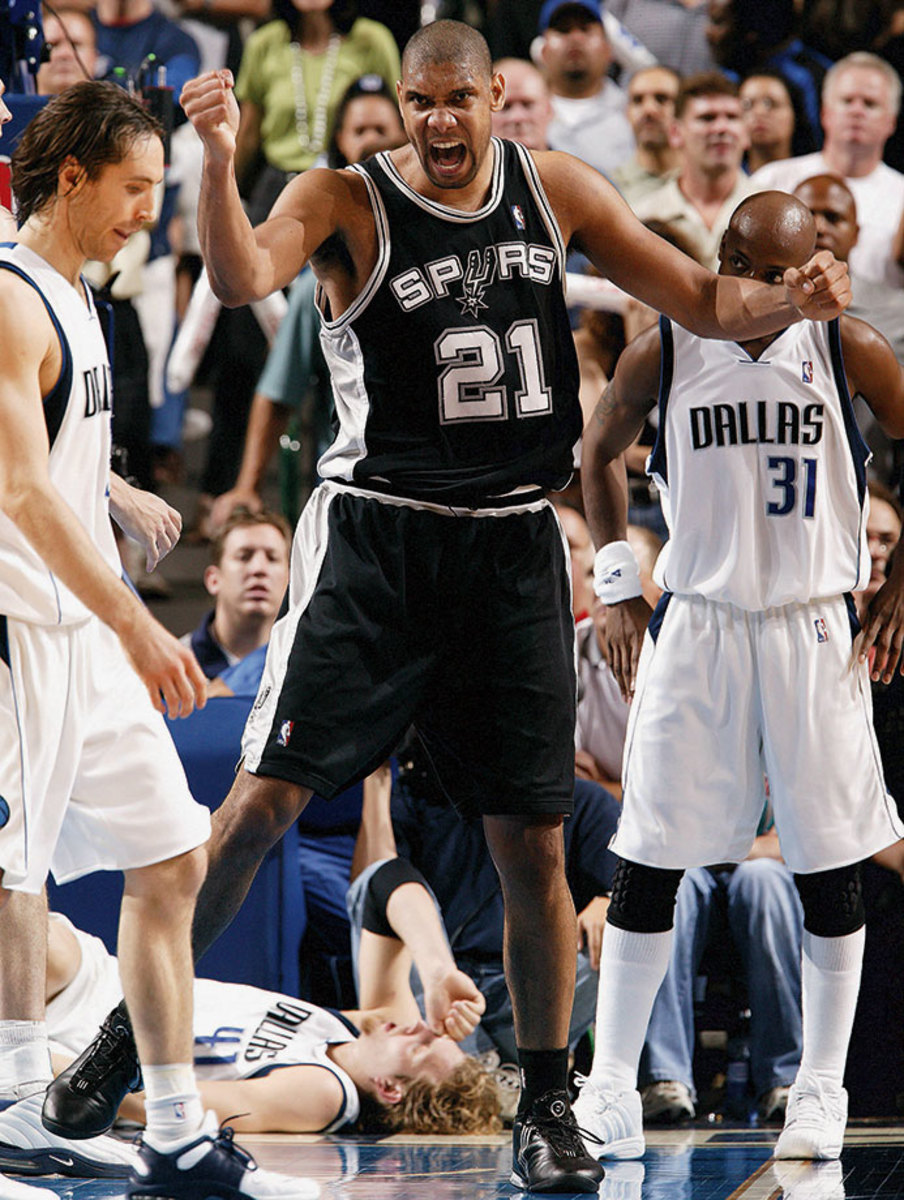
As he prepares for his 19th season, it’s hard to argue against Tim Duncan as the greatest player of his generation, bridging the gap between Michael Jordan and LeBron James. The four titles and 15 All-Star appearances are incredible on their own. Factor in his unfathomably consistent numbers and Duncan’s resume is one of the greatest all-time. Period. — Runner-up: Dominique Wilkins
22 — Elgin Baylor
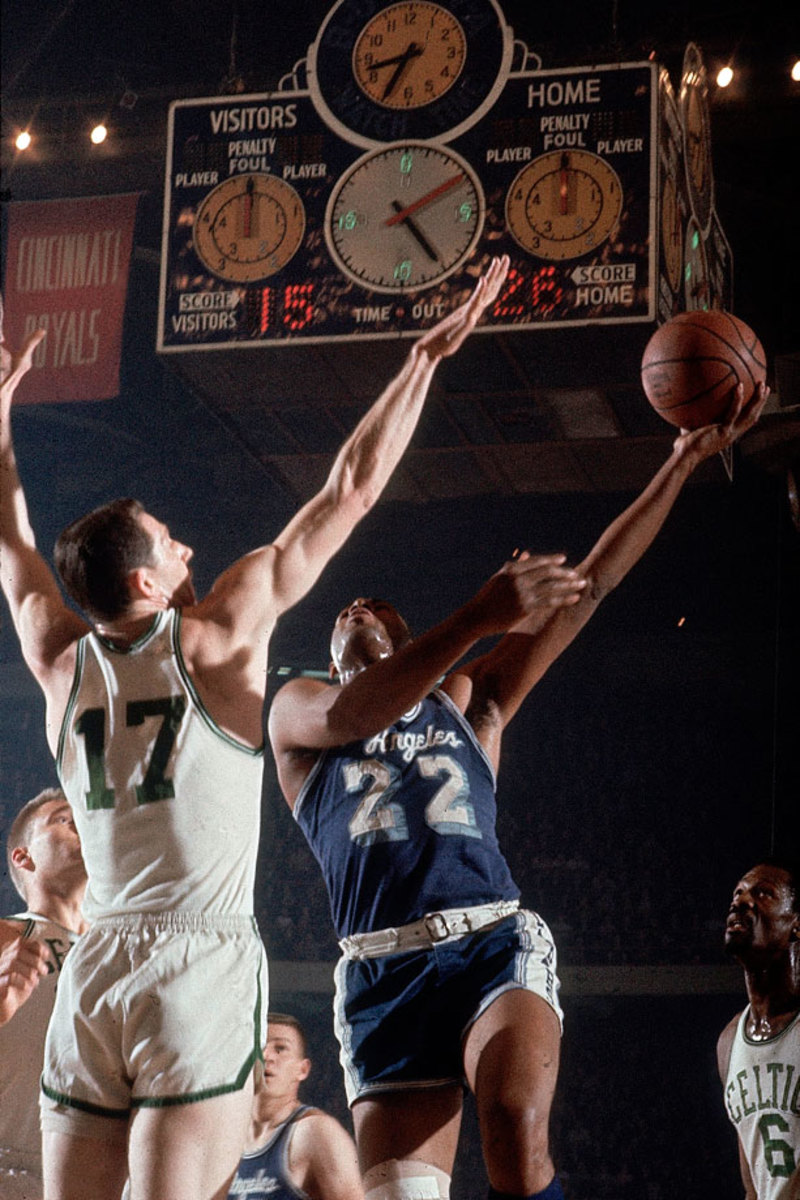
One of the NBA’s first high-flyers, Baylor was an unbelievable scorer in the pre three-point era, averaging 38.3 points per game in 1962. The 11-time All-Star appeared in eight NBA Finals but never won a title, retiring due to chronic knee problems in 1972 —a year in which Los Angeles finally won it all (he was given a ring at the end of the season anyway.) He holds the record for points scored in an NBA Finals game, with 61 in Game 5 in 1962. —Runner-up: Clyde Drexler
23 — Michael Jordan
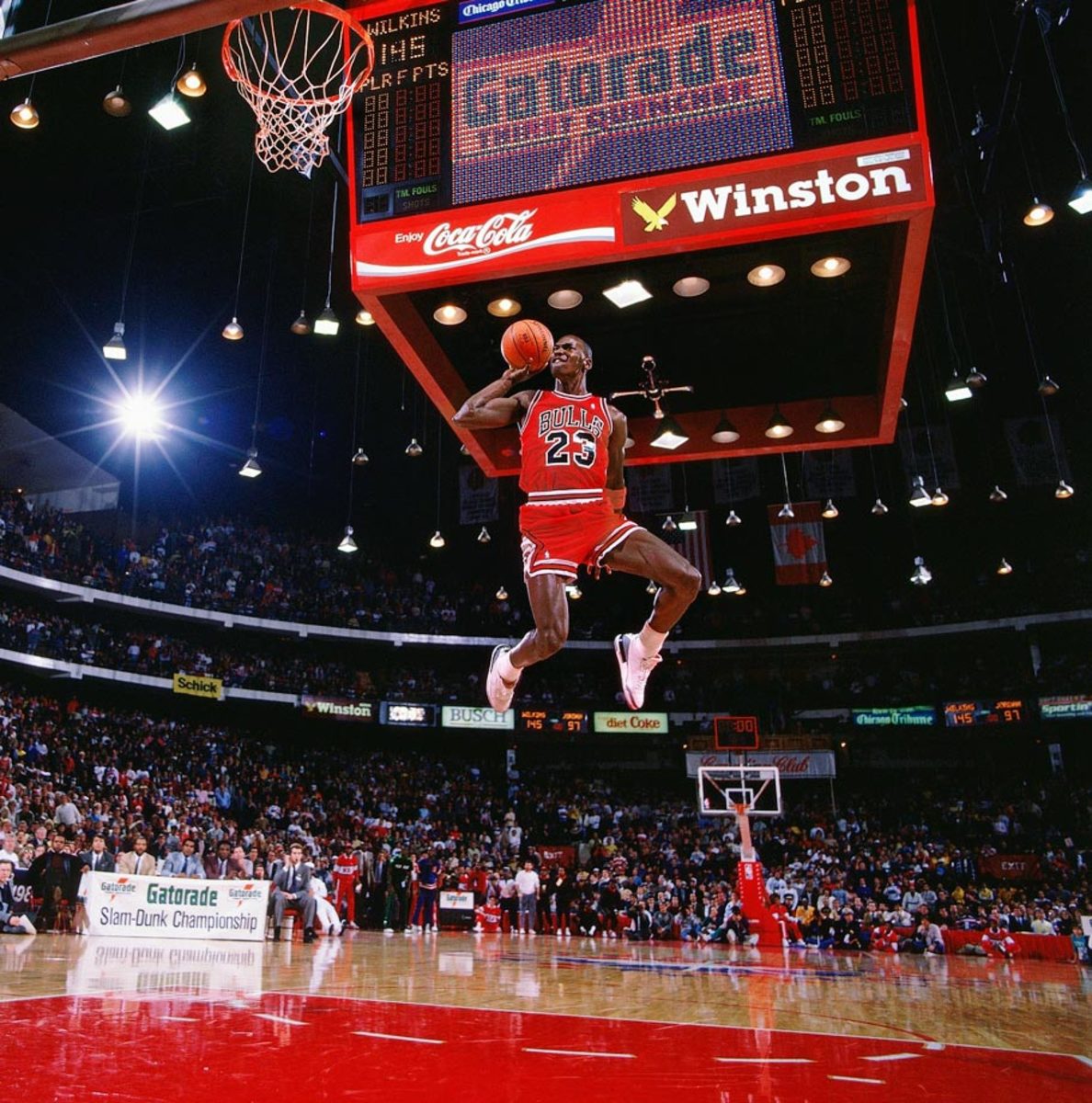
Six championships. Five regular season MVPs. Countless All-NBA and All-NBA defensive selections. The most famous sneaker line in history. Gravity-defying dunk contest victories. The list goes on and on and on and on for the current majority owner of the Charlotte Hornets. Michael Jordan is the G.O.A.T., friends. — Runner-up: LeBron James
24 — Rick Barry
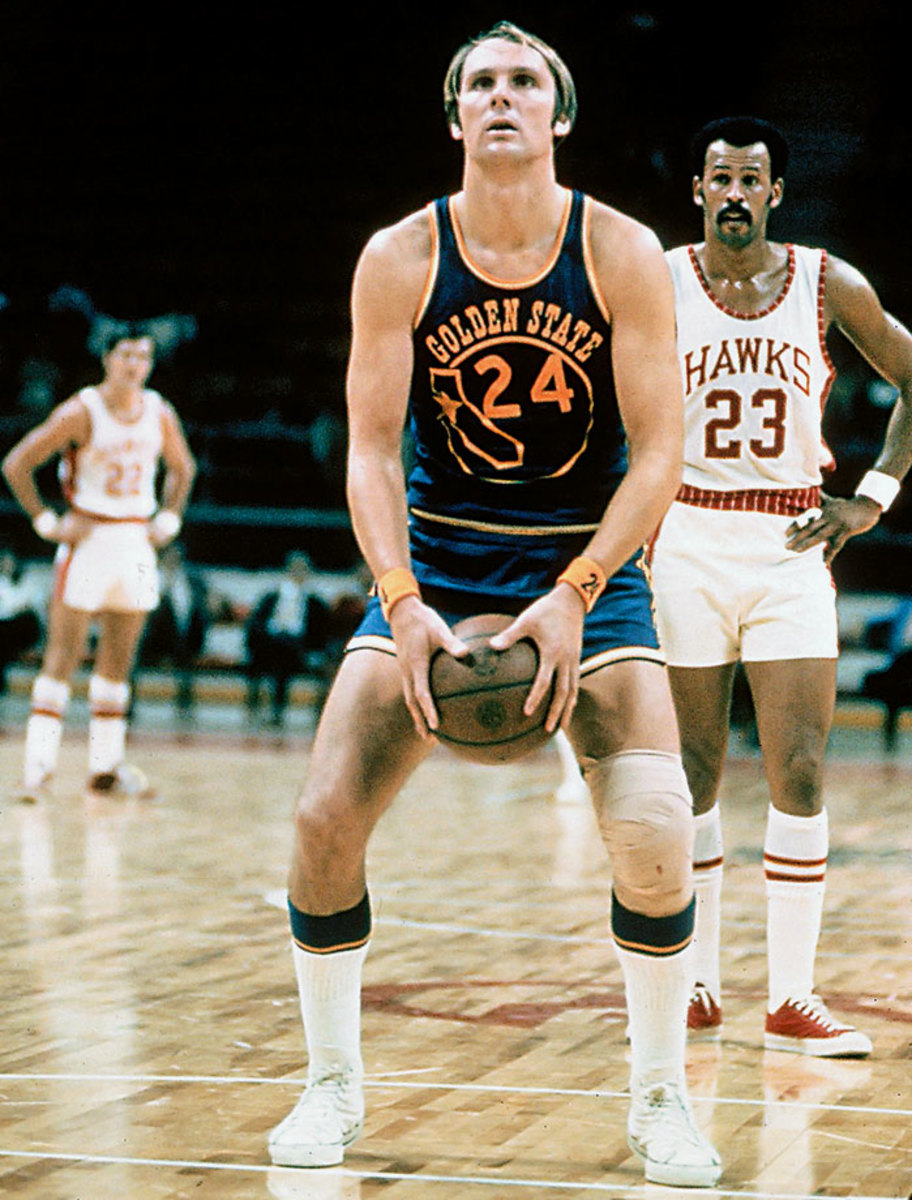
Beyond pioneering the granny-style free throw, Barry was one of the league’s most dominant scorers of all-time, an eight-time All-Star and the 1975 Finals MVP. He spent four seasons from 1968-1972 playing in the ABA (over which he averaged 30.5 points), which places a hit on his all-time totals, but he retired with NBA averages of 23.2 points, 6.5 rebounds and 5.1 assists (and 90% from the foul line). — Runners-up: Bobby Jones, Sam Jones
25 — Mark Price
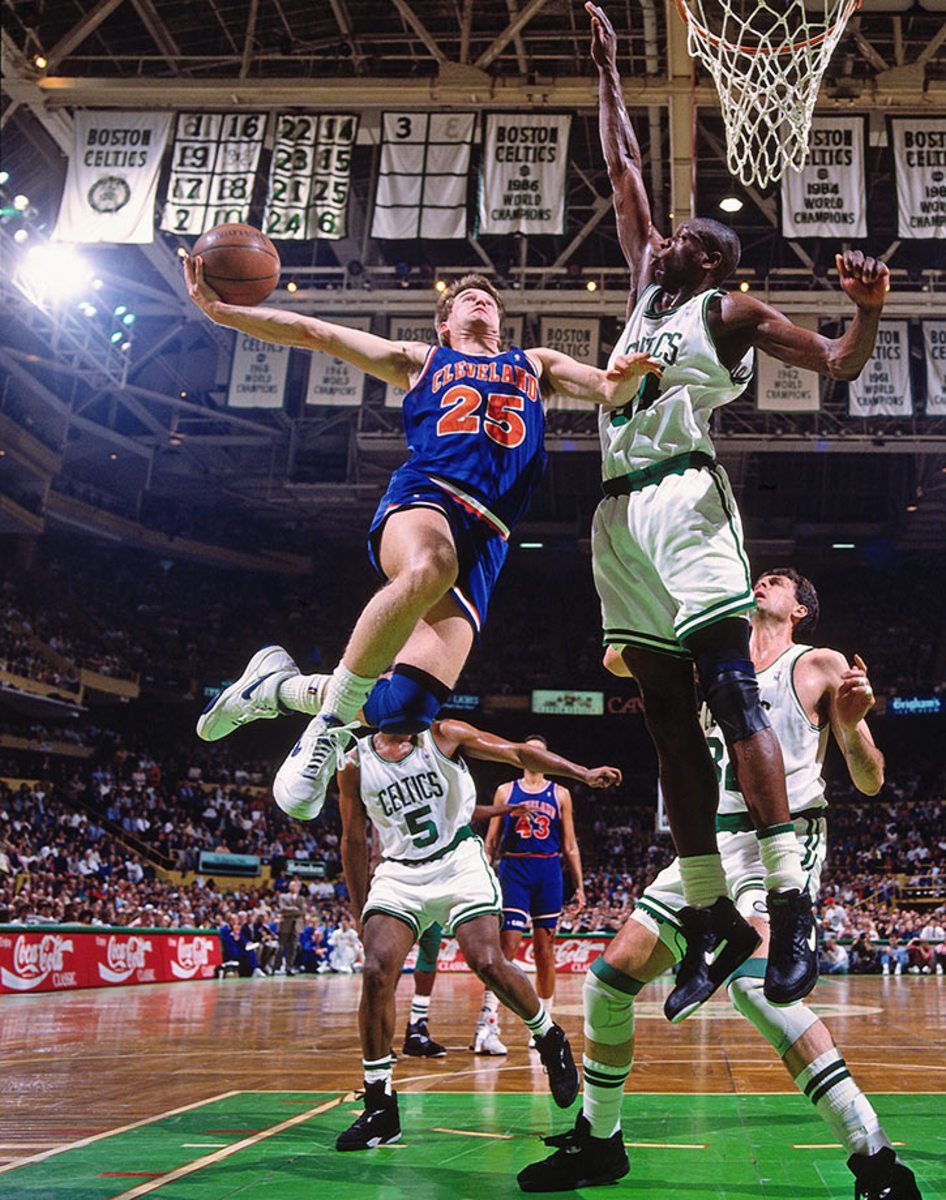
One of the greatest free throw shooters in NBA history (a 90.4% career mark), Price doesn’t get enough credit for his overall game. A four-time All-Star, Price led the Cleveland Cavaliers for nearly a decade, running an efficient offense and posting a double-double, 16.9 points and 10.4 assists per game in the 1990-91 season. — Runners-up: Gail Goodrich, Doc Rivers
26 — Kyle Korver
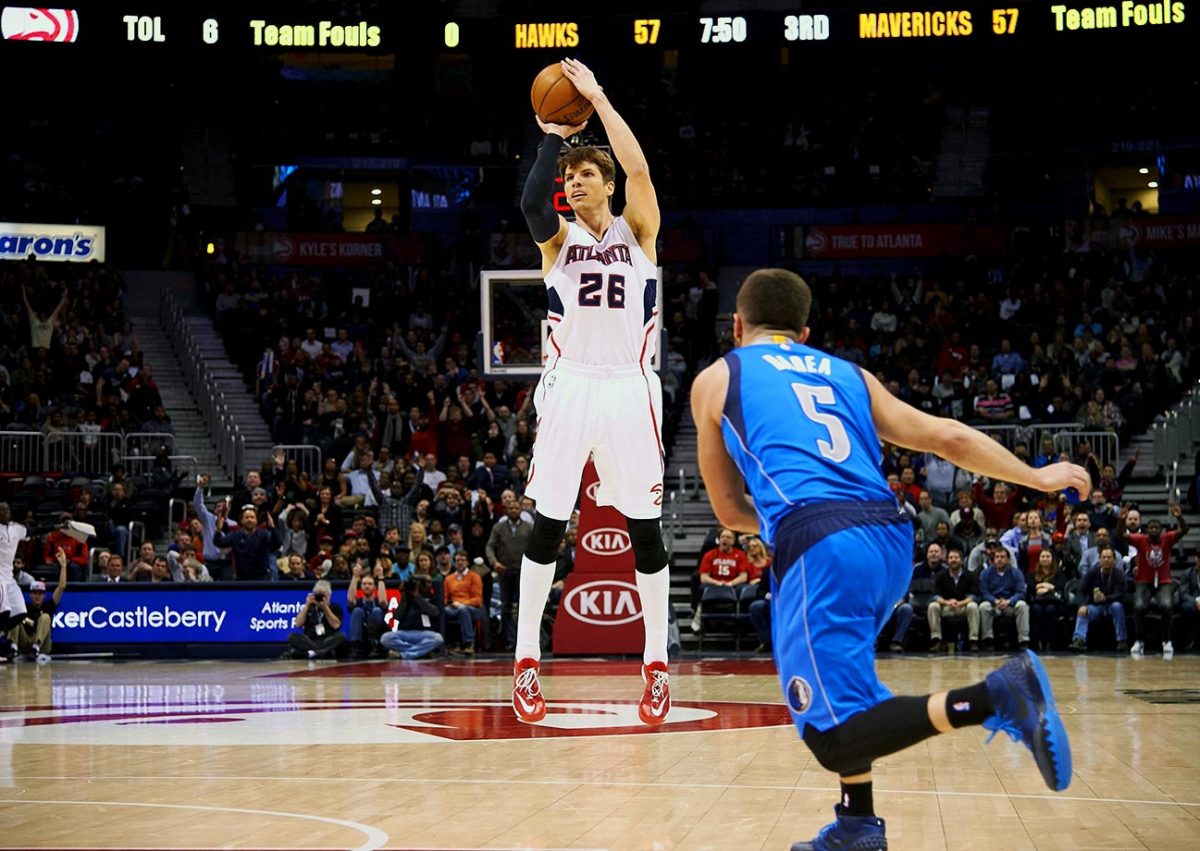
One of the league’s top three-point snipers, Korver just completed an incredible All-Star campaign with Atlanta, shooting 49.2% from deep as a key cog in a diverse offense. His acumen from outside gives him the nod here at No. 26.
27 — Jack Twyman
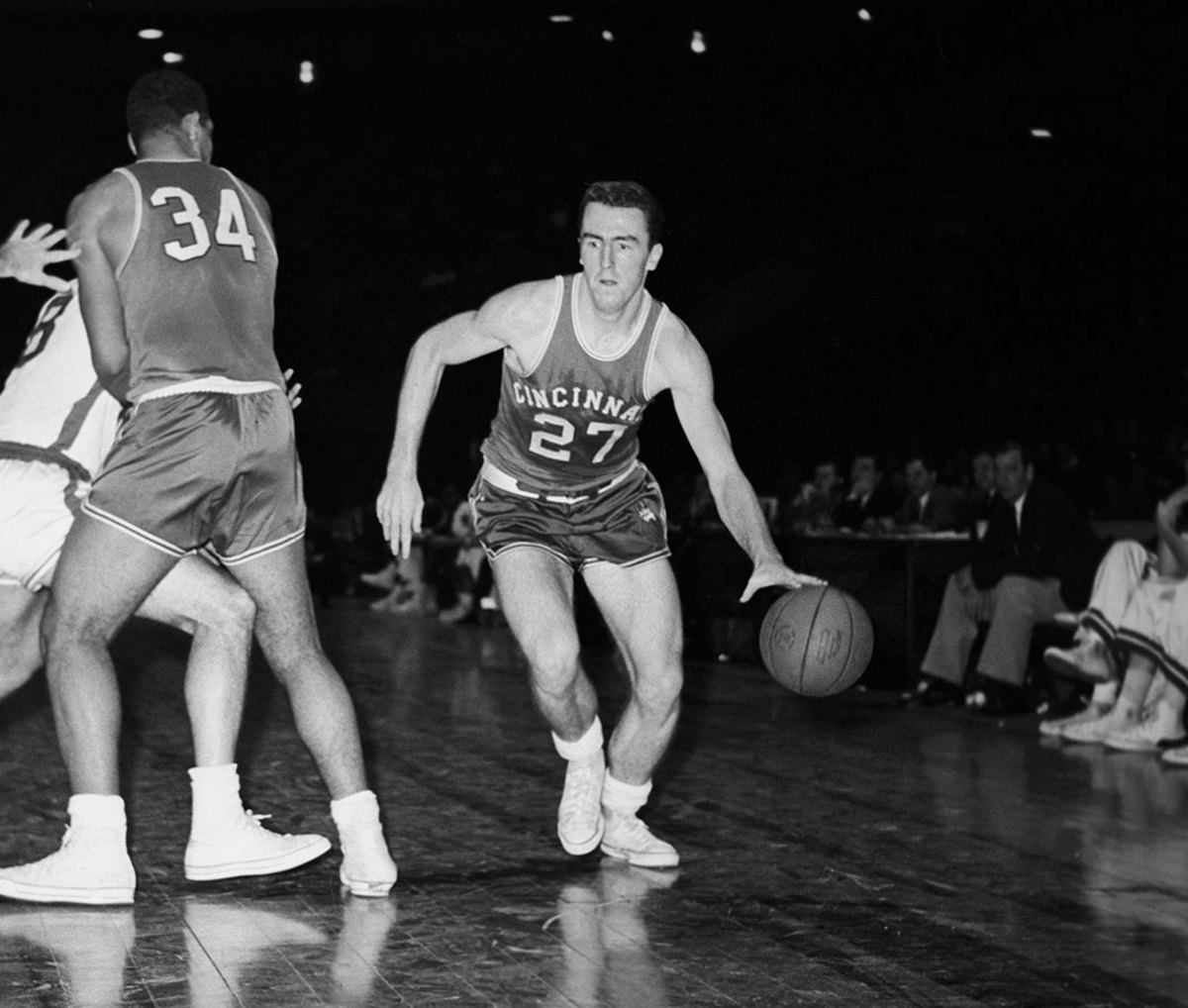
A six-time All-Star, Twyman scorched opponents in the late 1950s and early 1960s, averaging 19.2 points per game during his 11-year career. He hung 31.2 points per game in the 1959-60 season. Twyman trails only Oscar Robertson for most career points in franchise history. The Royals are now the Sacramento Kings. — Runners-up: John Johnson, Joe Caldwell
28 — Arron Afflalo
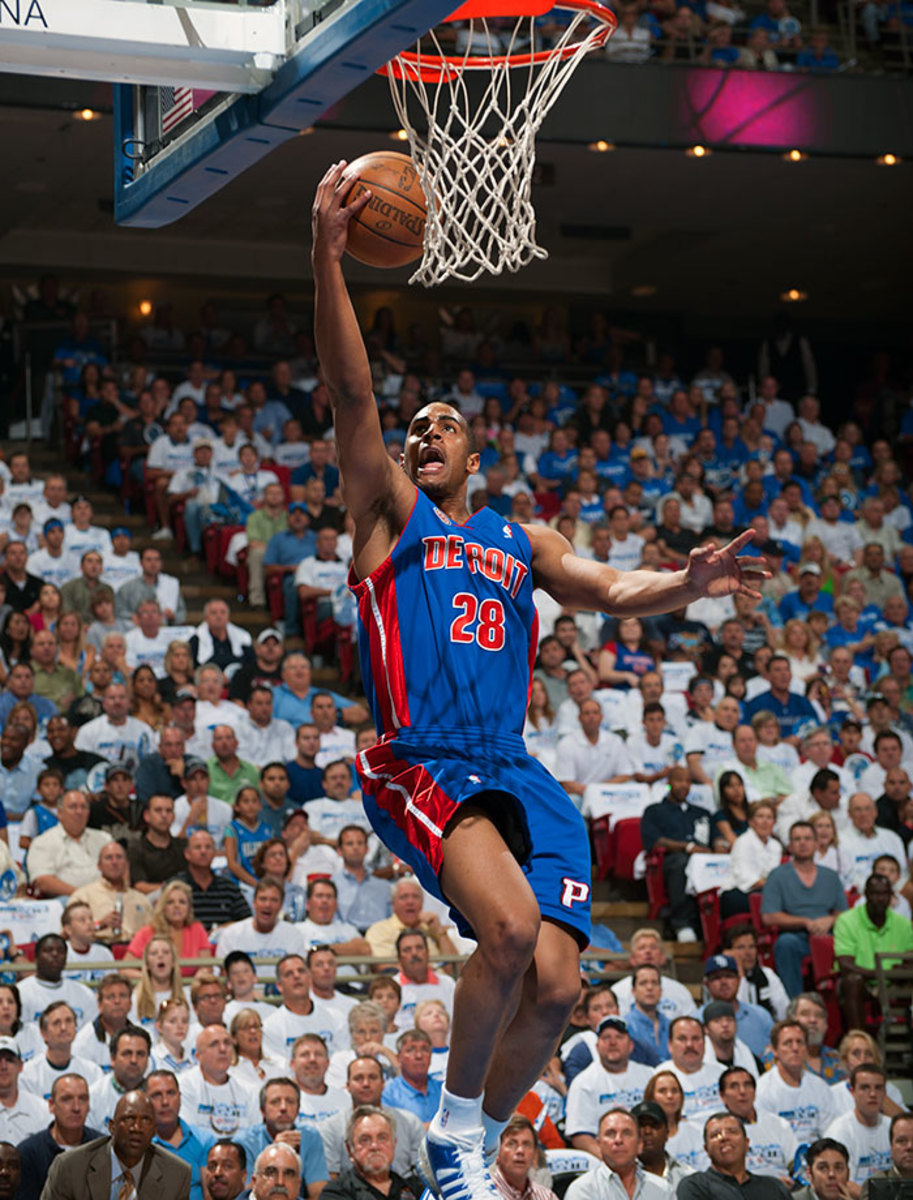
Afflalo has been a steady, useful two-way player eight seasons into his career, peaking in 2013-14 with Orlando where he put up 18.2 points and shot 42.7% from three. The UCLA product and Compton native also famously inspired a song by rapper Kendrick Lamar. He begins next season as a Knick.
29 — Paul Silas
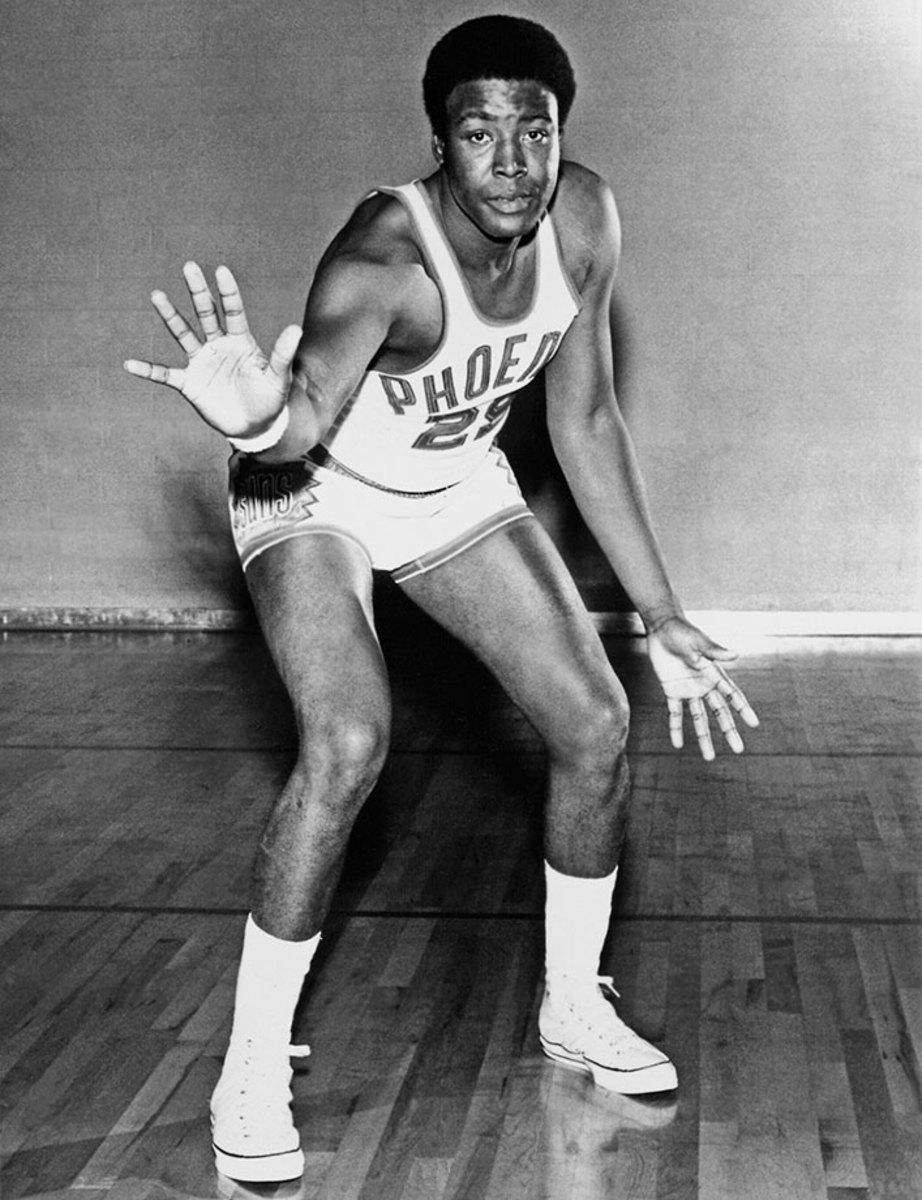
A two-time All-Star, Paul Silas played in three different decades and won three NBA championships (two with the Boston Celtics and one with the Seattle Supersonics). At just 6’7”, Silas was one of the best rebounders of his era, leading the NBA in offensive boards per game in the 1975-76 season. — Runner-up: Pervis Ellison
30 — Bernard King
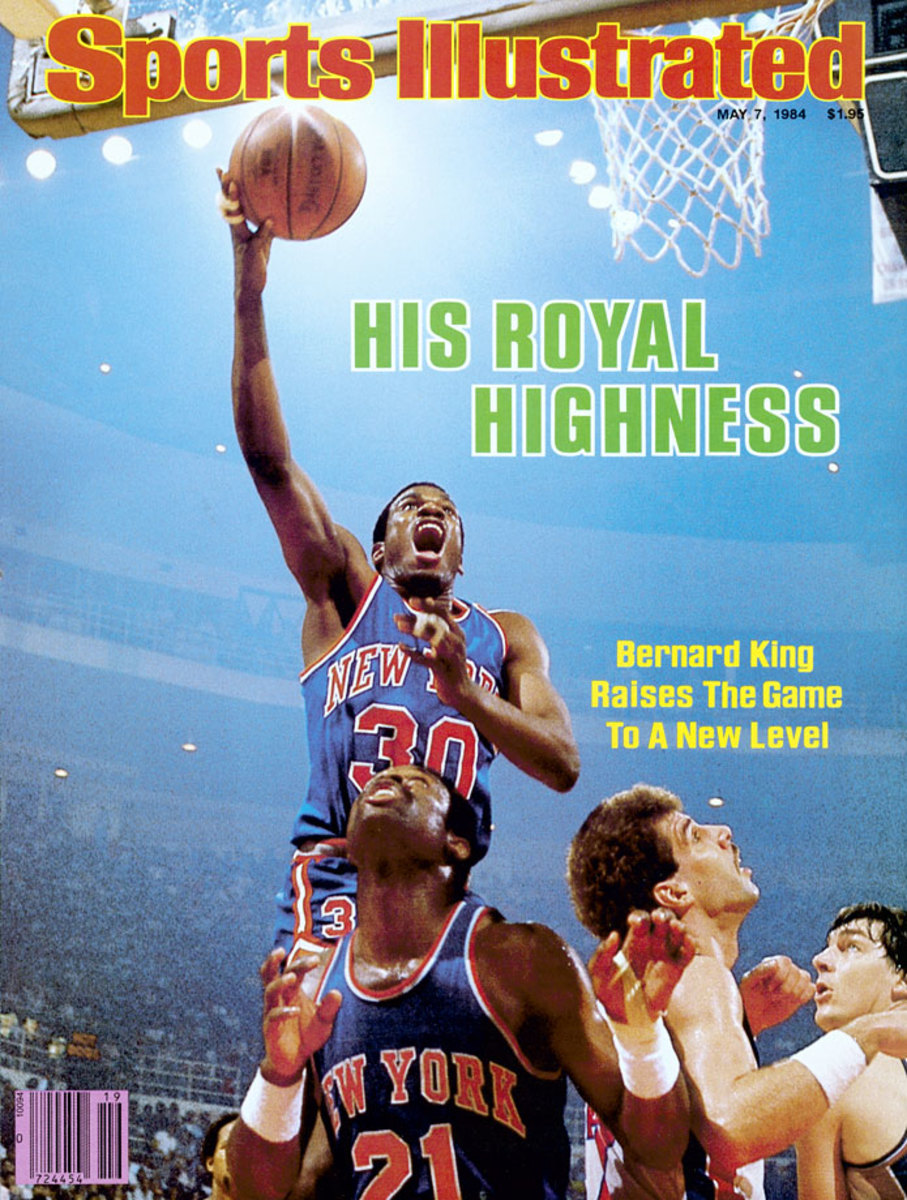
A tremendous athlete and gifted scorer, King came into the league averaging 24.2 points per game as a rookie and went on to become one of the most dominant offensive forwards of the ‘80s. A torn ACL in 1985 sidelined him for more than a year, and he was never quite the same—although he put together a strong comeback at the end of his career, with an impressive 28.4 points at age 34 in his second-to-last season. — Runner-up: Stephen Curry
31 — Reggie Miller
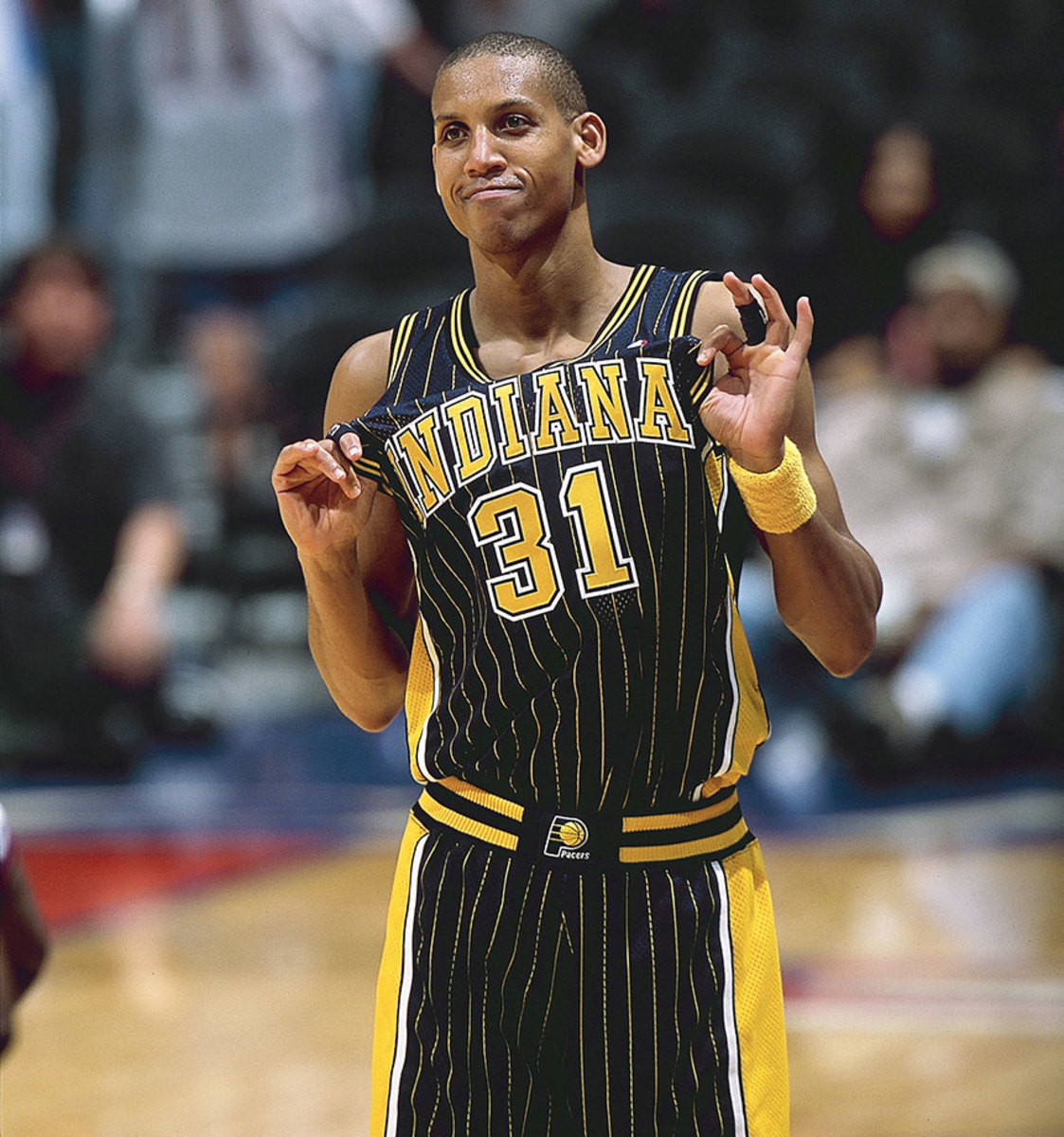
For several years, Reggie Miller was the NBA’s all-time leader in career three-pointers drained. Miller still ranks second, only behind Ray Allen. A five-time All-Star, Miller brought it in the postseason as well, most notably his clutch eight points in nine seconds to beat the New York Knicks in 1995. He led the Pacers to the 2000 NBA Finals as well. — Runner-up: Shawn Marion
32 — Magic Johnson
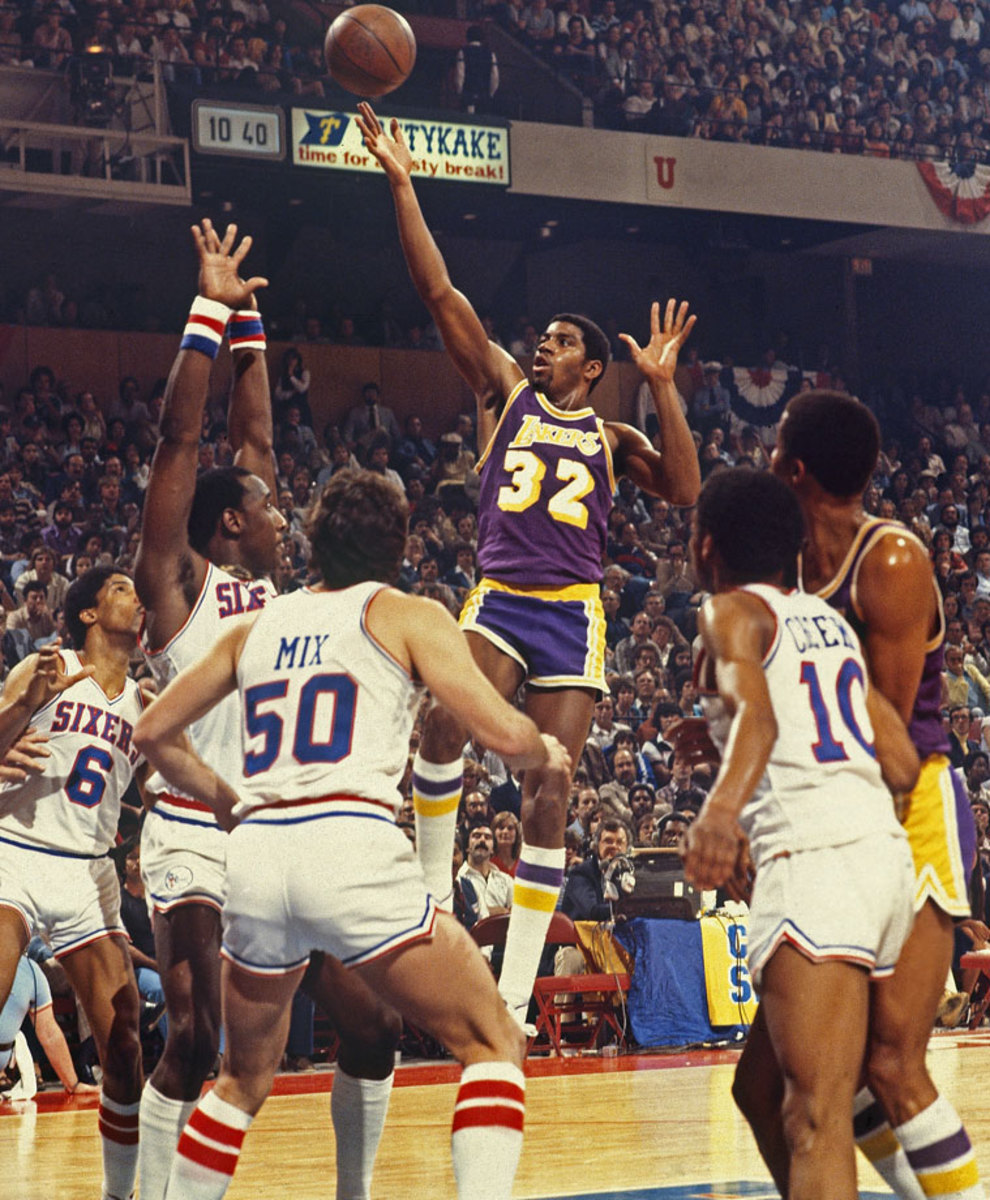
It’s hard to say enough about Magic, who changed perceptions of what a point guard could be, won multiple titles and became one of the NBA’s most engaging personalities all at once. A five-time NBA champ, three-time MVP, nine-time first-team All-NBA and 12-time All-Star, Johnson, with his playoff hardware and impact on the game, edges out Malone for this spot in a tight one. — Runners-up: Karl Malone, Kevin McHale
33 — Kareem Abdul-Jabbar
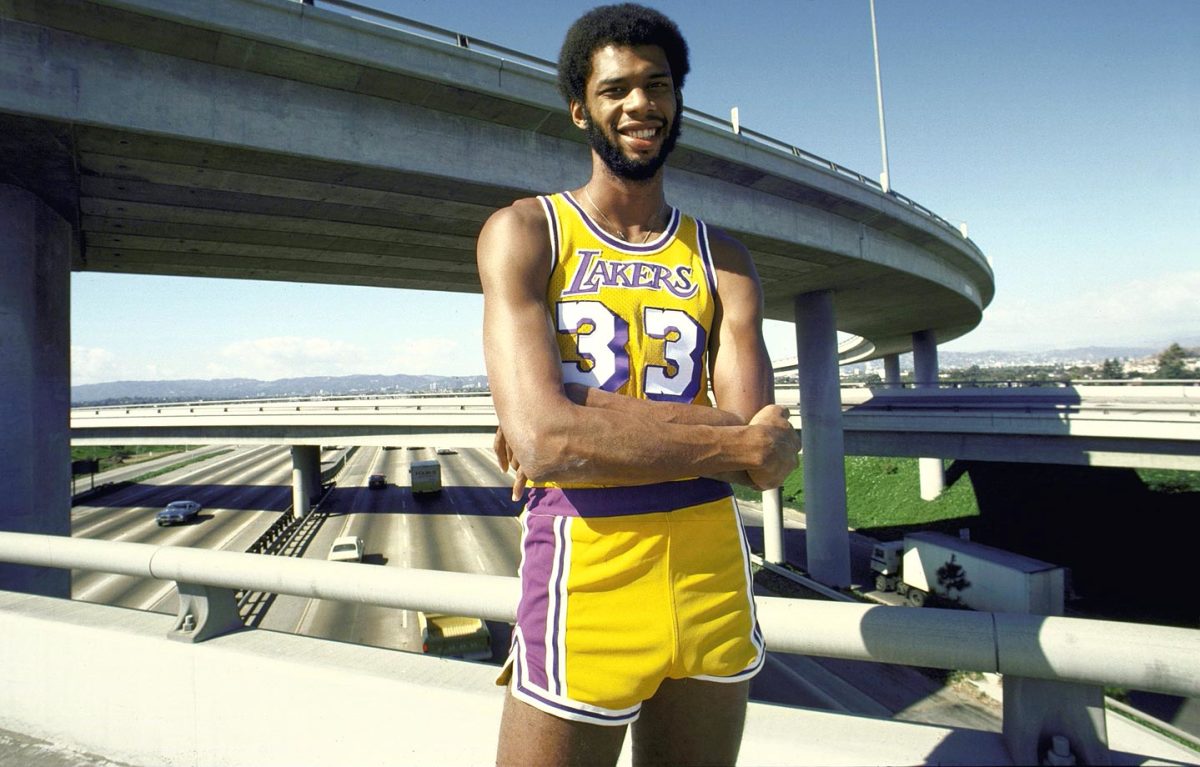
Clearly one of the greatest players ever, Abdul-Jabbar is the NBA’s all-time leading scorer by a mile and played in the second-most games of any player in history behind only Robert Parish. Kareem was an All-Star in 19 of his 20 seasons and claimed six championships. His skyhook will, of course, forever be legendary. — Runners-up: Larry Bird, Scottie Pippen
34 — Shaquille O’Neal
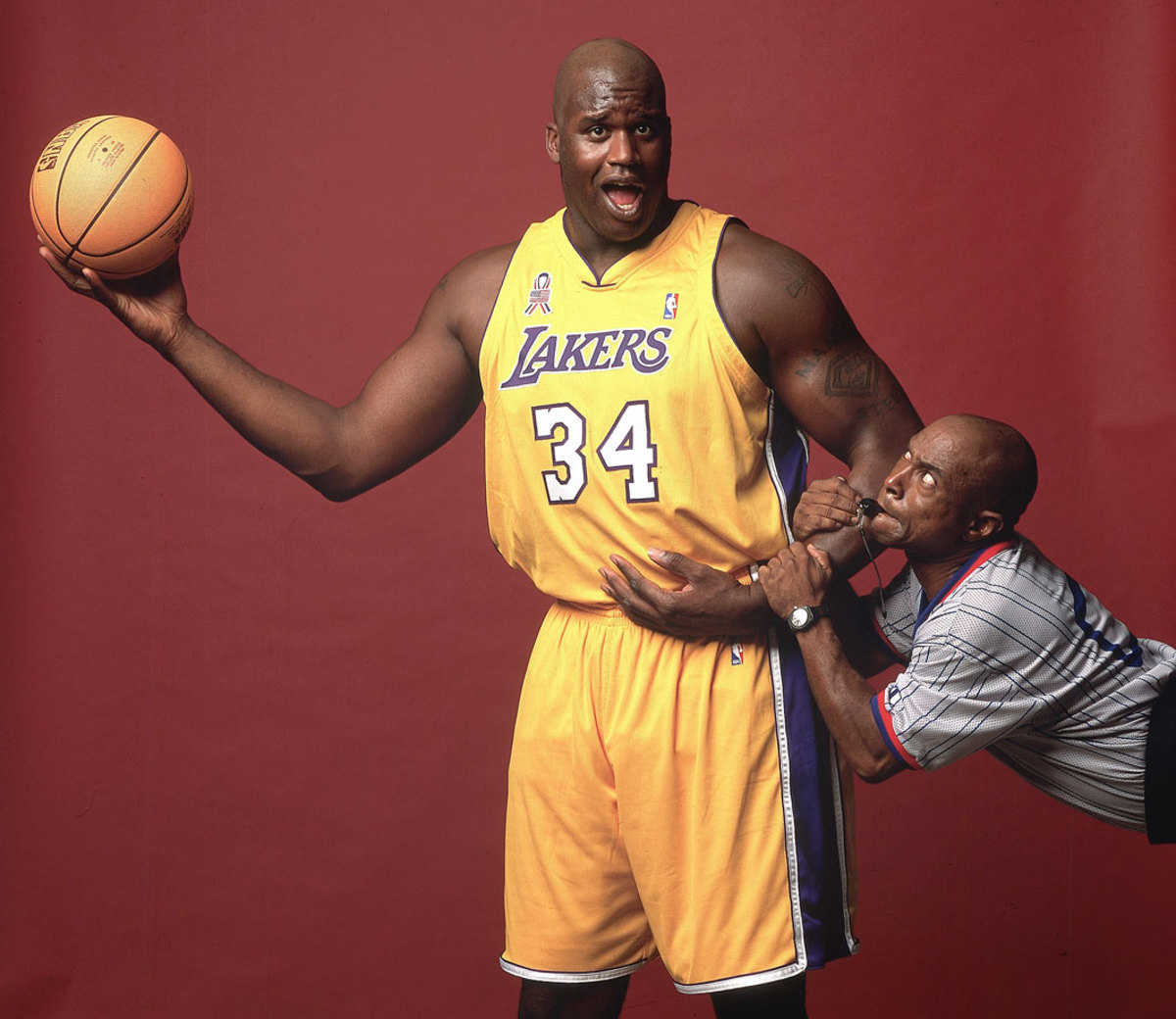
Prime Shaq has a case as the most singularly dominant individual player ever, with his blend of power and quickness, soft touch and ability to impose his will on the court. Four titles, three Finals MVPs and 15 All-Star appearances help Shaq’s résumé edge out the competition in one of the more difficult jersey number debates. — Runners-up: Hakeem Olajuwon, Charles Barkley, Ray Allen
35 — Kevin Durant
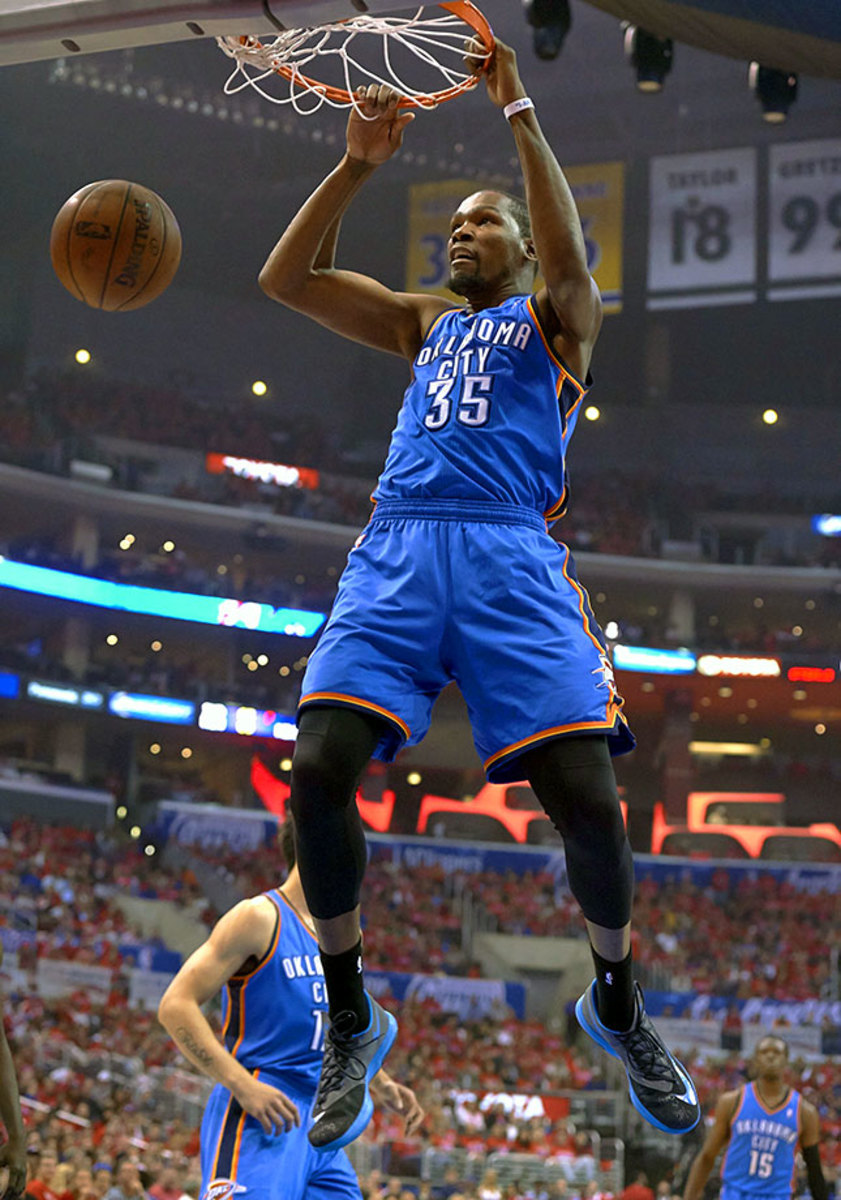
There’s a reason the entire NBA is holding its collective breath awaiting the 2016 offseason. Durant will be the biggest potential free agent since LeBron James in 2010. He’s a six-time All-Star, a four-time scoring leader and has an MVP to his name. Here’s to hoping he can return seamlessly after three foot surgeries. — Runner-up: Rudy LaRusso
36 — Rasheed Wallace
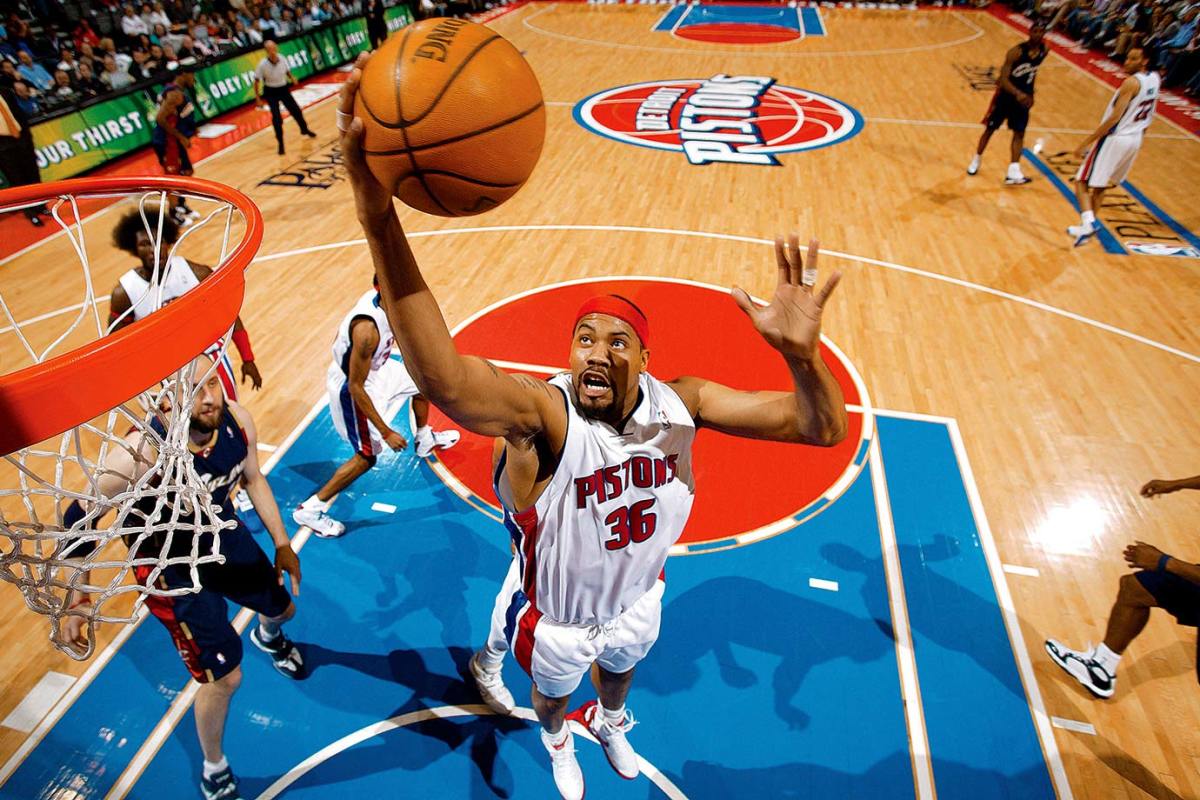
‘Sheed wore No. 30 for a large portion of his career, too, but he’s by far the most talented to don No. 36 (save for Shaq, briefly — and we aren’t repeating players here). Wallace led Detroit’s ensemble cast to the 2005 title and was a major player in the emergence of the modern stretch-four position. Often controversial, at times transcendent...well, ball don’t lie.
37 — Nick Van Exel
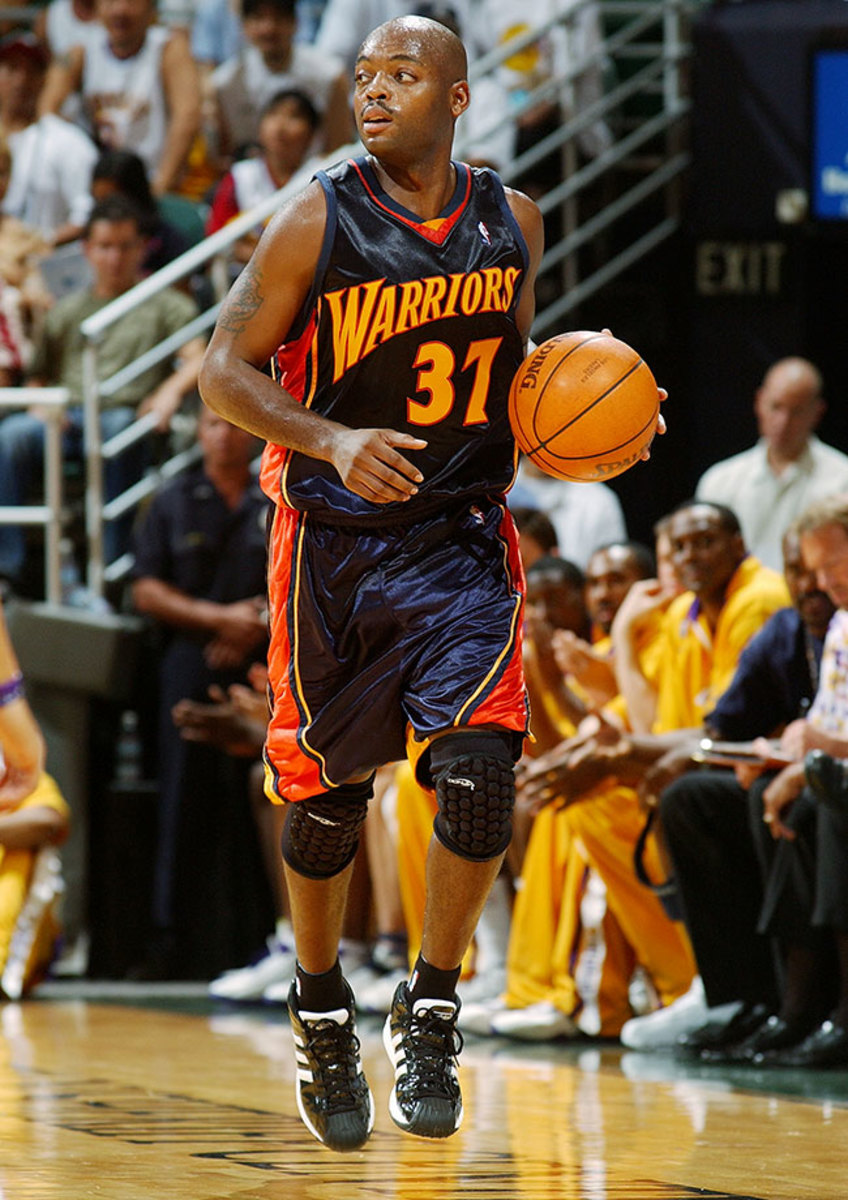
Nick Van Exel never quite found a home in the NBA, but he was far from a journeyman bouncing around from team to team. He played in one All-Star game, having always shown poise running the offense and performing in pick-and-roll sets. He ranks 22nd all-time in career three-pointers made. — Runner-up: Metta World Peace
38 — Viktor Khryapa
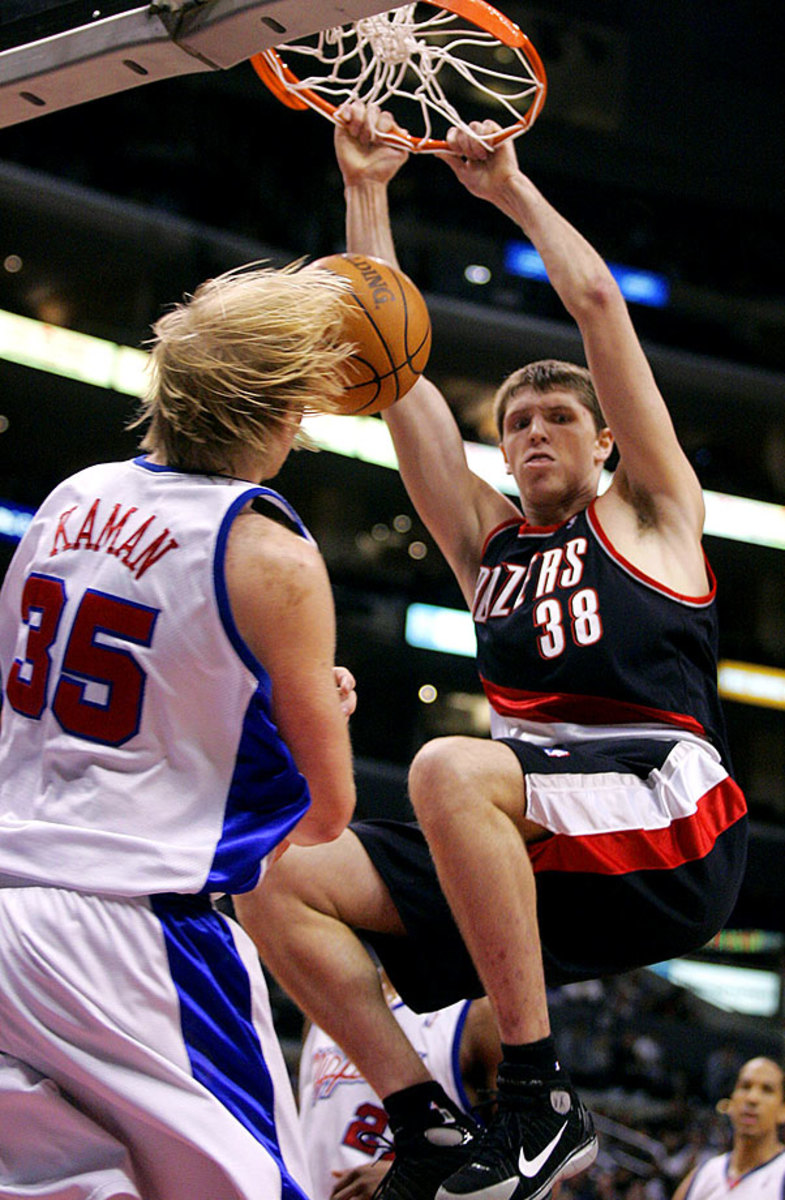
Khryapa struggled to find a home in the NBA and was done after four years, but has been a top player back in his native Russia before and after his American stint. He averaged 5.8 points and 4.4 rebounds for Portland in his best season.
39 — Jerami Grant
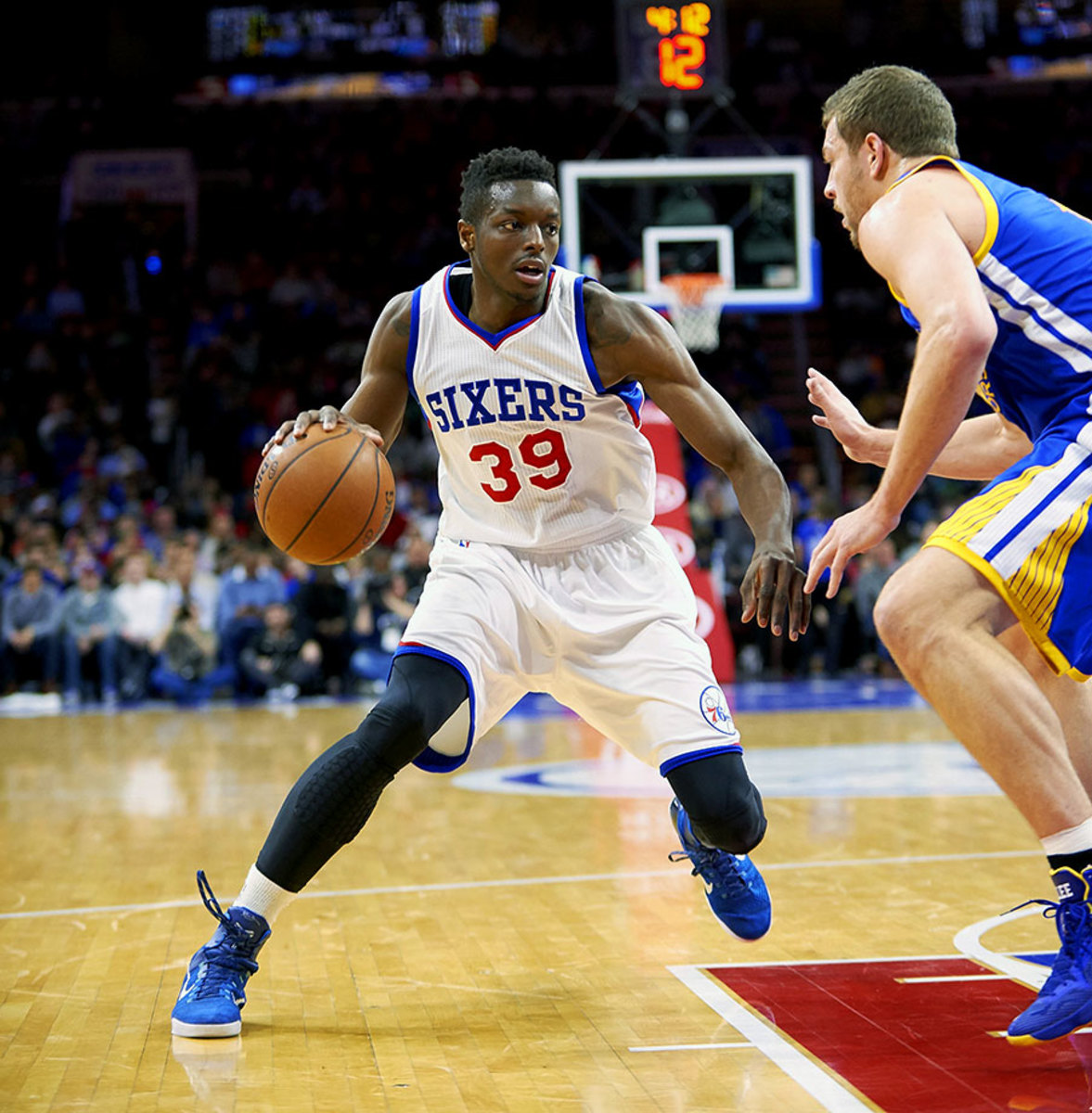
In just one NBA season, Grant posted the best statistical year of any player to don a No. 39 jersey. Grant settled on No. 39 after the Sixers made him the 39th pick in the 2014 NBA draft. He showed tremendous strides in his first season, draining 31.4% of his three-pointers on 156 attempts after hoisting just 20 triples in his two years at Syracuse. — Runner-up: Greg Ostertag
40 — Shawn Kemp
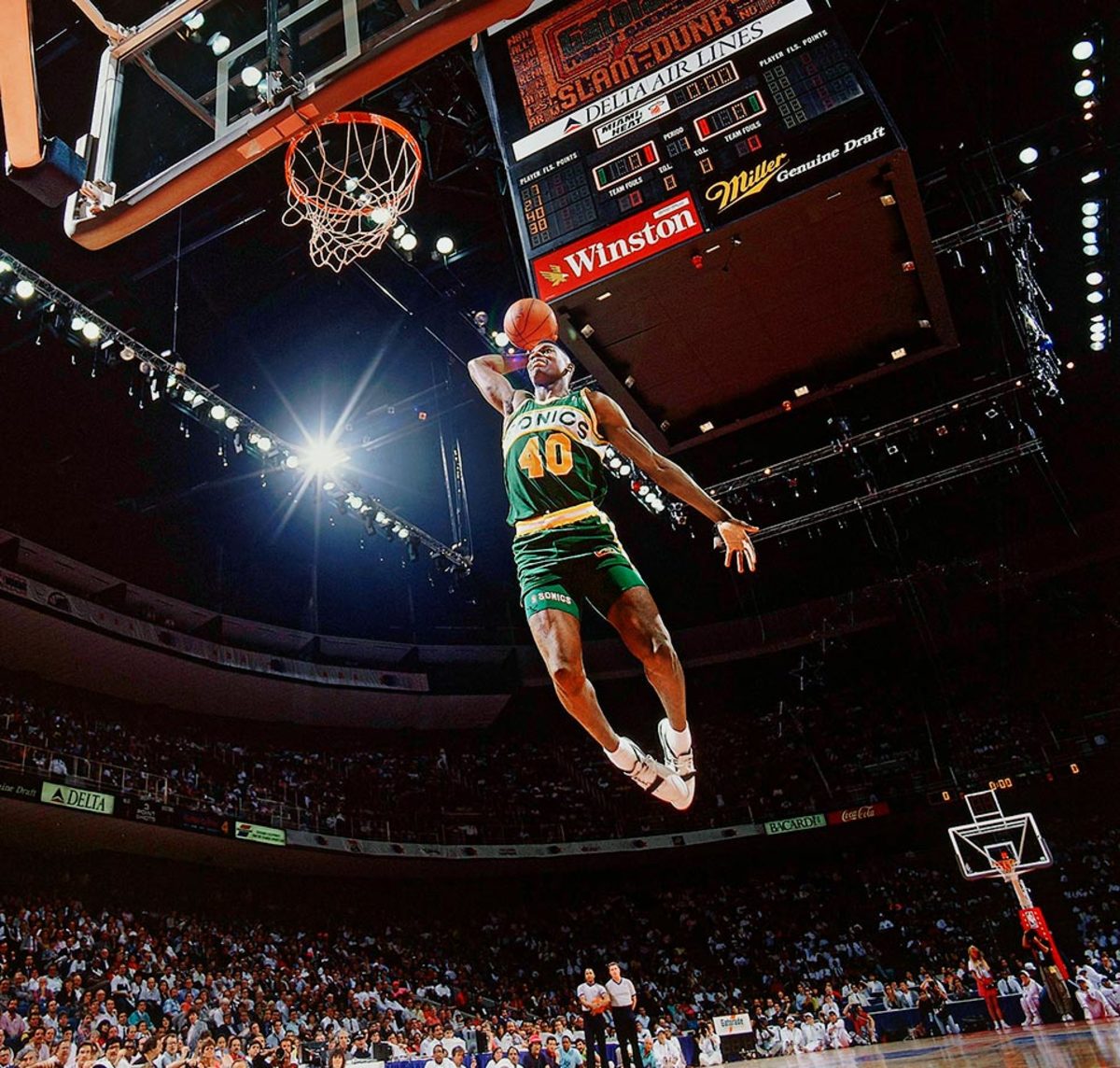
Kemp quickly became one of the NBA’s most exciting players and finished a six-time All-Star, his one-two punch with Gary Payton remaining one of the league’s more iconic pairings. At his best, he was a double-double machine and effective shot-blocker, threat to dunk on his defender and anchor for the Sonics on the way to the ‘96 NBA Finals, where they’d fall to Jordan, Pippen and the Bulls. —Runner-up: Bill Laimbeer
41 — Dirk Nowitzki
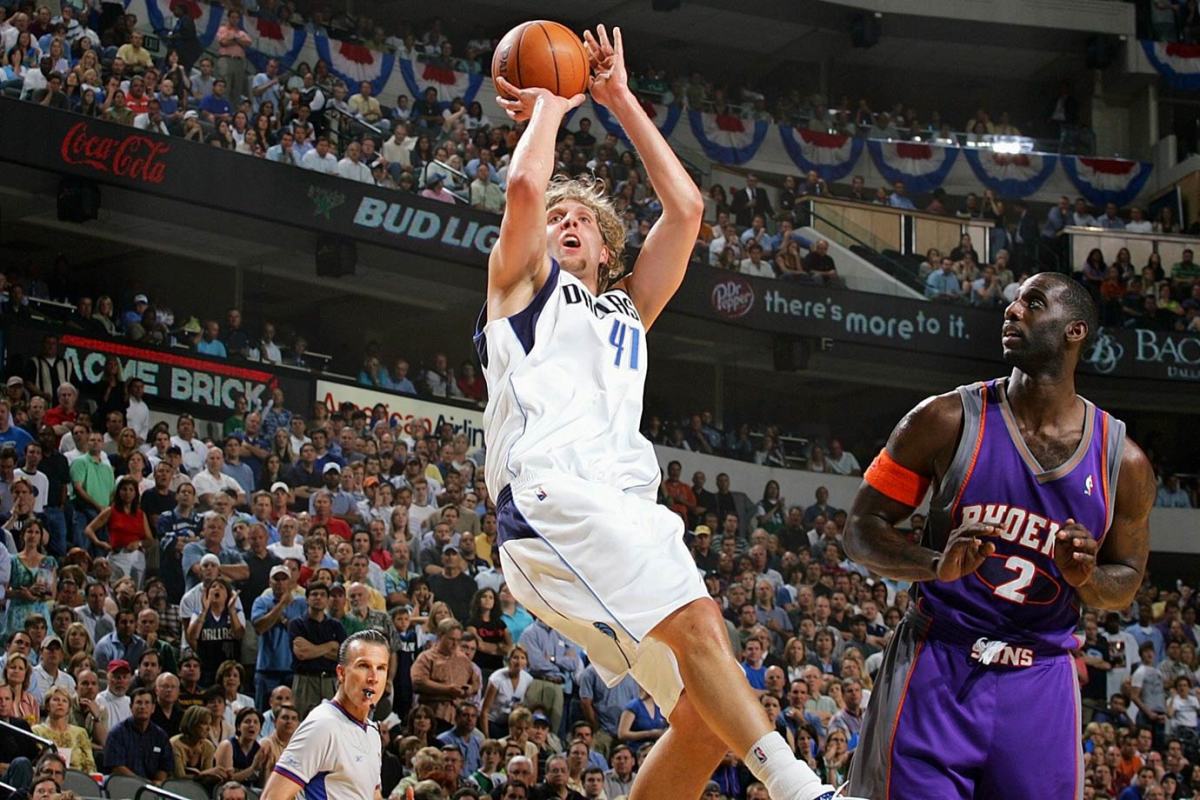
Arguably the greatest shooting big man of all-time, Nowitzki cemented his legacy after leading the Mavericks to a come-from-behind championship against the Heat in 2011. Nowitzki claimed the 2006 regular season MVP and has appeared in 13 All-Star Games. — Runners-up: Wes Unseld, Glen Rice
42 — James Worthy
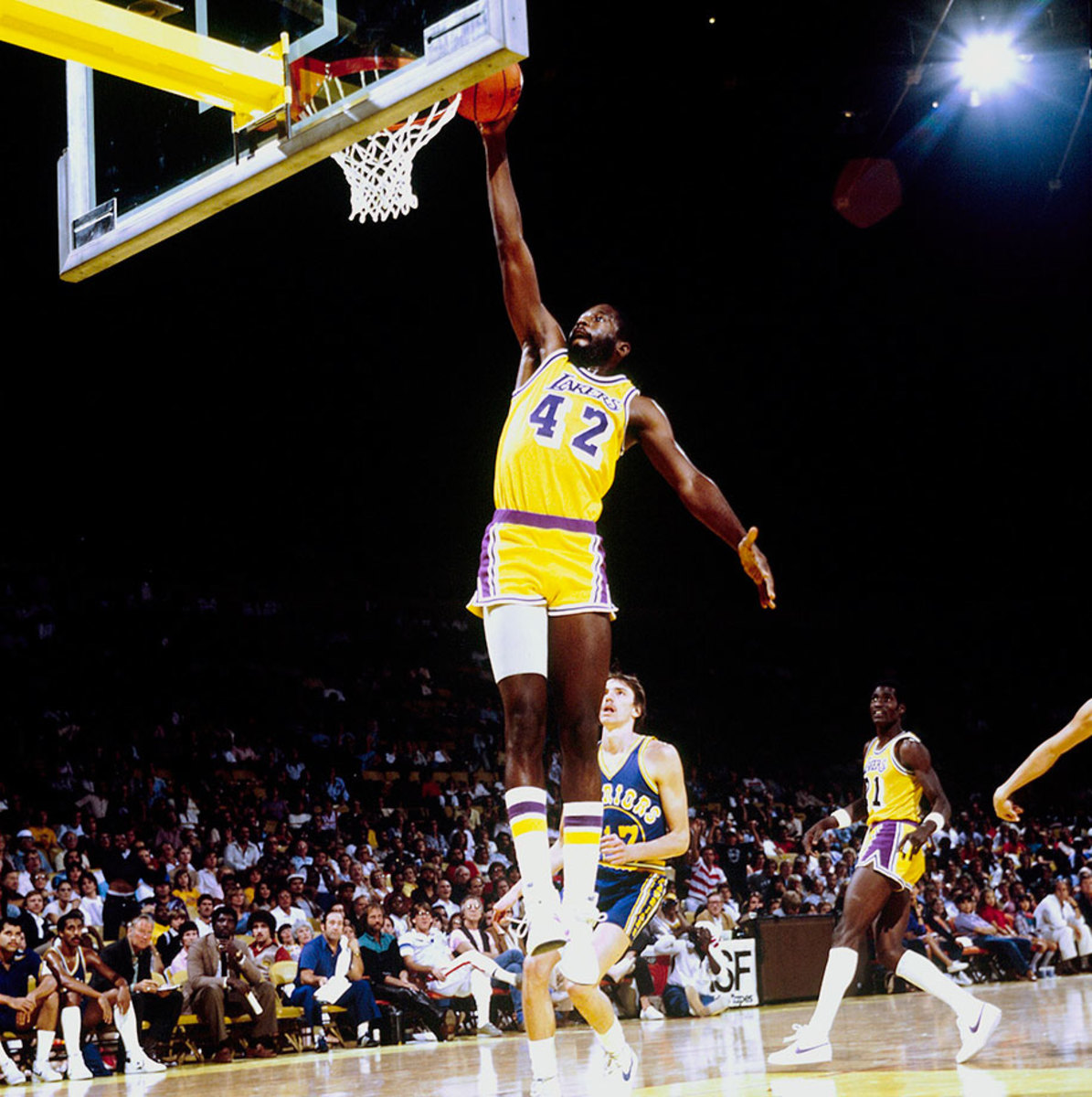
Worthy spent much of his career as the third banana on the Lakers alongside Kareem and Magic, but became an all-time great one in the process, getting his numbers and playing a critical role throughout. He averaged 17.6 points on 52.1% shooting in his 12 years as a Laker and came away a three-time NBA champion and seven-time All-Star. — Runners-up: Elton Brand, Kevin Love, Connie Hawkins
43 — Jack Sikma
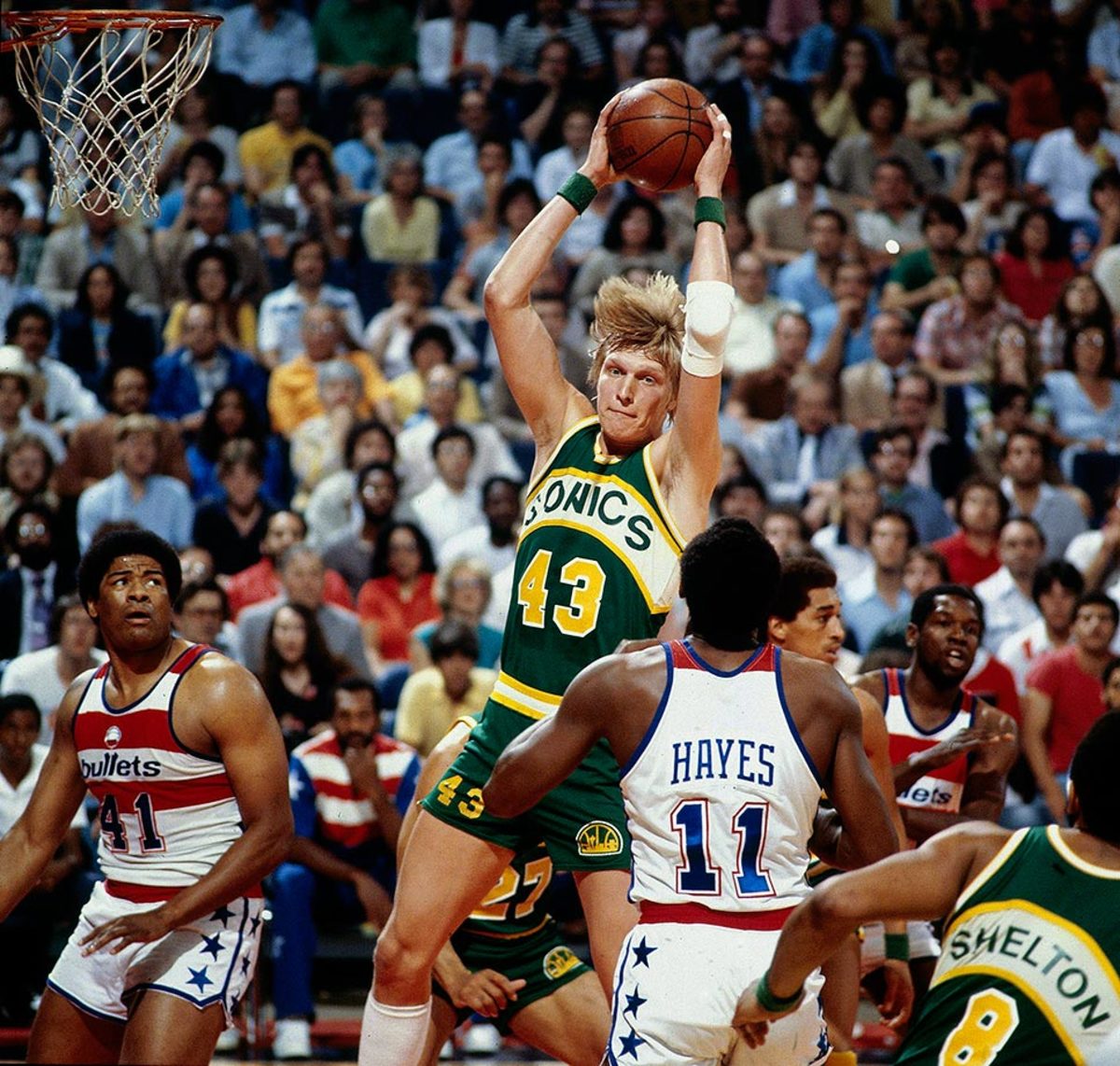
At just 23 years old, Sikma helped the Seattle Supersonics claim their only championship in franchise history, averaging 14.8 points and 11.7 rebounds per game in the 1979 postseason. A seven-time All-Star, Sikma ranks 30th all-time in NBA history in career total rebounds. — Runner-up: Brad Daugherty
44 — Jerry West
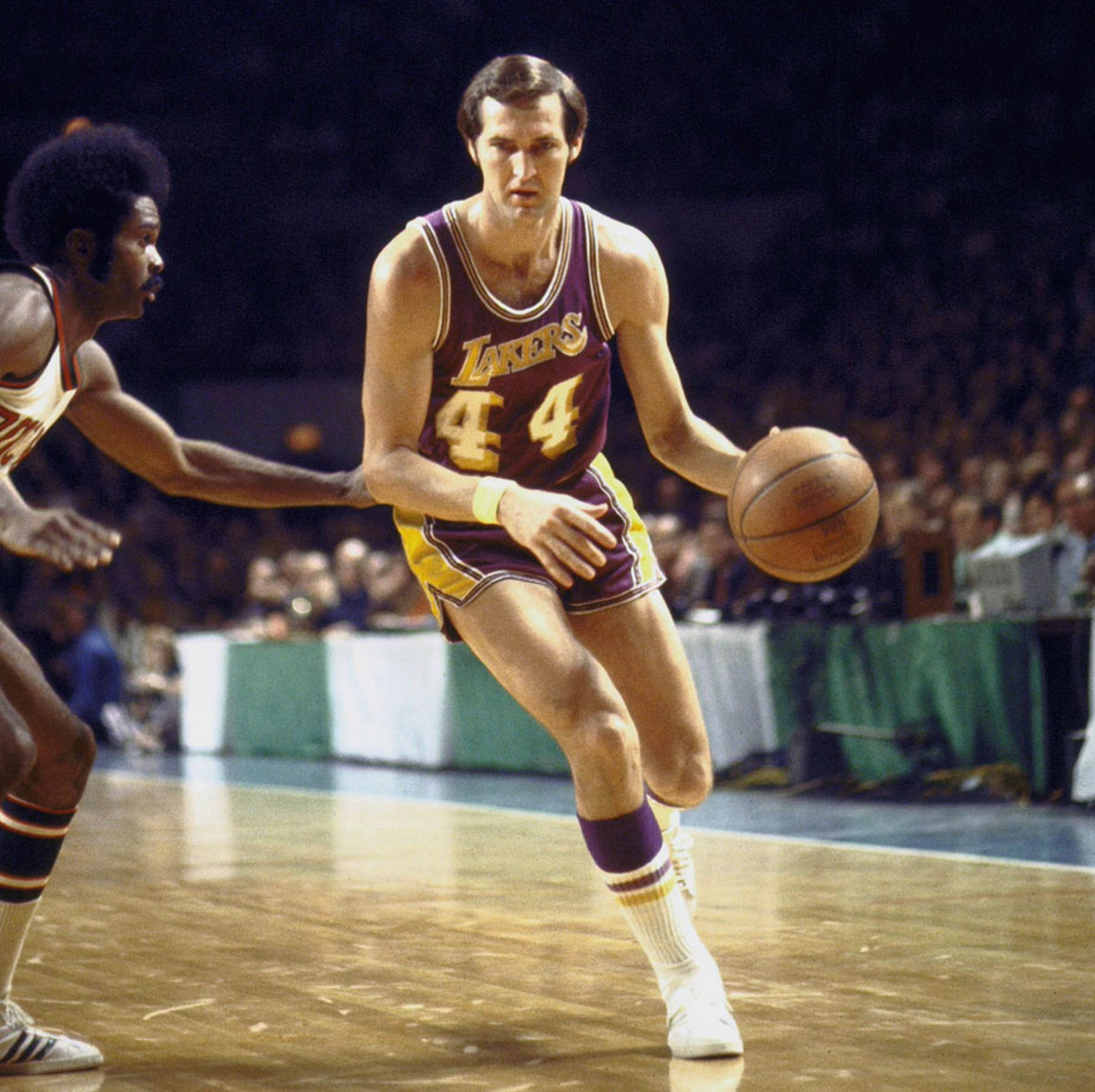
He’s on the NBA logo and forever etched into its history as a player and executive. Jerry West was a 14-time All-Star and 1972 NBA champion, and lost in the historic romanticism and his efforts in the Lakers’ front office is the fact that he straight up put the ball in the basket. With an average of 27 points per game over 14 seasons, all before the advent of the three point line, West’s transcendence as a player is tough to argue against. — Runner-up: George Gervin
45 — Rudy Tomjanovic
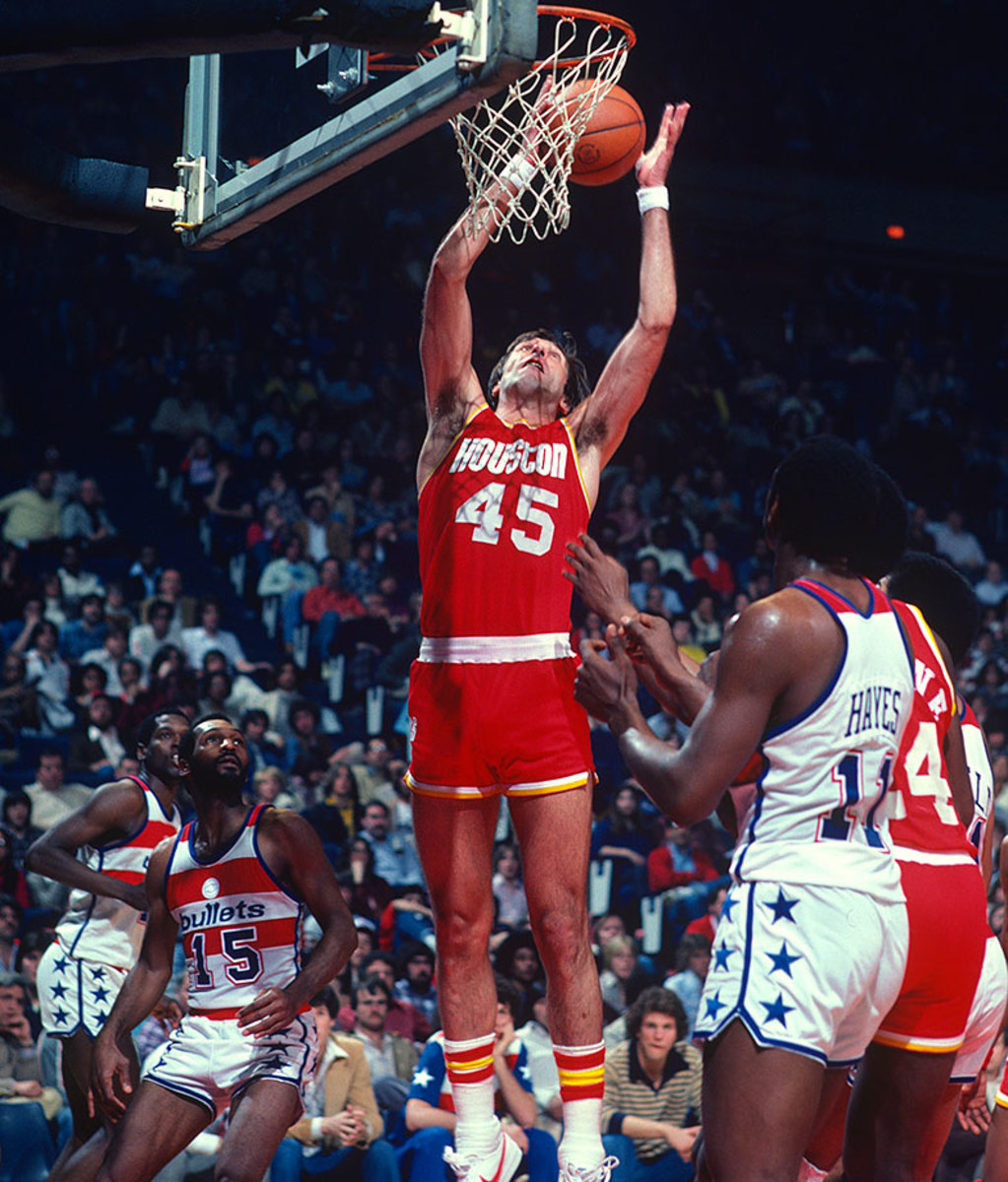
The No. 2 overall pick in the 1970 NBA draft, Rudy Tomjanovic is the third leading scorer in Rockets franchise history behind only Calvin Murphy and Hakeem Olajuwon. A five-time All-Star, Tomjanovic’s last name was so long, the back of his jersey often read, “Rudy T.” — Runner-up: A.C. Green
46 — Bo Outlaw
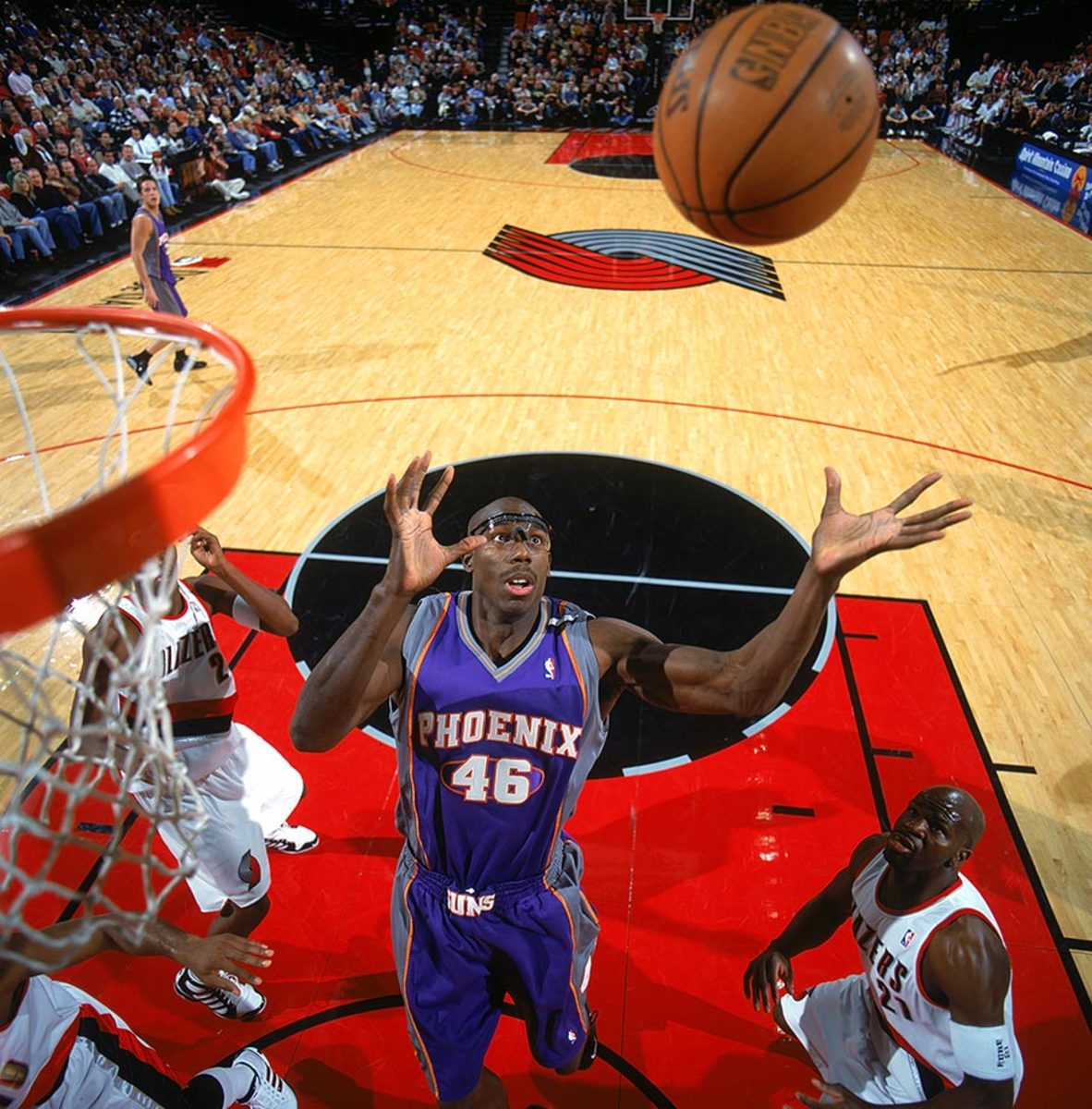
A terrific athlete, tough defender and abysmal free-throw shooter, Outlaw carved out a long career for himself despite an uninspiring statistical profile. His game peaked in 1998, with 25 points, 13 rebounds and 10 assists in a win as a member of the Magic. A reporter asked him how he felt about his triple-double, which led to Outlaw’s famous reply: “What’s that? Some kind of hamburger?”
47 — Andrei Kirilenko
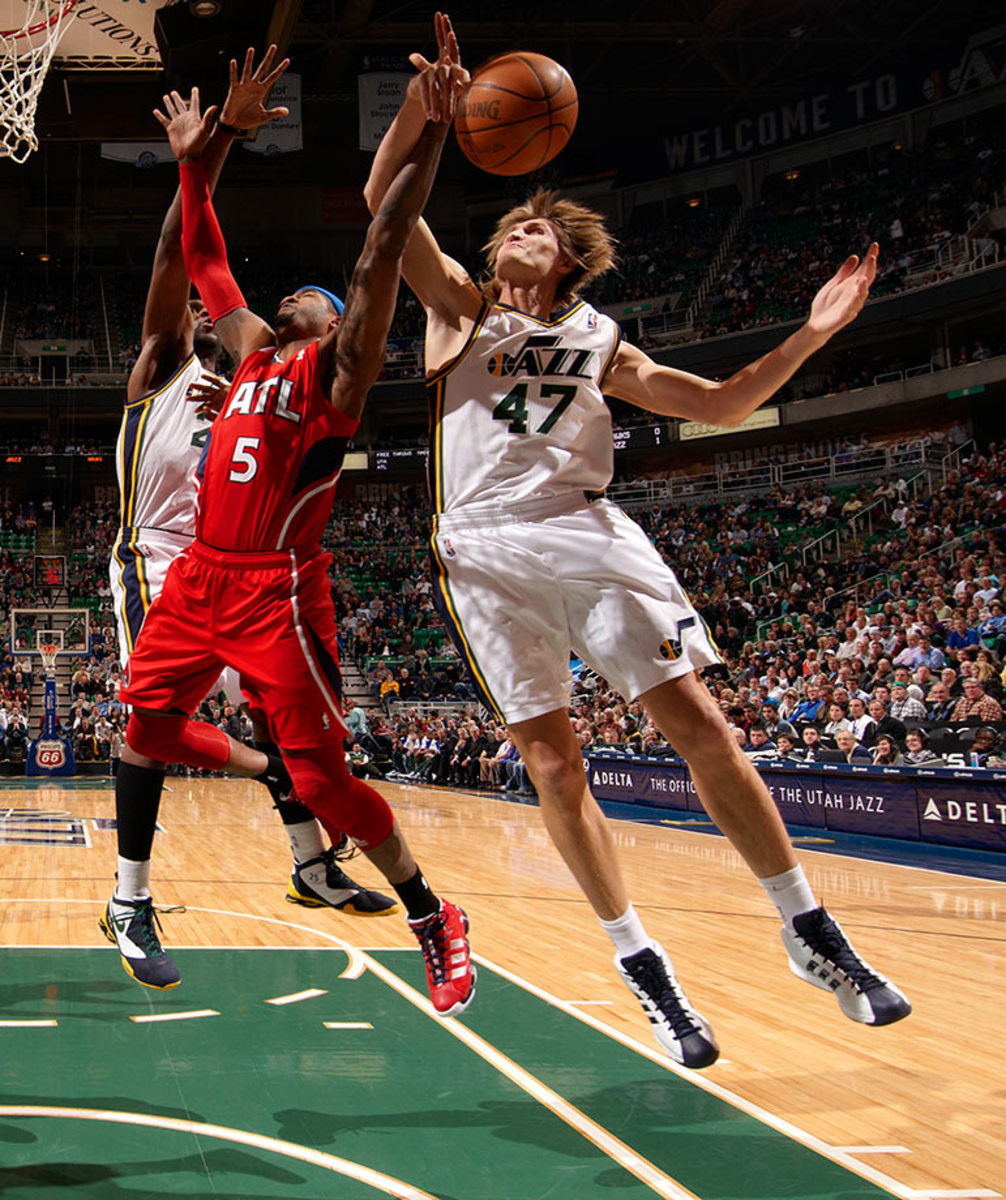
In 2001, Kirilenko joined the Jazz after Utah made him the first Russian player drafted in NBA history in 1999. Kirilenko was named an All-Star in 2004 and was a three-time first-team All-Defense selection. Kirilenko was instrumental in Utah’s transition from John Stockton and Karl Malone to the Deron Williams and Carlos Boozer era. — Runner-up: Scott Williams
48 — Nazr Mohammed
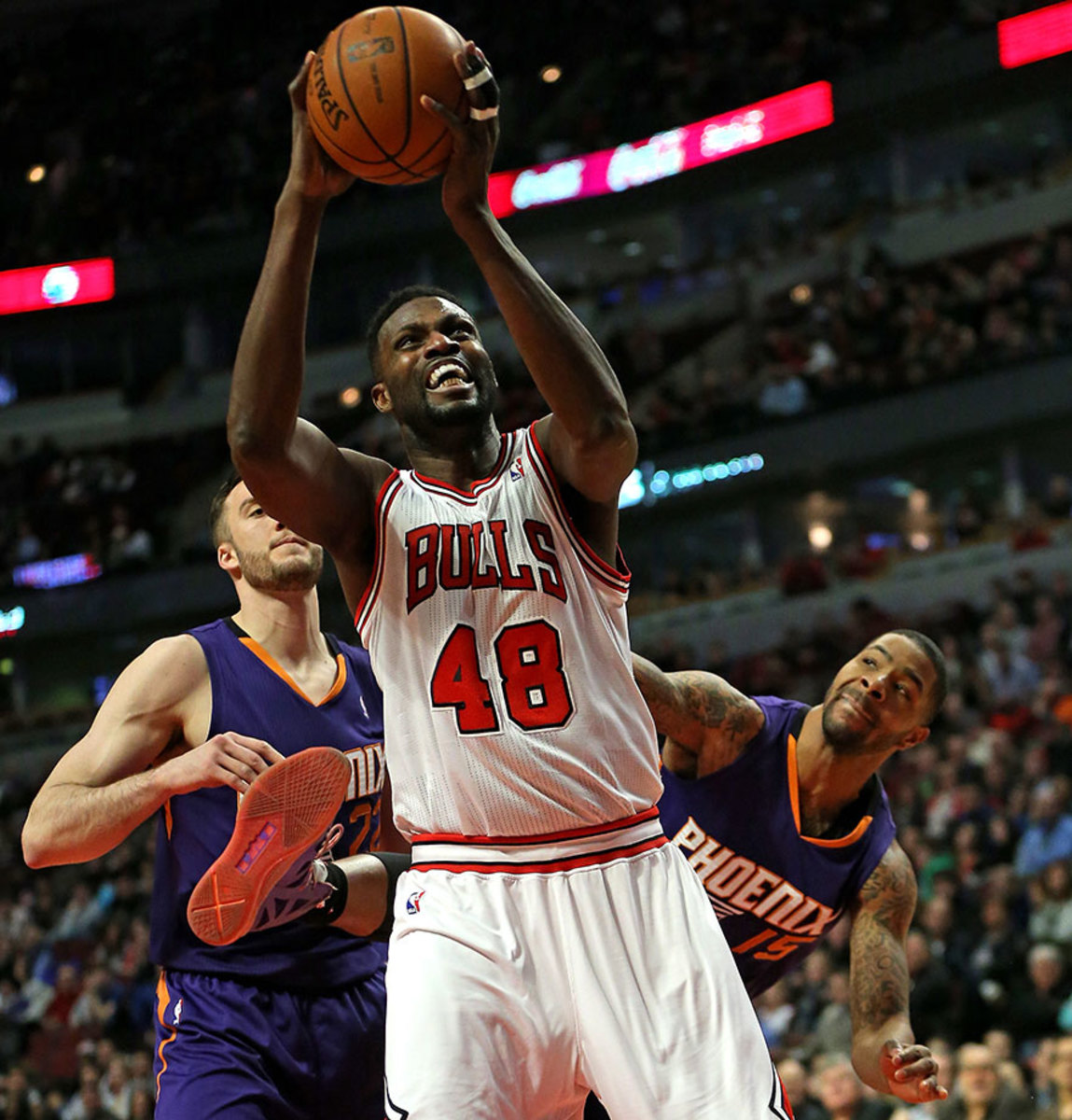
A career journeyman, Mohammed had serviceable years earlier in his career before seeing his playing time dwindle with age in Oklahoma City and now Chicago. He won a title in 2005 as a backup with the Spurs but peaked statistically as a Hawk in 2001-02, with 9.1 points and 7.9 boards per game.
49 — Shandon Anderson
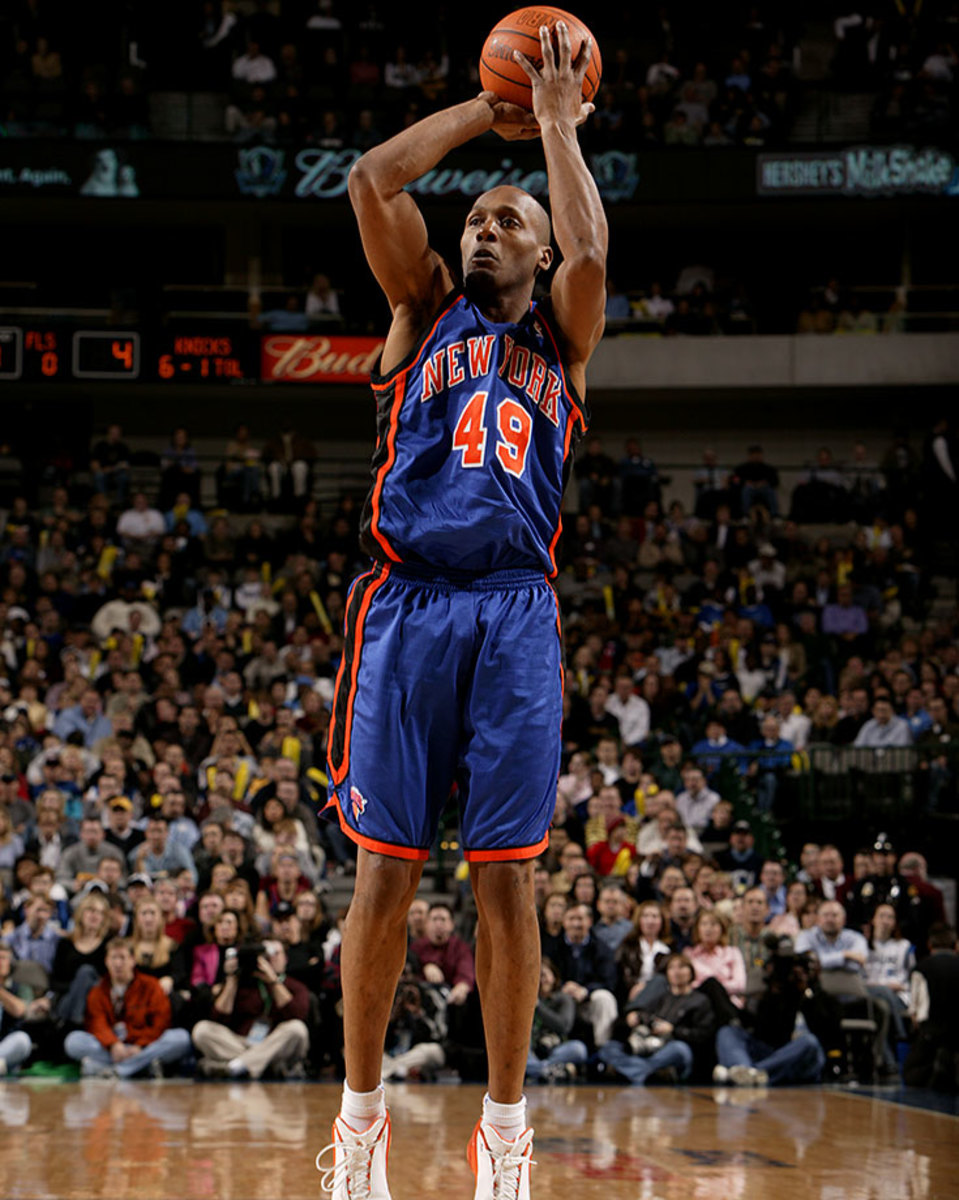
Anderson far exceeded expectations throughout his career after being drafted with the 54th pick in the 1996 NBA draft. In his 10-year career, Anderson’s best season came in 1999-2000, when he averaged 12.3 points, 4.7 rebounds and 2.9 assists per game for the Rockets. He was a reserve on the Heat’s 2006 championship team. — Runner-up: Mel McCants
50 — David Robinson

The Admiral was an incredible talent whose individual greatness occasionally gets lost because of the team-first nature of the Spurs’ dynasty and Tim Duncan’s sustained quality. Robinson was part of the Spurs’ first two championships (1999 and 2003), teaming with Tim Duncan to lay the groundwork for what was to come. But a young Robinson could carry a team, make no mistake about it: he averaged 29.8 points and 10.7 rebounds in 1994 and averaged 21.1 points for his career. — Runners-up: Steve Mix, Ralph Sampson, Zach Randolph
51 — Reggie King
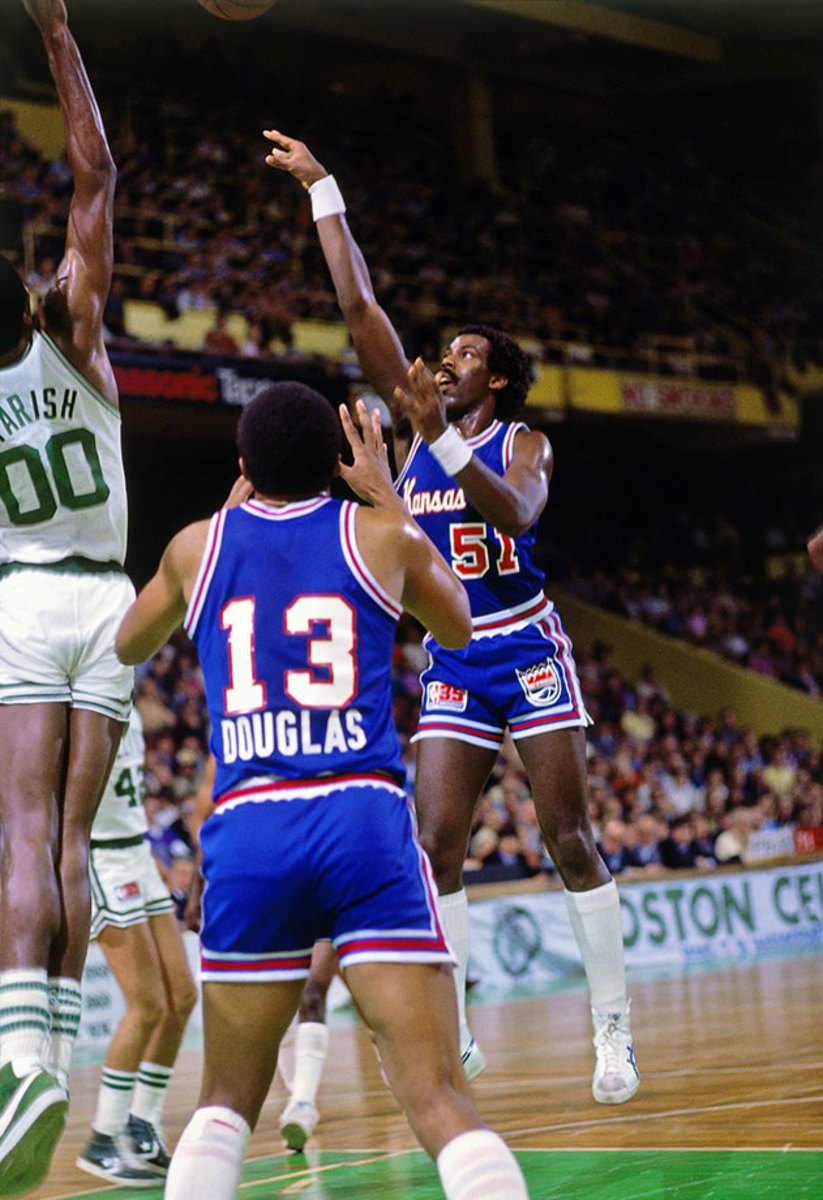
The 18th overall pick in the 1979 NBA draft, King played four seasons for Kansas City before finishing his career for two years in Seattle. During his second year with the Kings, in 1980-81, King posted his best season, averaging 14.9 points and 9.7 rebounds and shot 54.% from the field. — Runner-up: Lawrence Funderburke
52 — Jamaal Wilkes
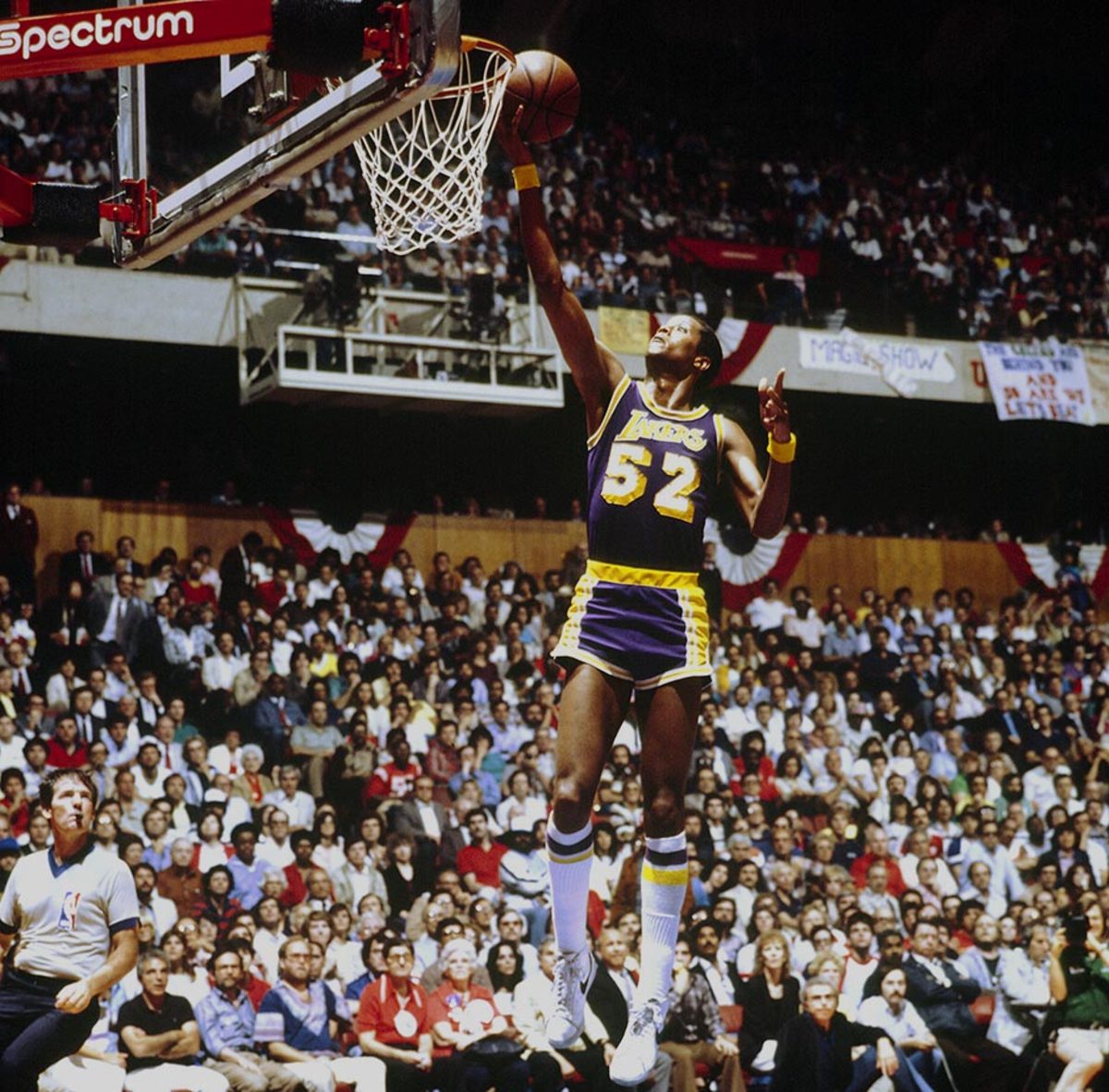
Overshadowed by star teammates but statistically impressive, Wilkes was a key player in the Lakers’ incredible run of success. He won Rookie of the Year as part of Golden State’s title team in 176, captured three titles with the “Showtime” Lakers and averaged 17.7 points and 6.2 rebounds for his career. There may not be a better metaphor for his career than this: he scored 37 points and 10 rebounds in 1980’s Game 6 to clinch the Finals, which happened to be the same game Magic famously started for Kareem at center and finished with 42 points, 15 rebounds and seven assists.
53 — Artis Gilmore
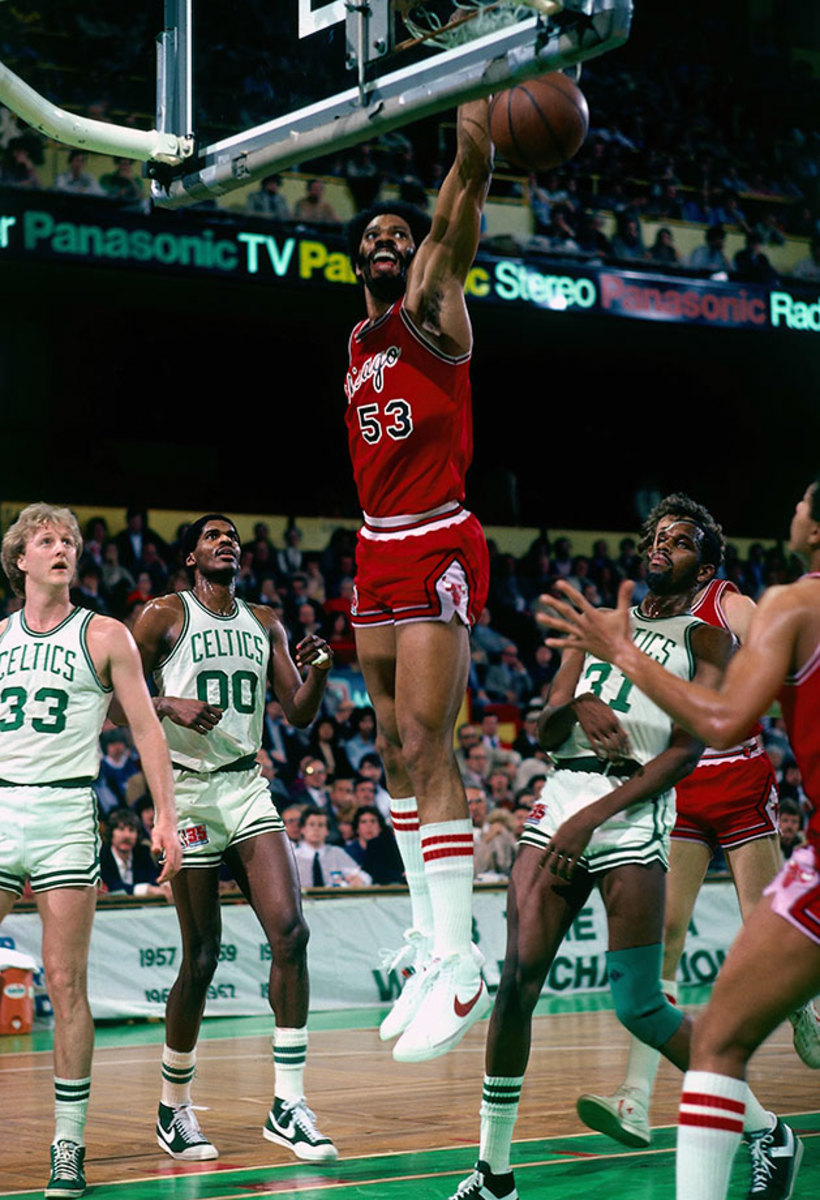
Still the NCAA’s all-time leader in rebounds per game, Gilmore made five All-Star appearances in the ABA. The Chicago Bulls made Gilmore the No. 1 overall pick in the 1976 dispersal draft as part of the NBA-ABA merger. Gilmore appeared in six NBA All-Star games. He is still the NBA’s career leader in field goal percentage at 59.9%. — Runner-up: Darryl Dawkins
54 — Horace Grant
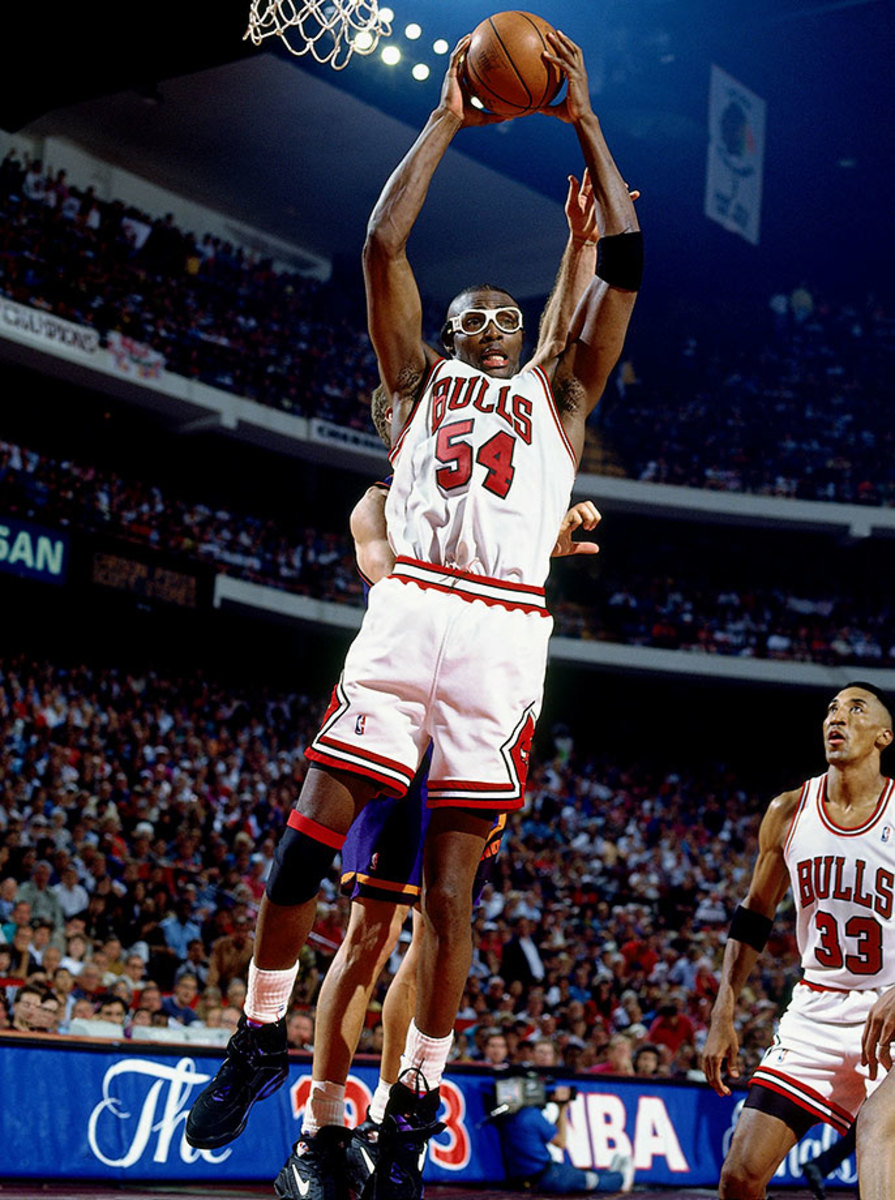
The Bulls drafted Grant five picks after Scottie Pippen in 1987, two moves that would greatly add to the cast around Michael Jordan and lead to Chicago’s first three-peat. Grant left the Bulls after an All-Star season in 1994. He never quite hit that peak again, but Grant was an effective two-way player and would earn another ring with the Lakers in 2001.
55 — Dikembe Mutombo
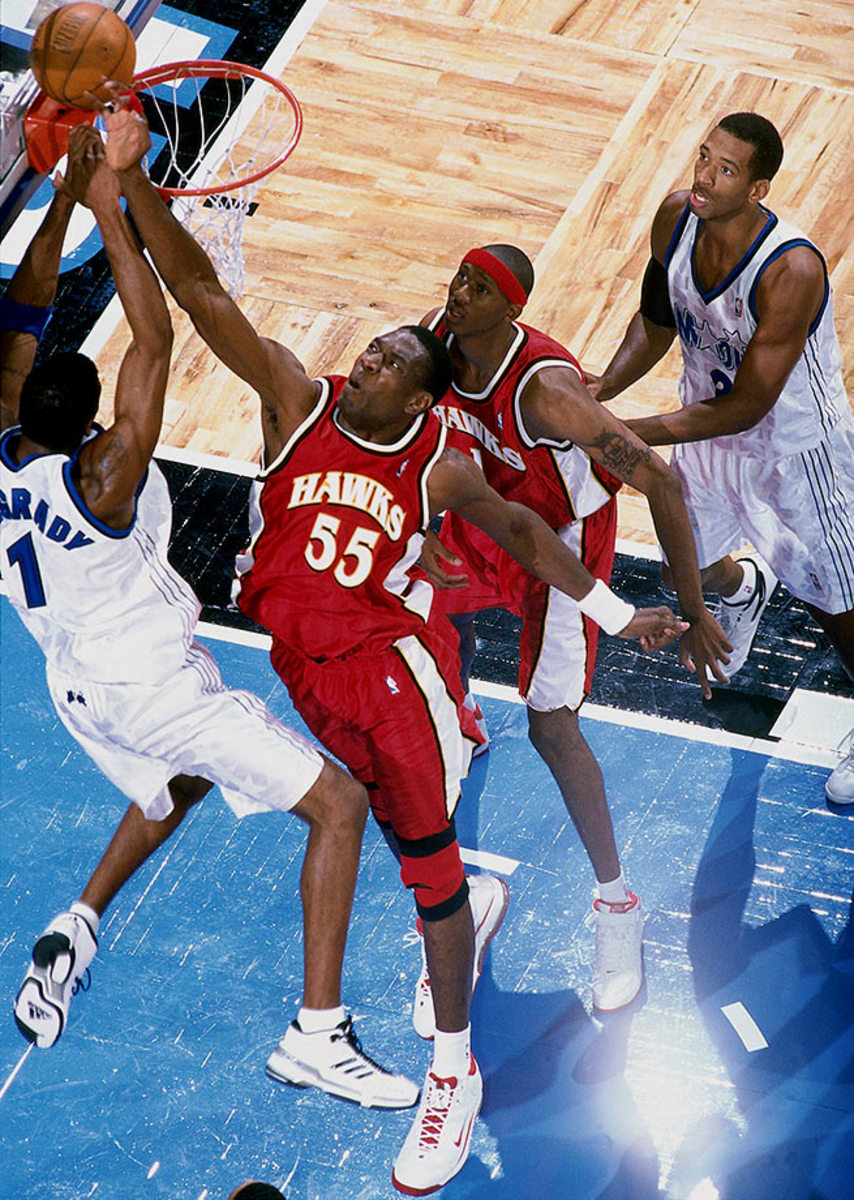
His full name, Dikembe Mutombo Mpolondo Mukamba Jean-Jacques Wamutombo, is almost as long as his stellar 18-year career. Mutombo ranks second all-time in NBA history in career blocks, was an eight-time All-Star and earned Defensive Player of the Year honors four times. He reached the playoffs in 13 seasons. — Runner-up: Kiki Vandeweghe
56 — Francisco Elson
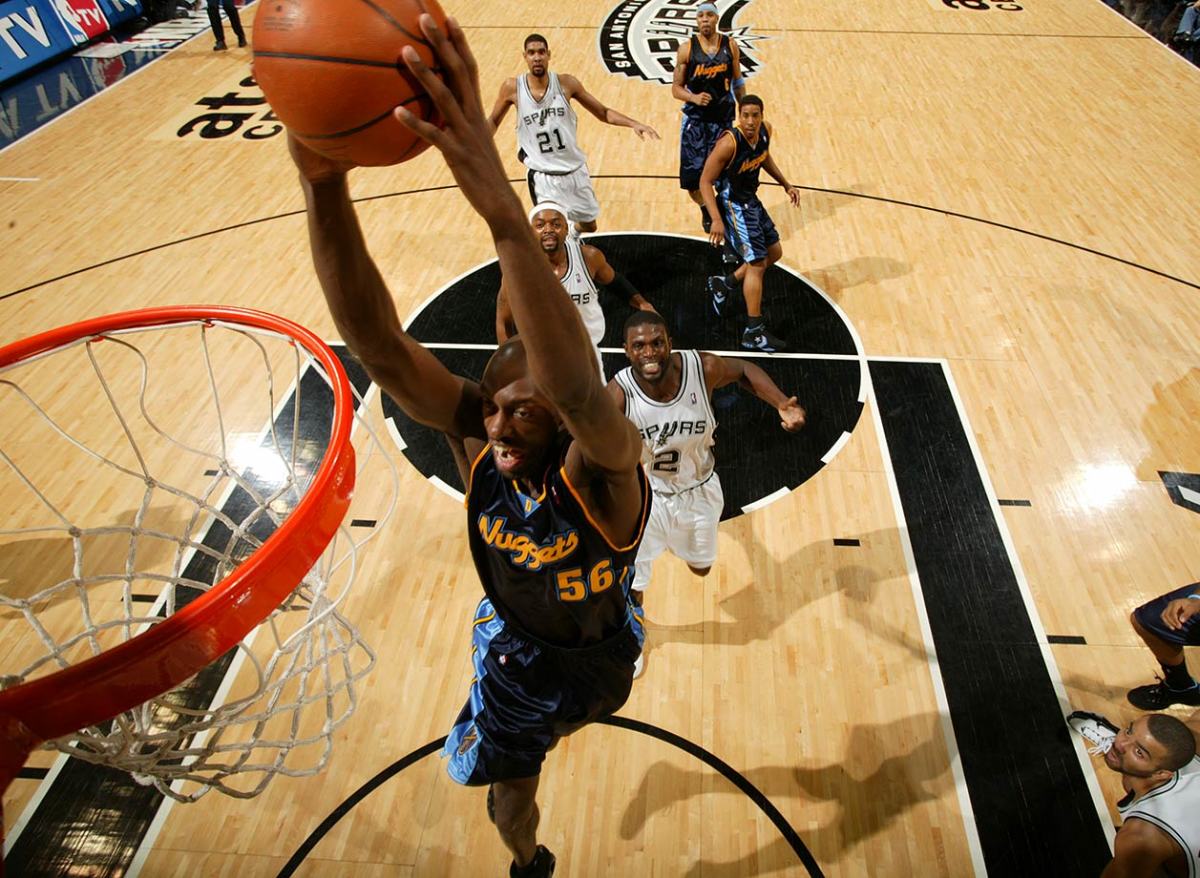
Hailing from the Netherlands, Elson was a second-round pick who would never make a major impact at the NBA level. He did start 54 games for Denver in 2006 and gain some fame for scuffling with Kevin Garnett in the playoffs that year. He won a title with San Antonio in 2007, starting 41 games that season.
57 — Hilton Armstrong
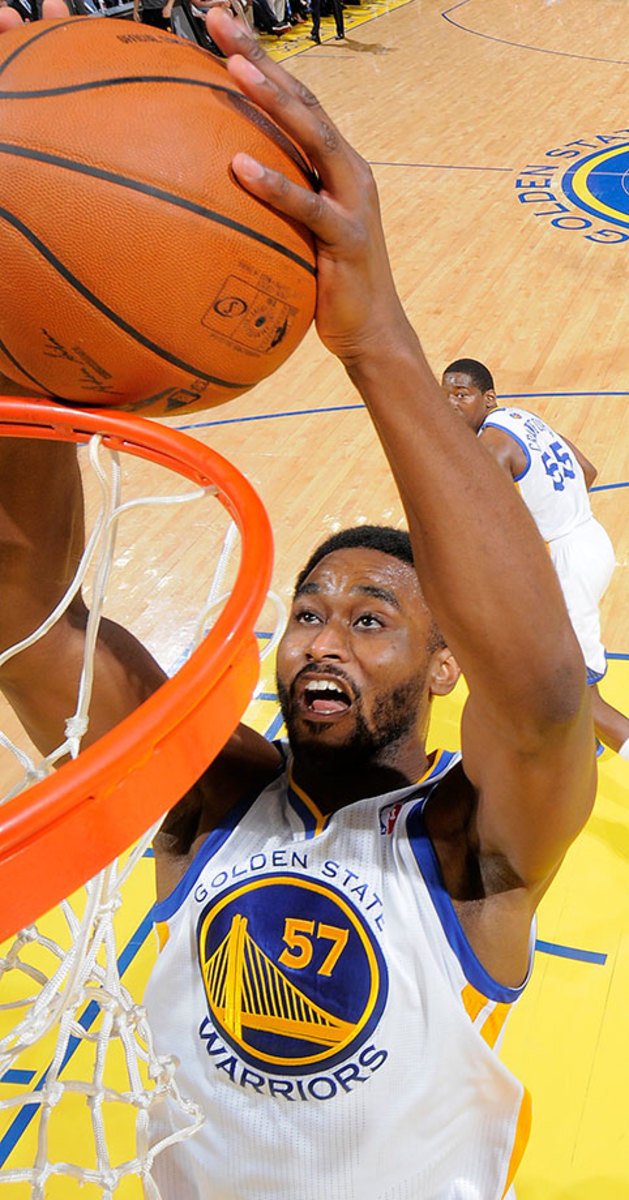
The UConn product and 12th overall pick in the 2006 NBA draft, Armstrong is the only player in NBA history to have worn #57. Armstrong donned the number in the 2013-14 season, in which he appeared in 15 games for the Golden State Warriors. Armstrong’s best year came in 2008-09, when he averaged 4.8 points and 2.8 rebounds for the New Orleans Hornets.
61 — Bevo Nordmann
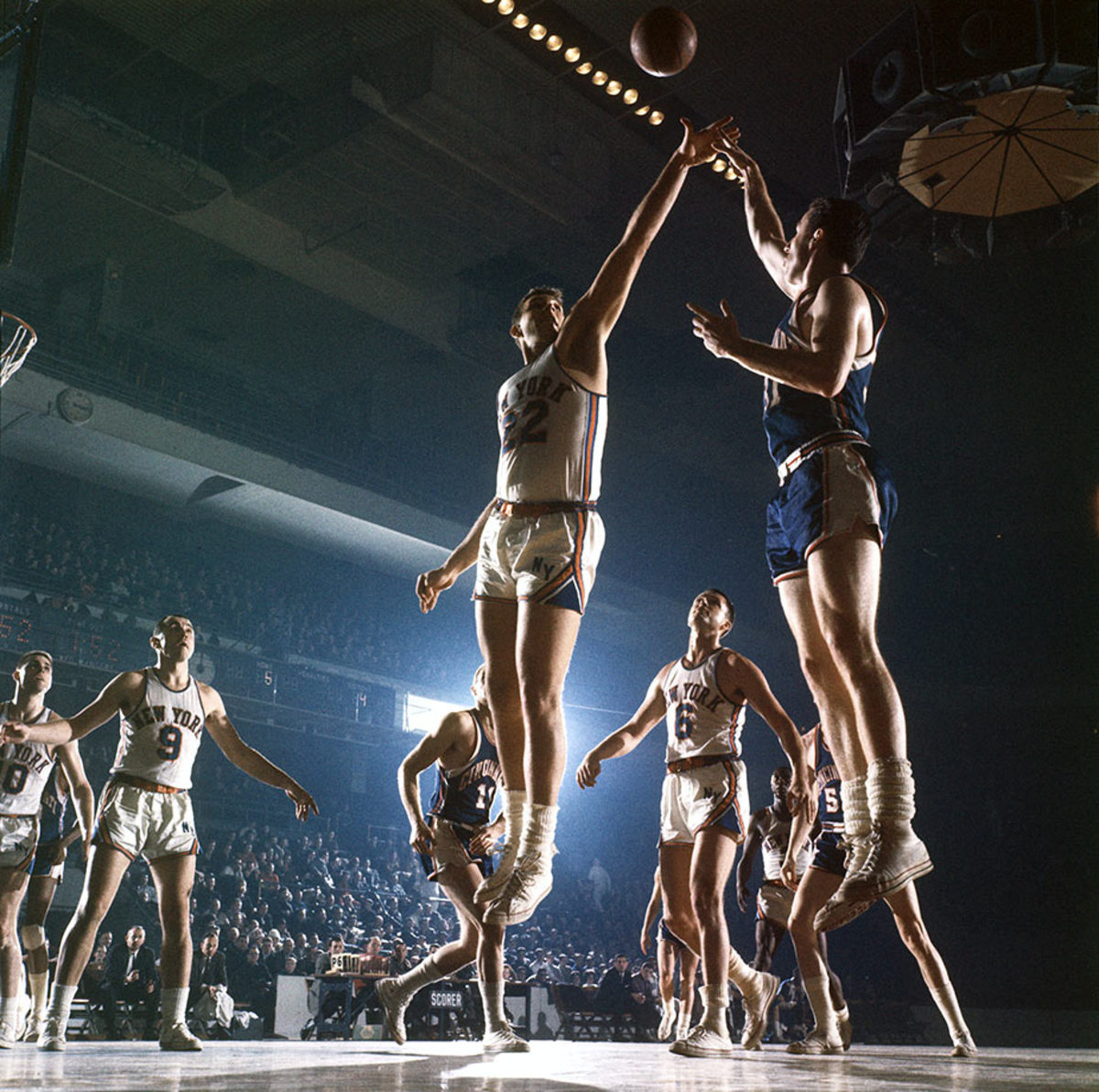
After the Cincinnati Royals selected him with the second pick in the third round of the 1961 NBA draft, Nordmann played just four seasons in the NBA. He wore No. 61 in his rookie season in 1961-62. Nordmann averaged 7 points and 6 rebounds for the St. Louis Hawks and New York Knicks (pictured here wearing No. 22) in the 1962-63 season. — Runner-up: Dave Piontek
62 — Scot Pollard
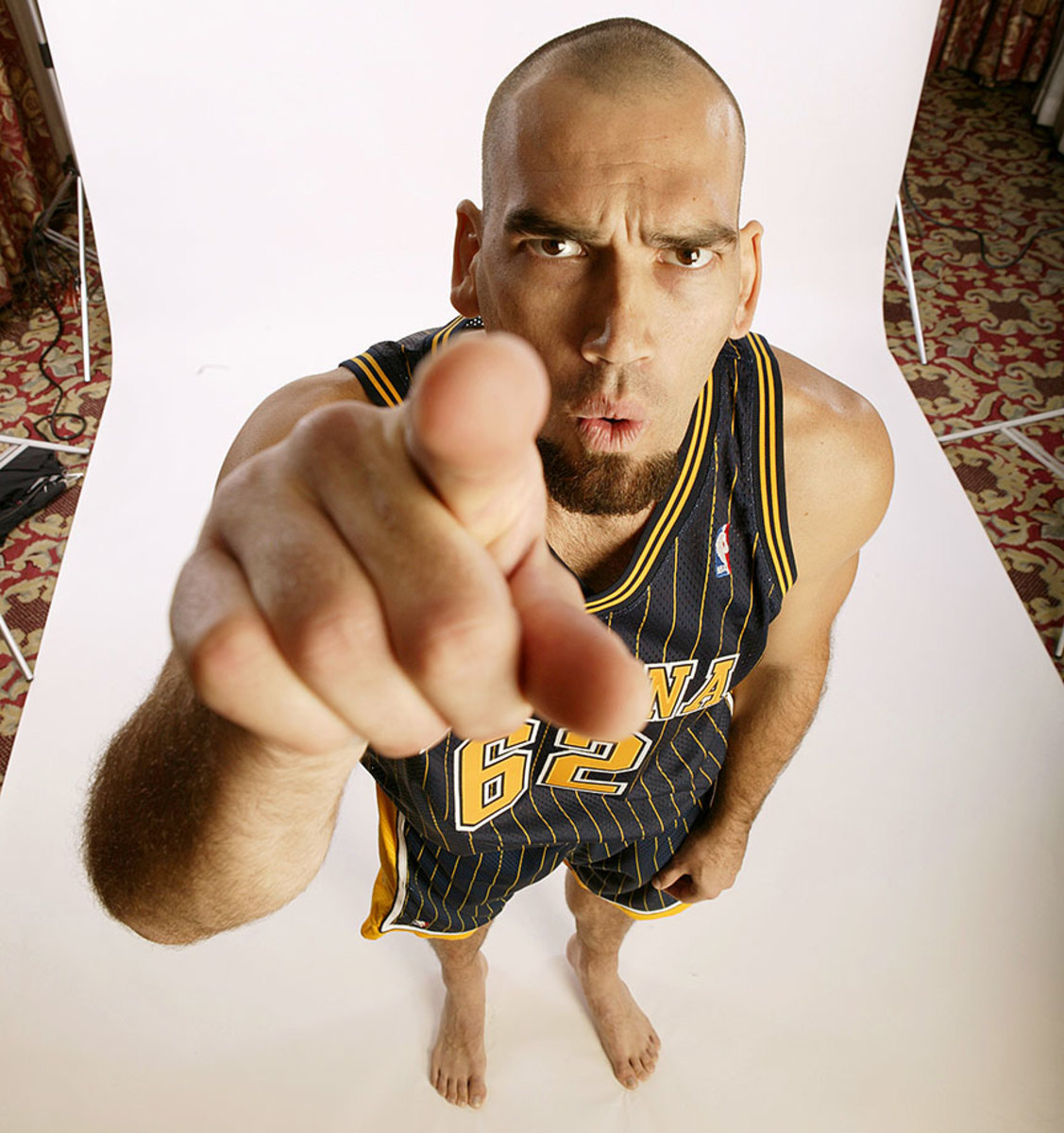
Pollard was notorious for his tough defensive play and variety of wild hairstyles, and not necessarily in that order. Still, he appeared in the playoffs in nine of his 11 seasons and made his greatest impact backing up Vlade Divac with the Kings in the early 2000s, occasionally filling in at power forward when Chris Webber was hurt.
70 — Frank Selvy
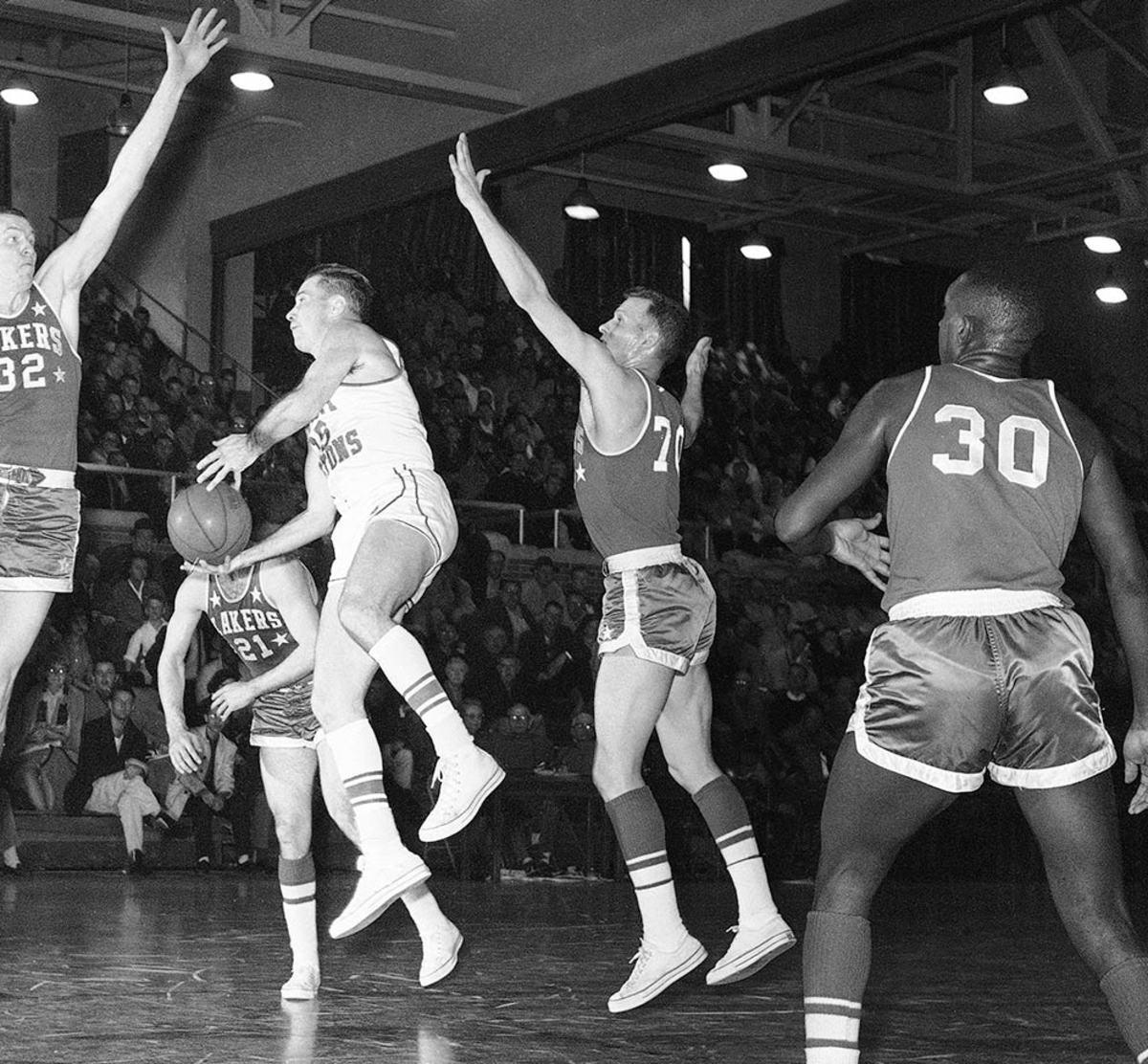
Selvy holds the NCAA Division I record for points in a game with 100 (yes, you read that right). He was the first overall pick in the 1954 NBA draft and averaged 10.8 points per game in ten seasons. Selvy was a two-time NBA All-Star and a teammate to Elgin Baylor and Jerry West with the Lakers.
71 — Willie Naulls
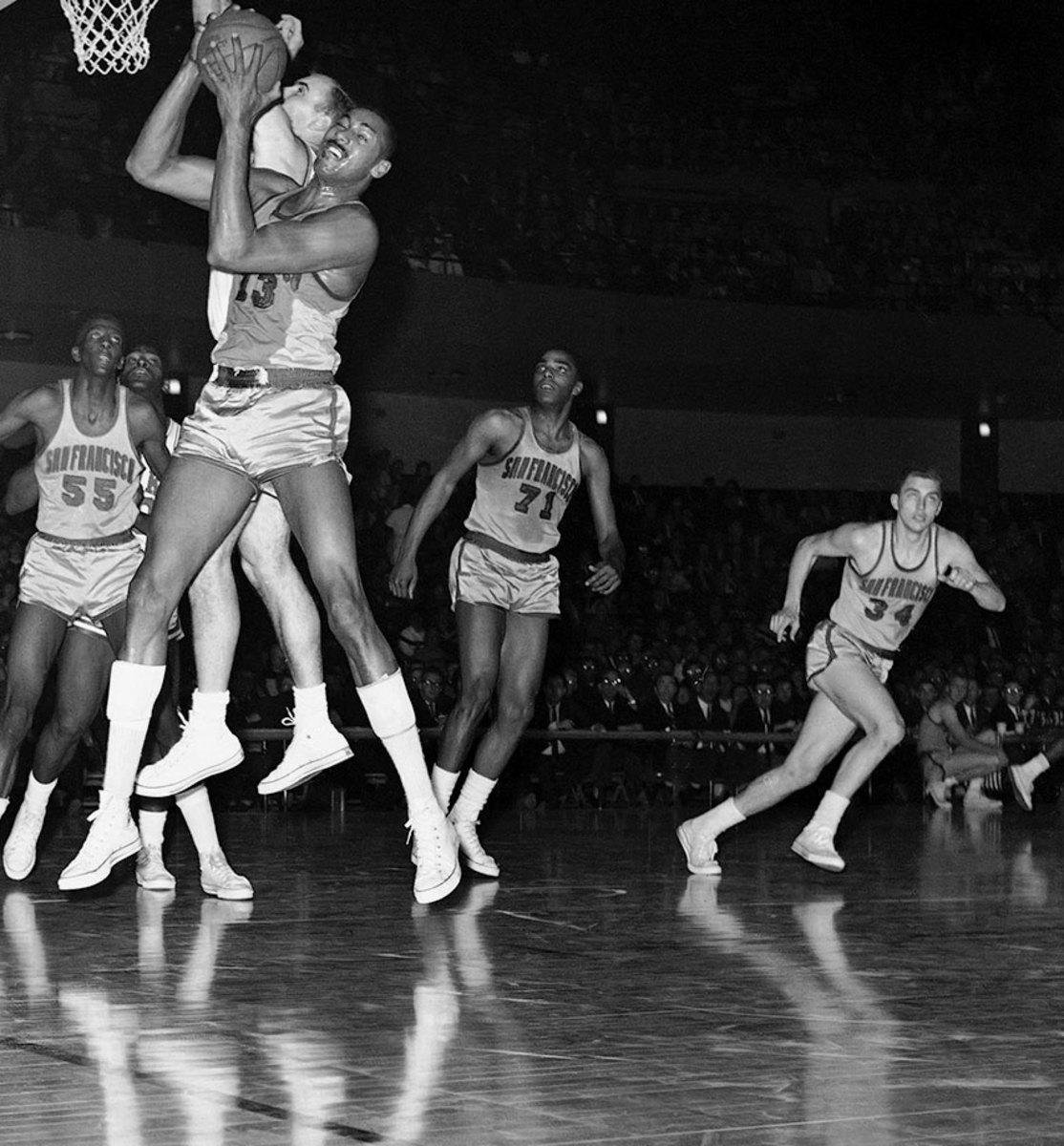
A four-time All-Star, Willie Naulls starred for the New York Knicks during the late 1950s and early 1960s. From 1959 to 1962, Naulls averaged over 20 points and 10 rebounds before game. He wore No. 71 for the Golden State Warriors for 47 games in the 1962-93 season after the Knicks traded him for Tom Gola. — Runners-up: McCoy McLemore, Bob Wiesenhahn
72 — Jason Kapono
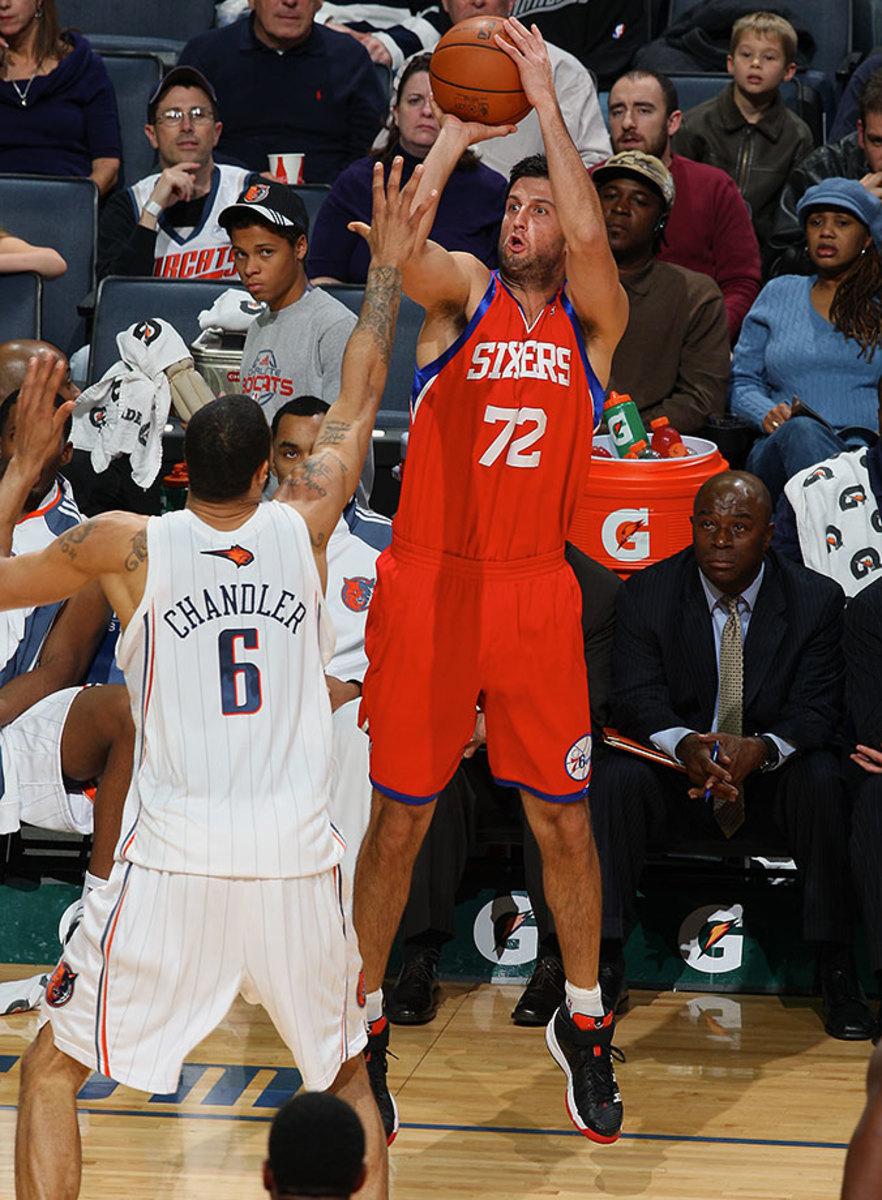
Kapono was the second-to-last pick of the 2003 NBA draft and had a relatively nice nine-year career as a role player known for his shooting ability. He led the league in three-point percentage with a 51.4% clip in 2006-07 as a member of the Heat, the year following Miami’s title win. He also outshot Dirk Nowitzki and Gilbert Arenas to win the shootout at All-Star weekend that year and would successfully defend that title in ‘08.. Kapono holds the distinction of blocking the first shot in Bobcats history as a member of Charlotte’s expansion roster.
73 — Dennis Rodman
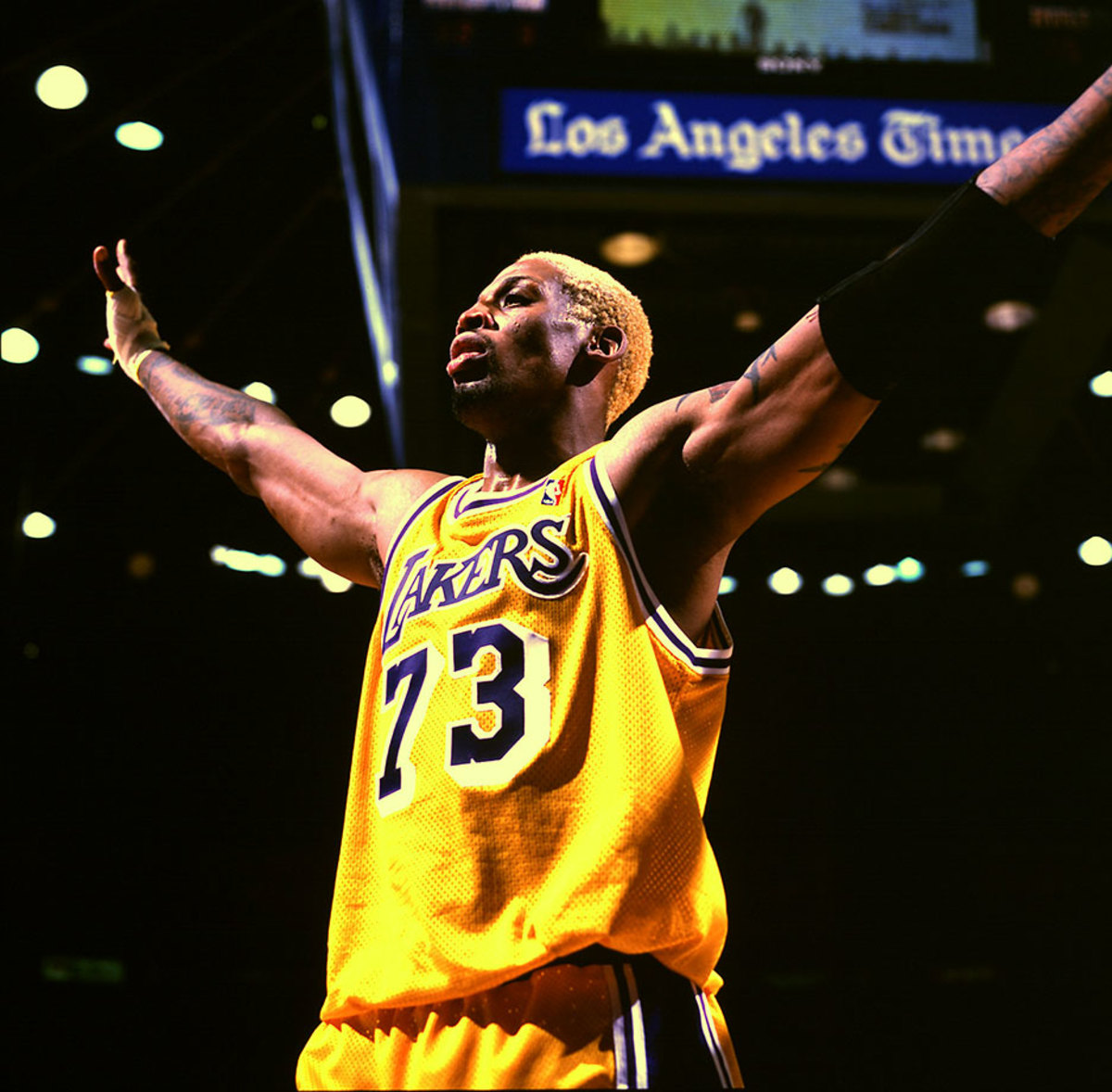
Rodman’s most famous for wearing No. 91, and is the only player to make this list twice, given he became the only player in NBA history to wear No. 73 when he suited up for the Los Angeles Lakers in the 1998-99 season. He’s a five-time NBA champion, winning two as a “Bad Boy” Piston and three with Jordan’s Bulls, and set an NBA record by leading the league in rebounding for seven straight seasons (1991-98).
76 — Shawn Bradley
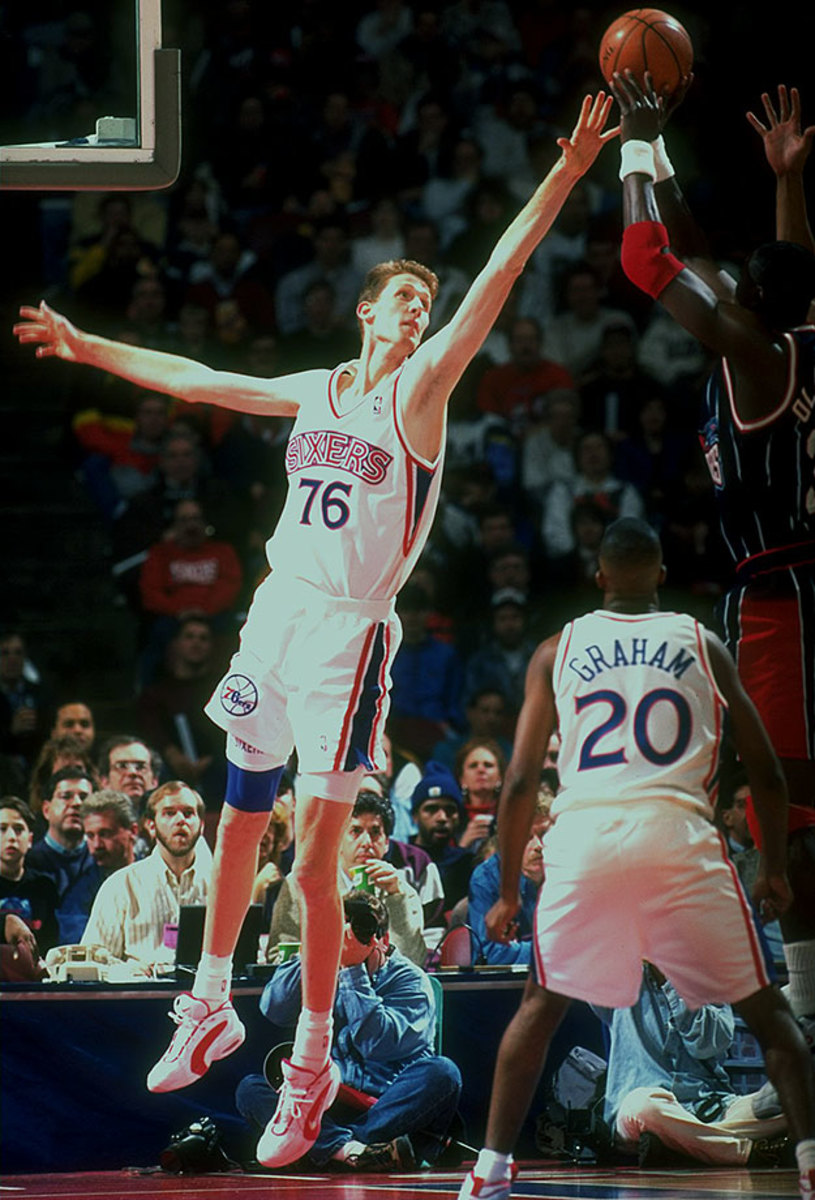
Standing 7’6”, Bradley’s height made him an NBA commodity and he enjoyed a solid career functioning primarily as one of the league’s best shot-blockers. He averaged three or more blocks per game in each of his first six seasons while also rebounding effectively and scoring when needed. Bradley also took a memorable turn as a supporting character in Space Jam.
77 — Gheorghe Muresan
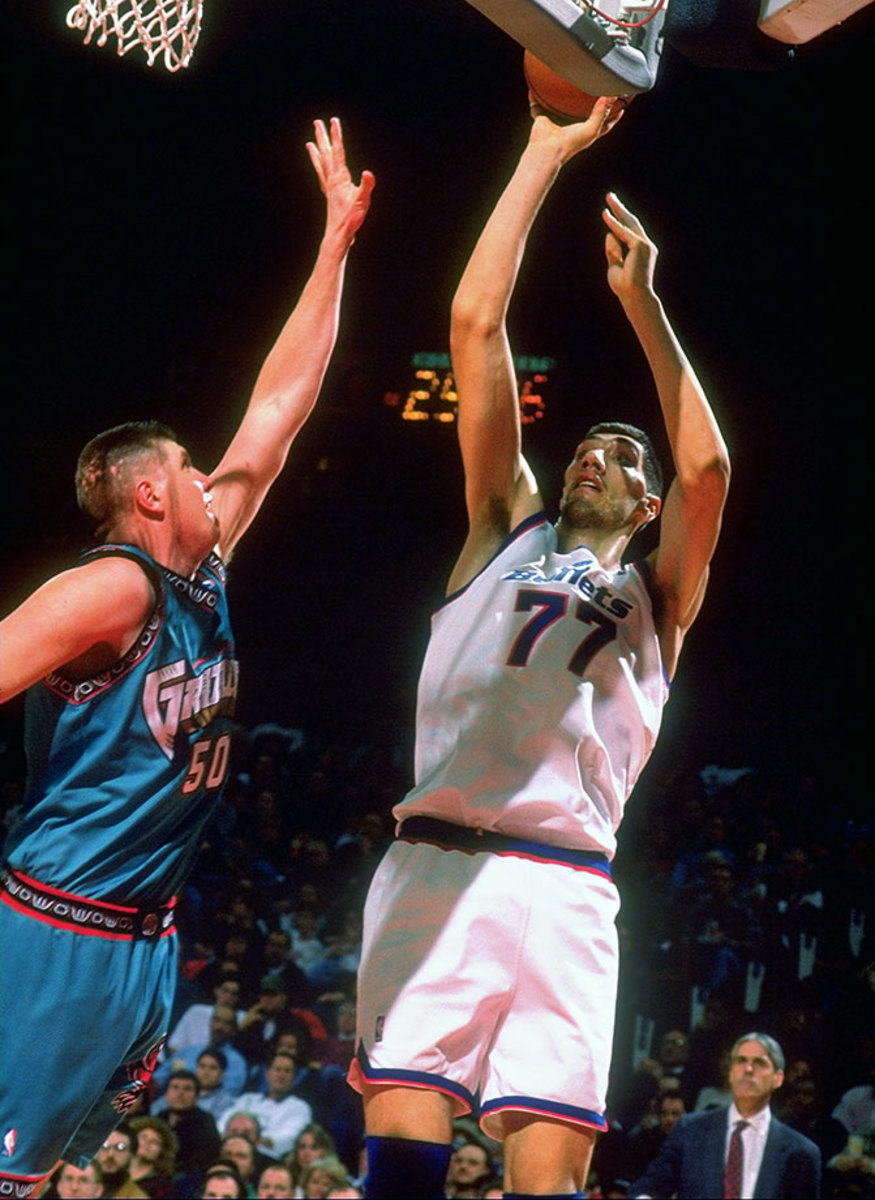
At 7’7”, Muresan is the tallest player in the NBA history, along with the late, great Manute Bol. Muresan earned the 1995-96 Most Improved Player award after averaging 14.5 points, 9.6 rebounds, 2.2 blocks per game while making a league-leading 58.4% of his field goals. — Runners-up: Vladimir Radmanovic, Jake Voskuhl
83 — Craig Smith
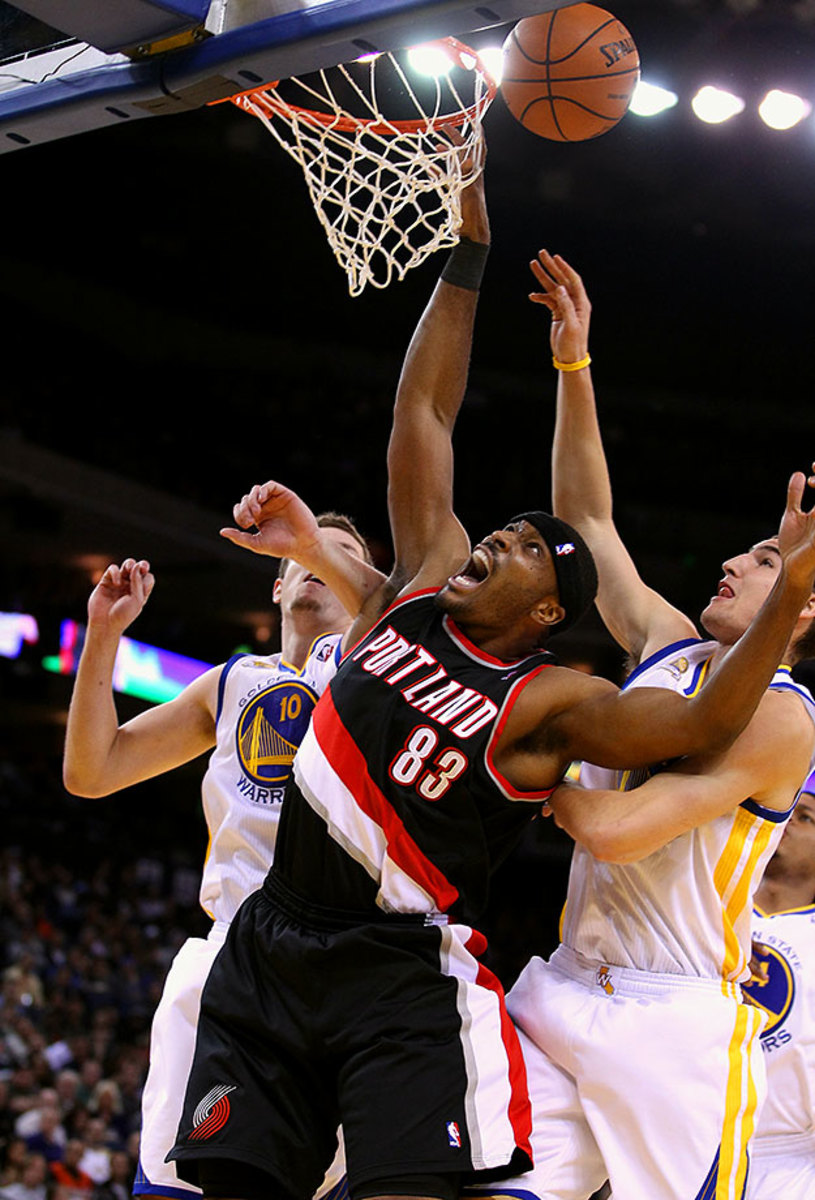
The 36th overall pick in the 2006 NBA draft, Smith is the only player to wear No. 83 in league history. Smith wore the number when he appeared in 47 games for Portland in the 2011-12 season. His best season came in 2008-09, when he averaged 10.1 points and 3.8 rebounds per game for Minnesota.
84 — Chris Webber
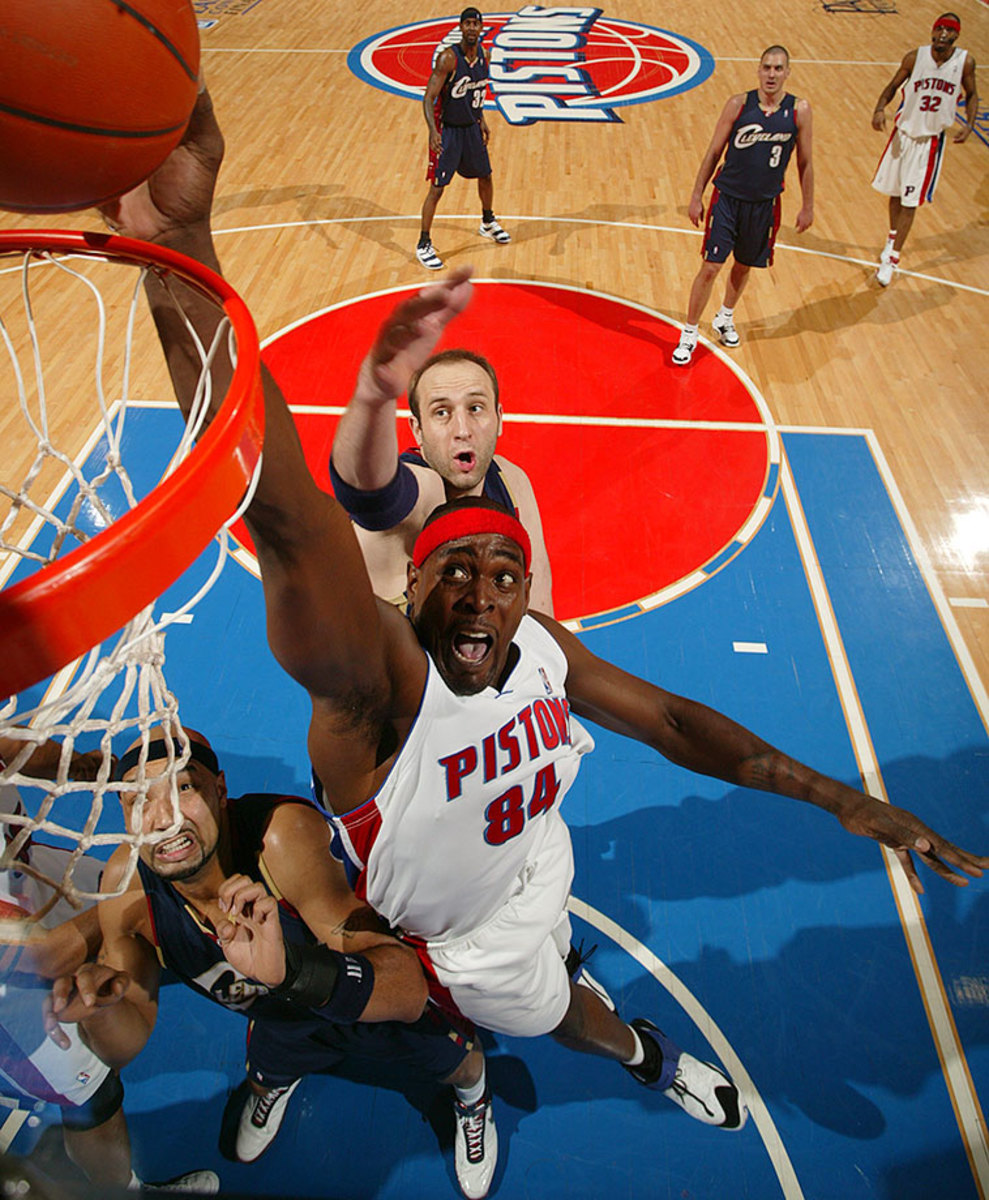
C-Webb only donned No. 84 after his prime, in his lone part of a season with Detroit after being traded in 2007. But Chris Webber was a dominant force before a serious knee injury in the 2003 playoffs, one of the NBA’s best post passers and dynamic power forwards. He was a five-time All-Star, averaging 20.7 points and 9.8 rebounds in 15 seasons. But the hopes of the entertaining Kings teams of the early 2000s went down when Webber did, and he would retire without a title to his name.
85 — Baron Davis
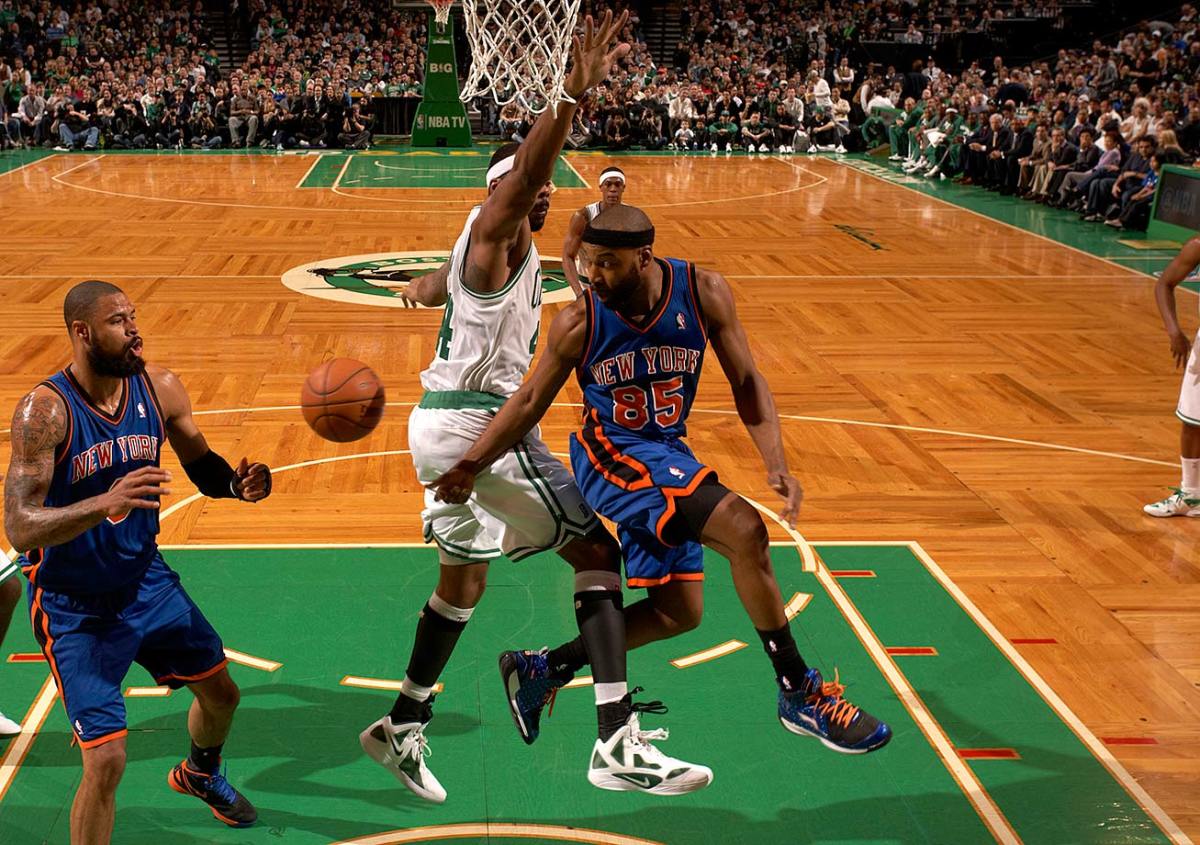
After the Hornets selected him third overall in the 1999 NBA draft, Davis became a two-time All-Star. He most notably led the eight-seeded Warriors to a 4-2 first round upset of the top-seeded Mavericks. He’s the only player in NBA history to wear No. 85, doing so for both the Cavaliers and Knicks.
86 — Semih Erden
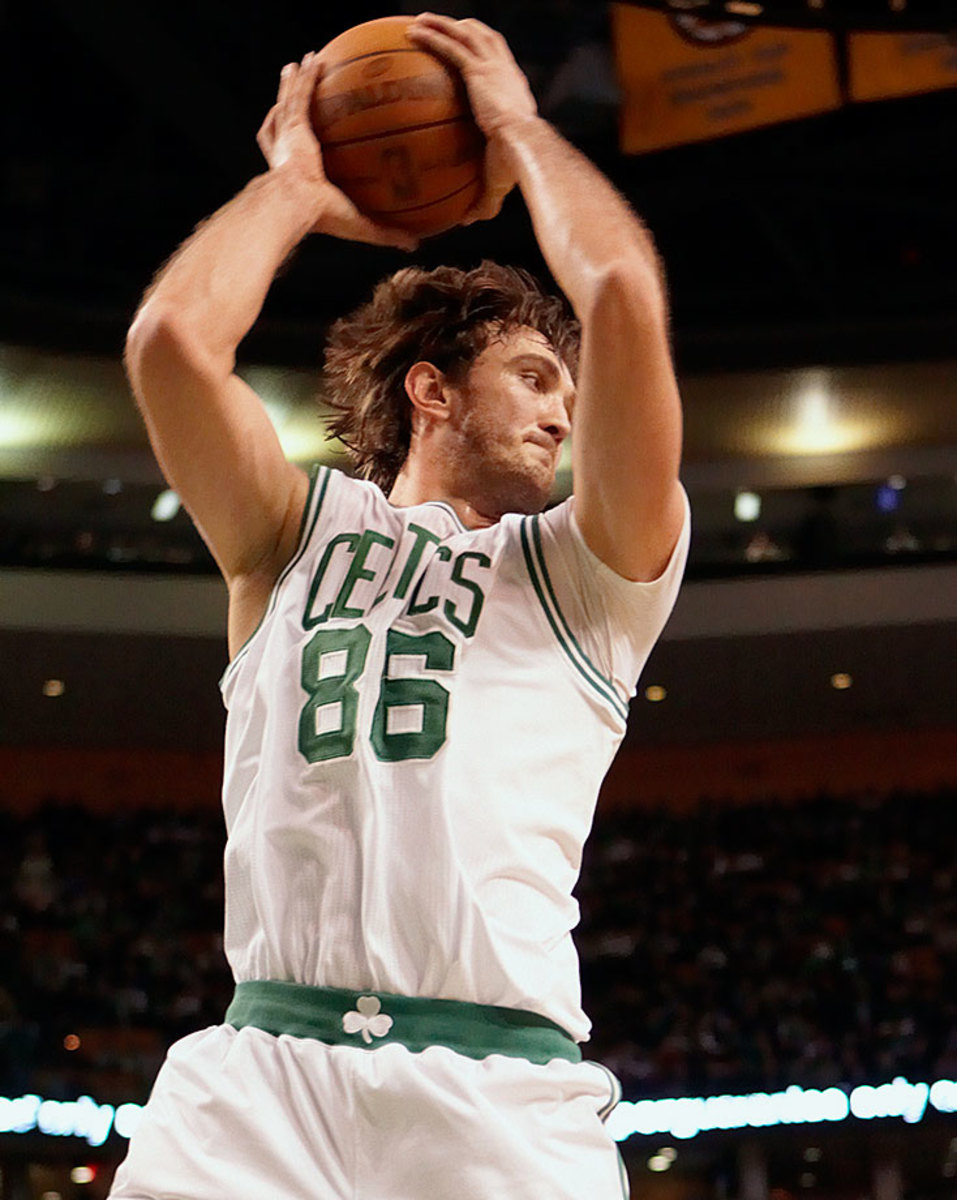
Erden, a 7-foot Turkish center, played three NBA seasons and played in just 69 games. He started nine games for the Cavaliers in 2011-12 and headed back overseas the next season, playing in his native country ever since. — Runner-up: Chris Johnson
88 — Nicolas Batum
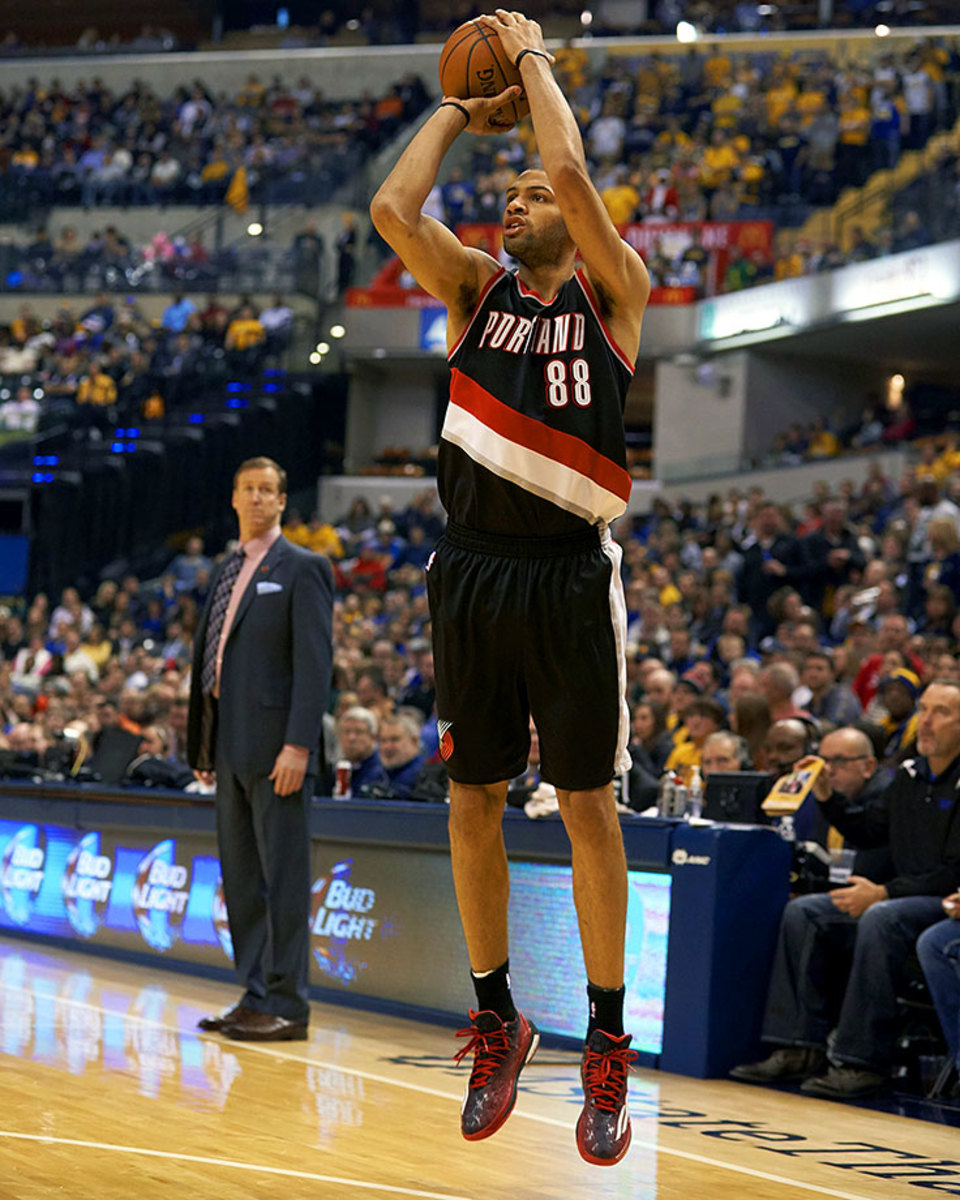
Batum, a late first-round pick, was traded to Portland from Houston for the rights to Darrell Arthur and Joey Dorsey on draft day 2008. His career’s been solid, with a well-rounded game and good size and ball skills. But 2012-13 was a highlight year for Batum, when he averaged 14.3 points, 5.6 rebounds and 4.9 assists. The Frenchman was traded to Charlotte in the off-season and will start fresh as a Hornet this fall. — Runner-up: Antoine Walker
89 — Clyde Lovellette
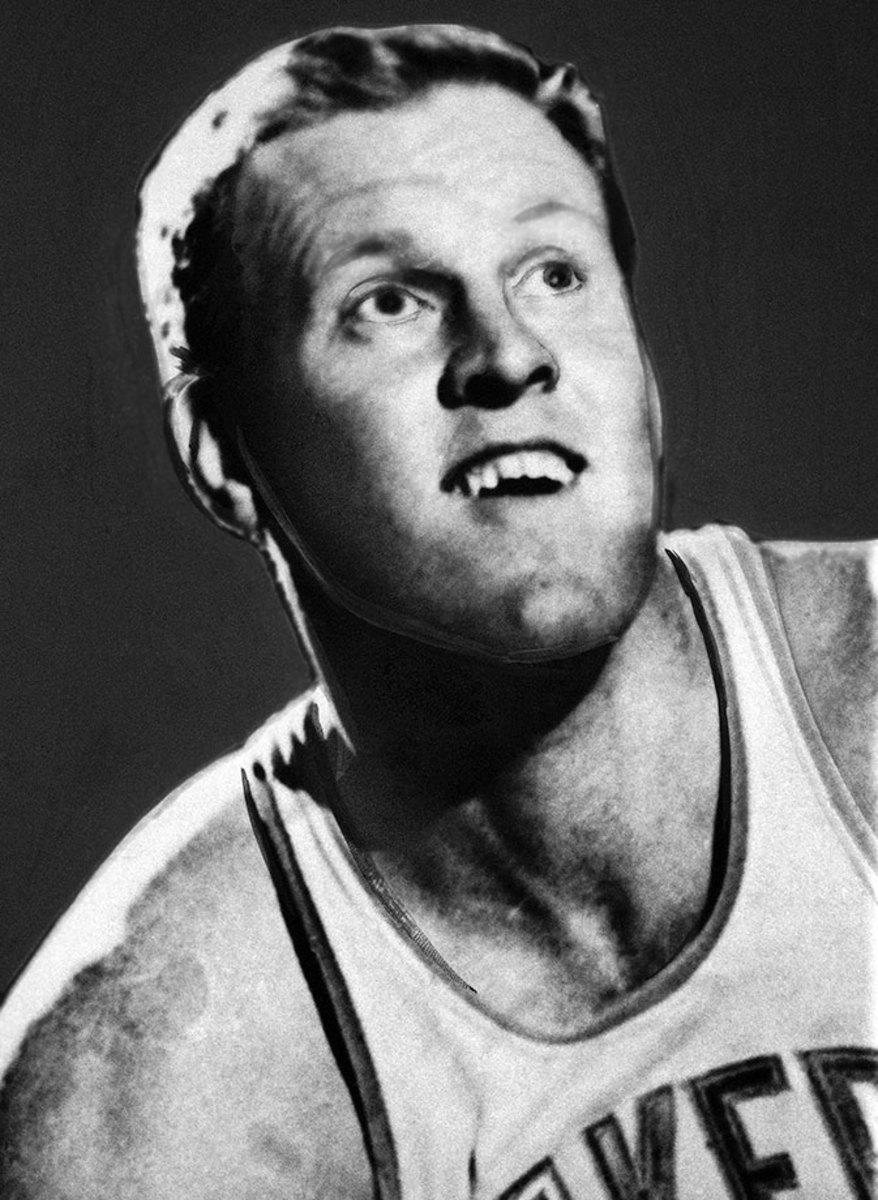
The ninth overall pick in the 1952 NBA draft, Lovellette wore No. 89 in his rookie season for the Minneapolis Lakers. A four-time All-Star, Lovellette averaged 17 points and 9.5 rebounds per game during his 11-year career. Lovellette was part of three NBA championship teams. — Runner-up: Louis Amundson
90 — Drew Gooden
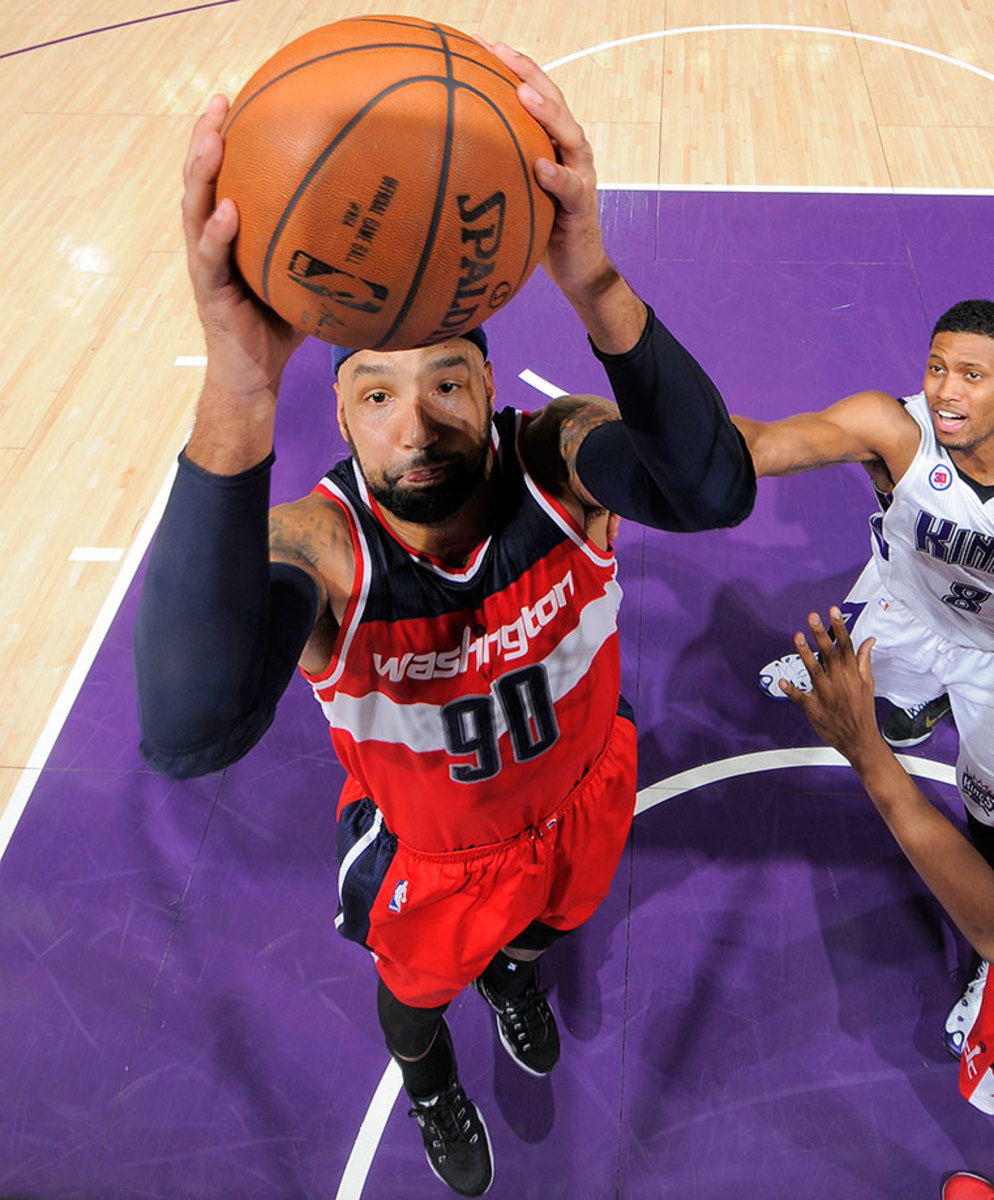
A number of NBA stops haven’t kept Gooden from posting decent production, though he has not quite justified his fourth overall selection in 2001. He came into a role with the Wizards last season and averaged double figures in scoring every season up until 2012.
91 — Dennis Rodman
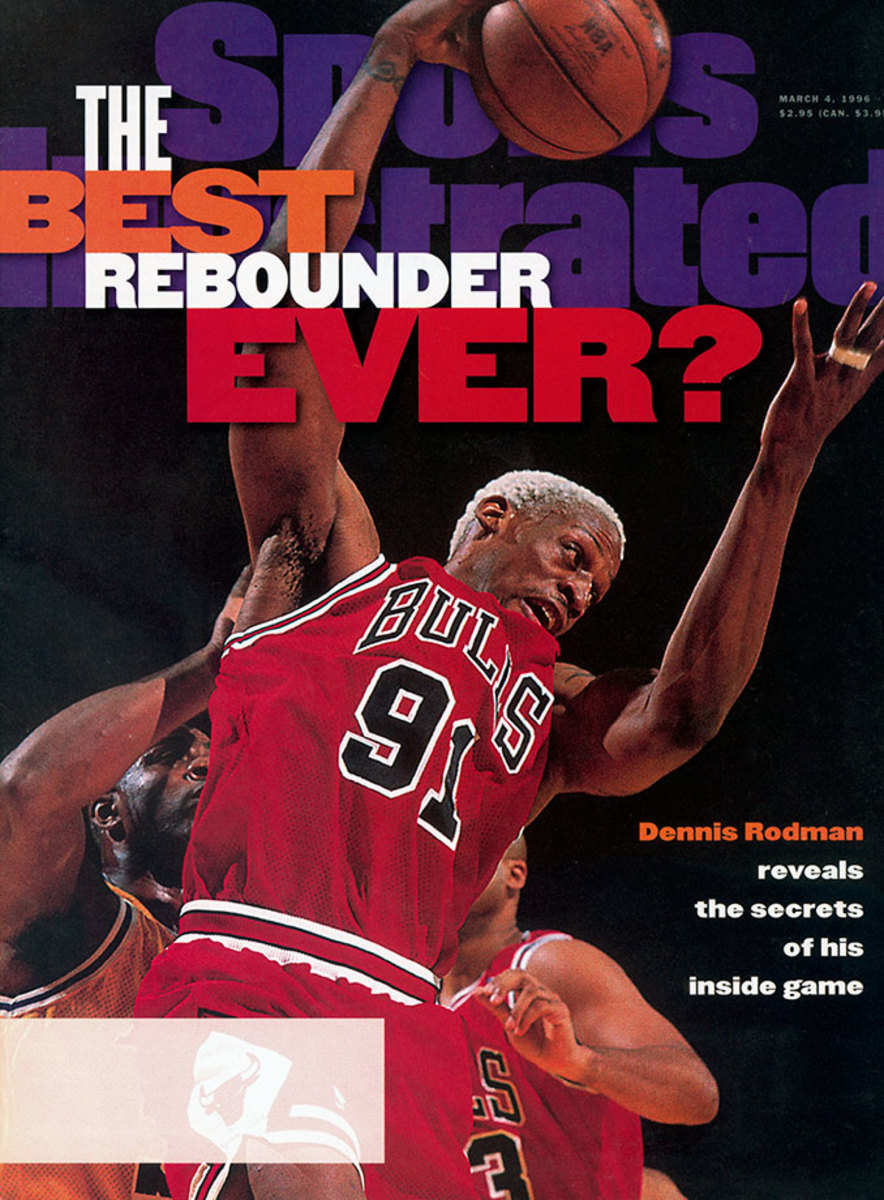
Rodman, appearing for the second time on this list, retired with a reputation as one of the NBA’s greatest rebounders ever, not to mention a strong defender and enormous off-court presence with a penchant for dying his hair on the regular. He won five titles, was Defensive Player of the Year twice, made seven All-Defensive first teams and two All-Star teams, and became one of America’s most polarizing athletes in the process.
92 — DeShawn Stevenson
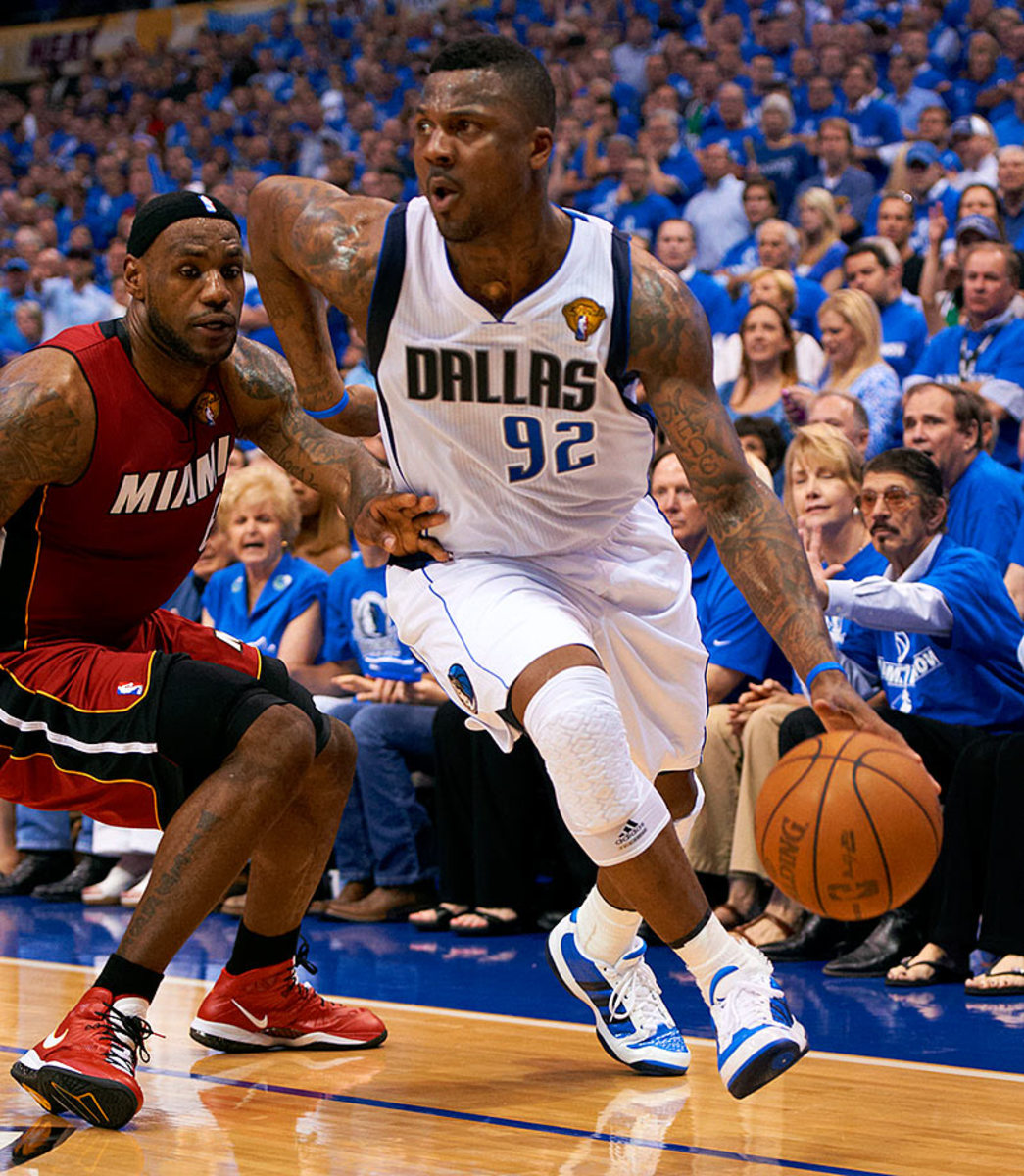
Stevenson never came close to his prep-star hype, but bounced around supplying average production much of his career. He had a moment for the Mavericks during their 2011 title run, famously proclaiming himself the “LeBron stopper.” And hey, Dallas topped Miami. For all we know, he still holds that title.
93 — Metta World Peace (Ron Artest)
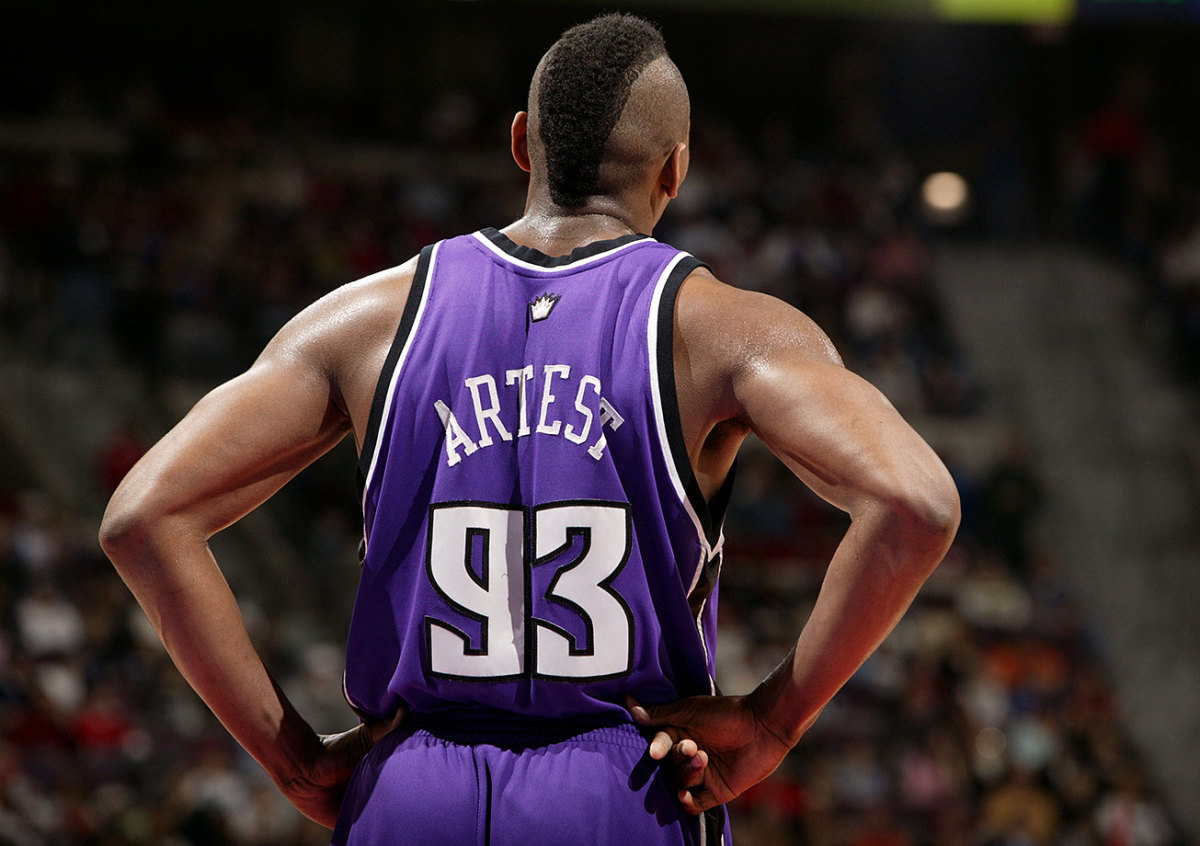
Before changing his name to Metta World Peace, Ron Artest wore No. 93 from 2006-08 with the Sacramento Kings. Artest donned seven different numbers in his career, and his personality and antics both on and off the court have overshadowed just how good he was in his prime. An elite, versatile defender for many years, Artest was averaging 24.6 points per game in 2005 before being suspended for the “Malice at the Palace” incident and missing the entire season.
94 — Evan Fournier
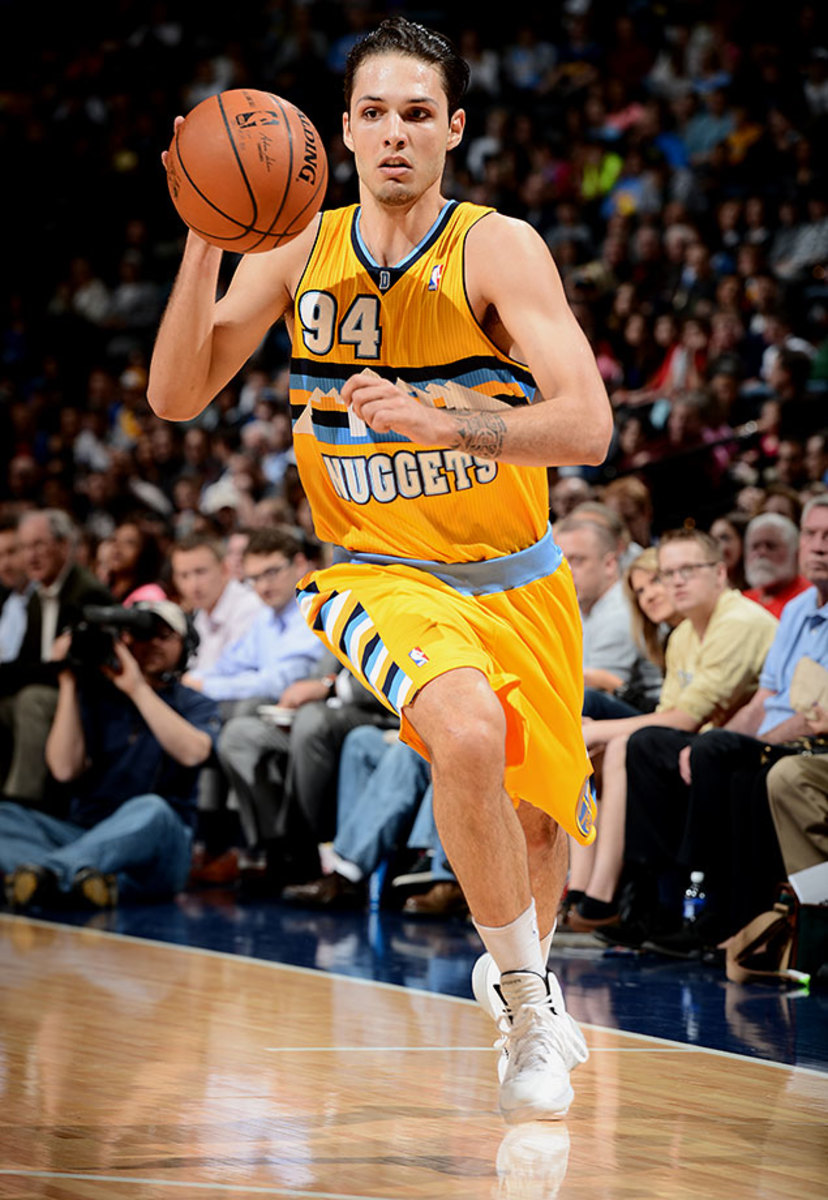
The French guard took a step forward last year at age 22, averaging 12 points per game for the Magic. He’s become a member of the French national team as well. The best may still be to come.
96 — Metta World Peace (Ron Artest)
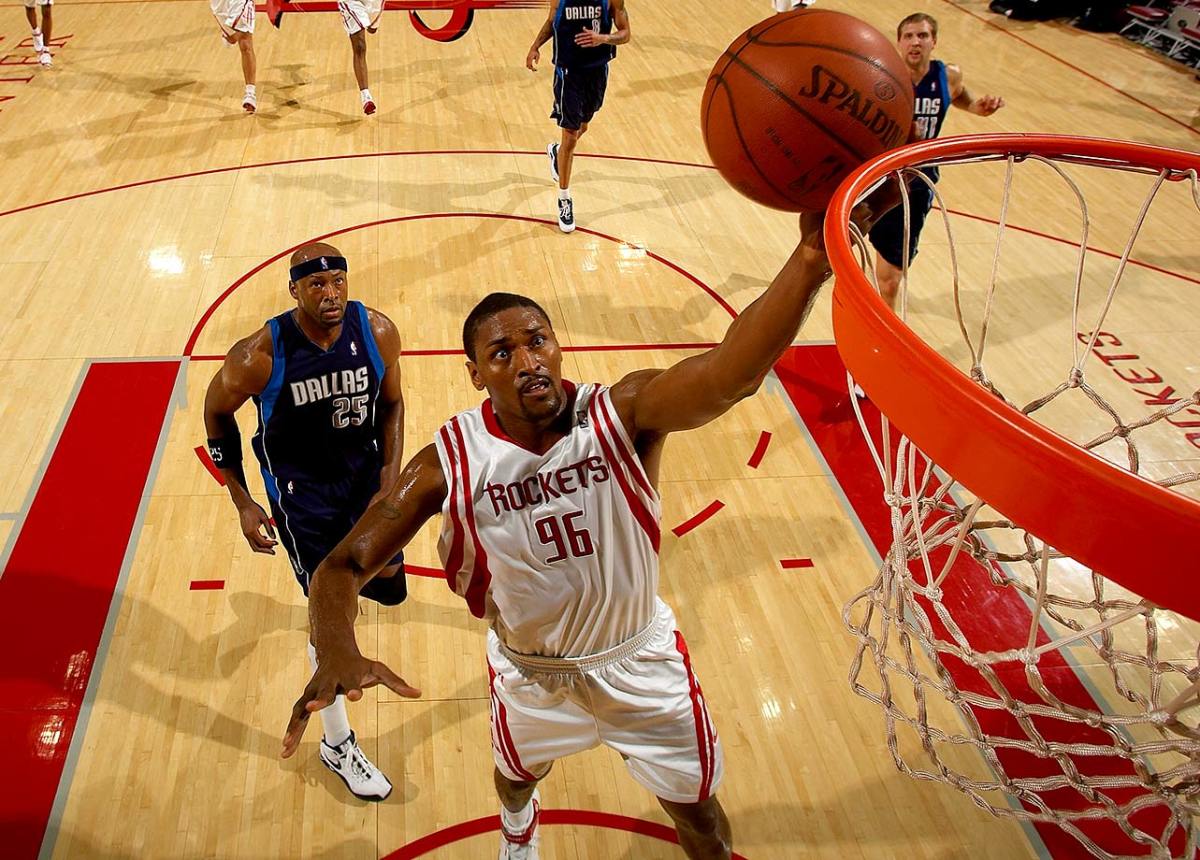
Not surpisingly, a player who donned seven different numbers in his career would appear twice on this list. Metta World Peace, then Ron Artest, wore No. 96 in the 2008-09 season with the Houston Rockets. He led the team in three-pointers and steals, finishing second in scoring behind Yao Ming. He won a title with the Los Angeles Lakers the following season.
98 — Jason Collins
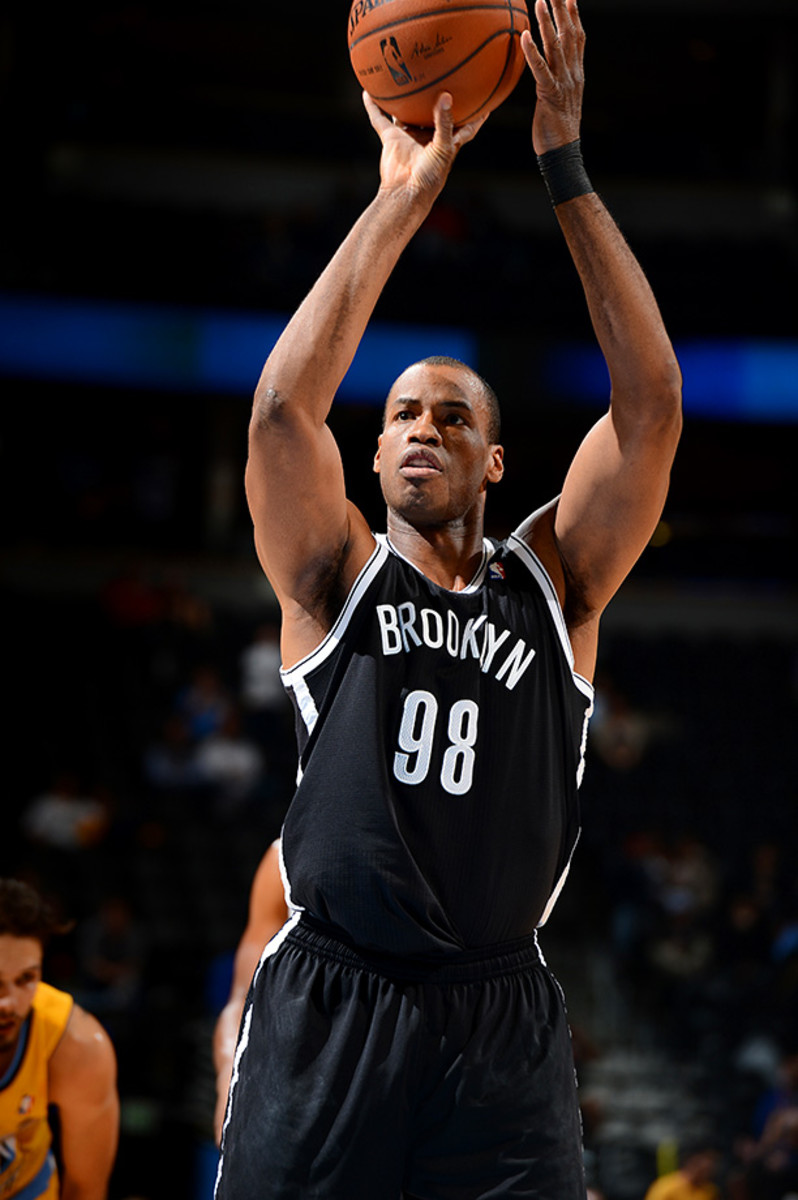
Collins never lived up to his first-round selection, but carved out a niche as a defensive-minded reserve center and hung around for 13 seasons. He averaged 3.6 points and 3.7 rebounds for his career. Collins became the first openly gay NBA player in 2014 and chose number 98 to honor Matthew Shepard, who was murdered in a 1998 hate crime.
99 — George Mikan
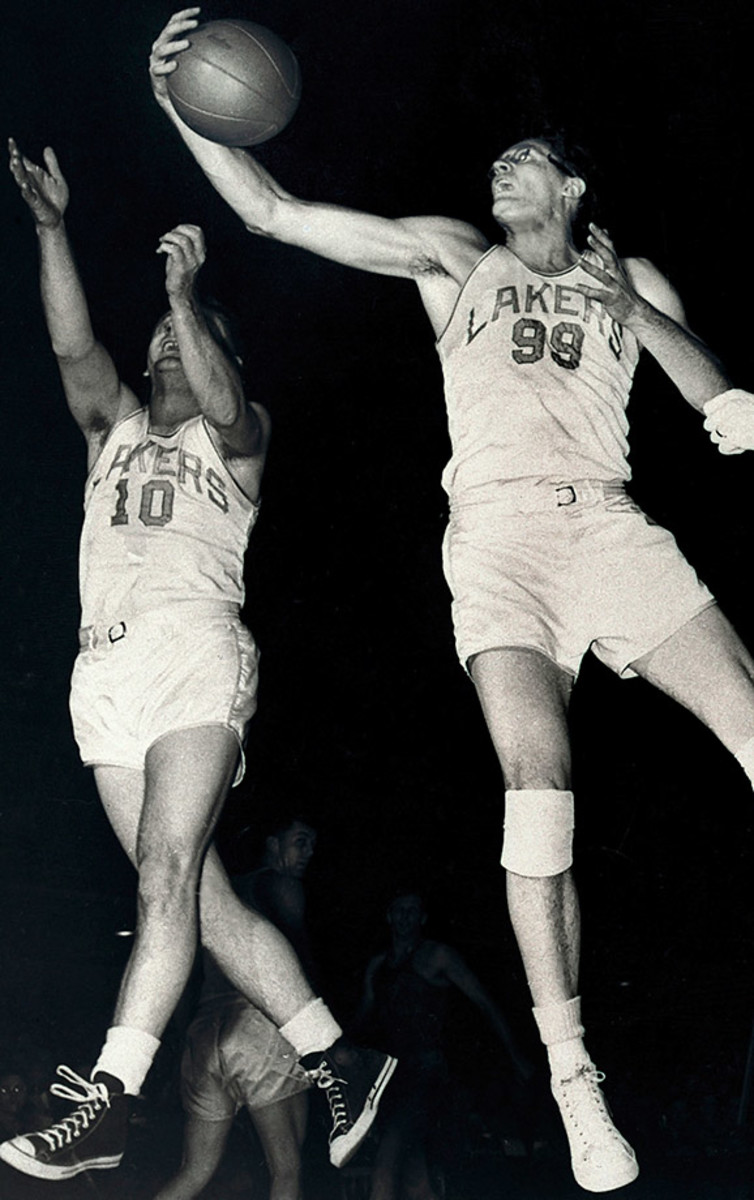
One of the game’s original superstars, Mikan was quite literally a giant among men at 6’10” in the 1940s and 1950s. He led the Lakers to four NBA championships and one BAA title before becoming an NBA franchise. Mikan was a four-time All-Star and was named one of the 50 greatest players in NBA history in 1996.
"When I was growing up [in Riverside, Calif.], my father had a little area of concrete for our backyard basket," Miller recalled. "My first goal was to master every shot in that area. After I did that, I said, 'Dad, we need more concrete.' Eventually we had an area that went back maybe 22 feet from the basket. Any more than that was in my mother's rose garden, and I shot from there, too. I apologize, but it paid off."
Miller's sixth basket came on a three-pointer from the right side at the 6:59 mark. The play actually began with Miller setting a pick down on the baseline. "A lot of times I begin the play by being the screener," said Miller. "That's because if a shooter goes down and sets the screen, chances are the defense won't double on the guy he's setting the screen for because that means a shooter will be free. Like with the Utah Jazz, you always see John Stockton setting the screen for Karl Ma-lone because that makes it hard for the defense. You can't slough off either one." In this case Miller eventually got free when he came off a down screen. Then he got the ball from Thompson and released a three-pointer a split second before Starks ("John was almost crying by this time," Miller said) could recover.
"There's no way to learn quick release except practice," said Miller. "The best I ever saw was Drazen Petrovic [the New Jersey Net guard who died in a car accident in Germany in June 1993]. Man, what a release. I think it's a real advantage for a shooter."
Miller's seventh basket was a fortuitous bit of business that occurred when Pacer forward Dale Davis drove to the hoop on a fast break, nearly running over Starks and the other New York guard, Derek Harper, and awkwardly passed the ball out to a wide-open Miller. Standing just a few feet from the Knick bench and their wildly gesticulating coach, Pat Riley, Miller drained his fifth and final three-pointer of the quarter. (Why Starks by this point was not stuck on Miller like flypaper is anyone's guess.)
After Miller released the shot, he kept his right arm extended in the air for a few seconds, a gesture that has infuriated opponents in the past. "I don't do it to taunt anyone," Miller said. "I do it because when my father taught me to shoot, he taught me to extend that arm and keep it up there real high. That's how you assure yourself that you're following through." That's probably true, but by now Miller is clearly aware of the taunting aspect, too.
"I also keep my eyes on the ball after I let it go, whereas most players watch the basket," he said. "But if I watch the ball, I can see the rotation, the way it looks in the air, and maybe learn something for the next shot. I watched Joe Dumars when we were teammates on Dream Team II, and he does the same thing."
Miller's eighth and final field goal came at 3:24 and gave Indiana an 83-79 lead. Moving left to right, he took a pass from forward Derrick McKey and simply jumped over the 6'5" Starks, who was now playing him tight, to release a 19-footer. Nothing but net.
"I don't really distinguish between long jumpers and short jumpers," said Miller. "The more important difference is which way I'm moving. That kind of shot, moving toward the right, is obviously a more natural shot for a righthander because you're making the catch on the same side of your body where you're going to go up for the shot. I get that off faster and almost always lean in toward the basket.
"The harder shot is the one coming the other way, when I'm coming off a pick from right to left," Miller said. "A lot of times I fall away on that shot and make an adjustment with my body, maybe throwing my right leg up in the air to keep the defender away from me. In practice you should work on both kinds of jumpers. They won't let you have one side or the other in the NBA."
The tape concluded with Miller, having made four free throws down the stretch, taking an inbounds pass at the final buzzer and slamming the ball off the Garden floor in jubilation.
But the scene in the office ended with Miller slamming his hand off a chair in frustration. "The Knicks should not have made it to the Finals!" he said. "We were the better team. This year it's us. I'm going to take us there."
Indeed, Indiana has a shot. And that's largely because Reggie Miller has one.
